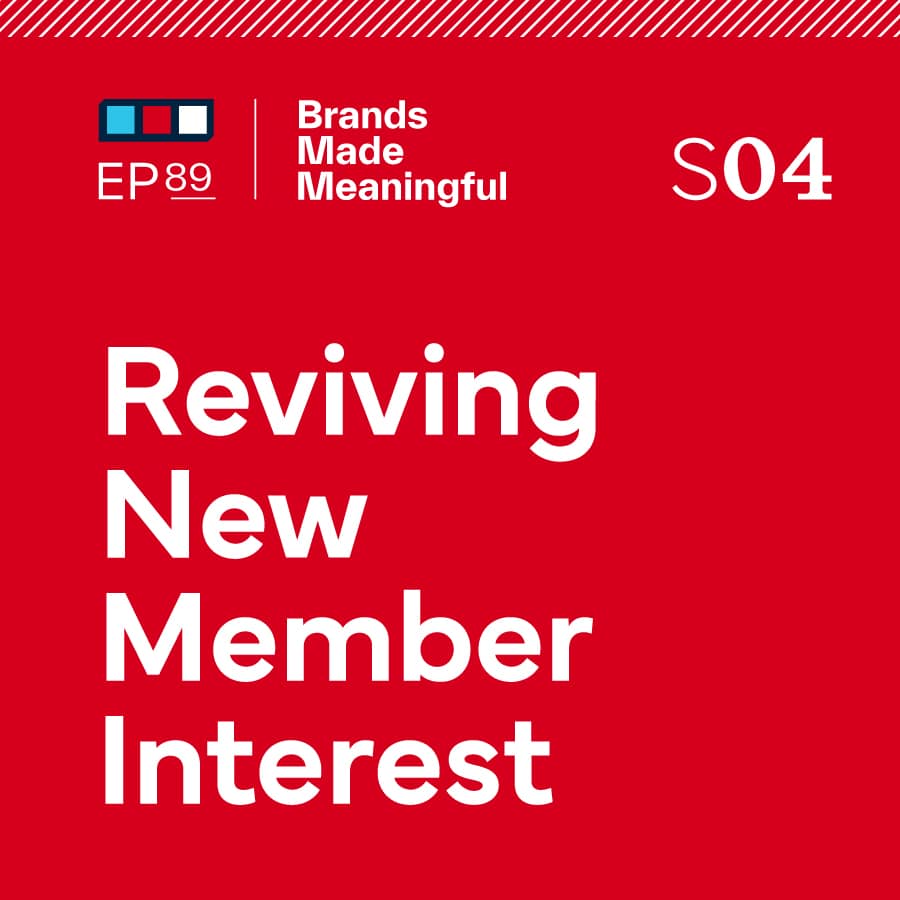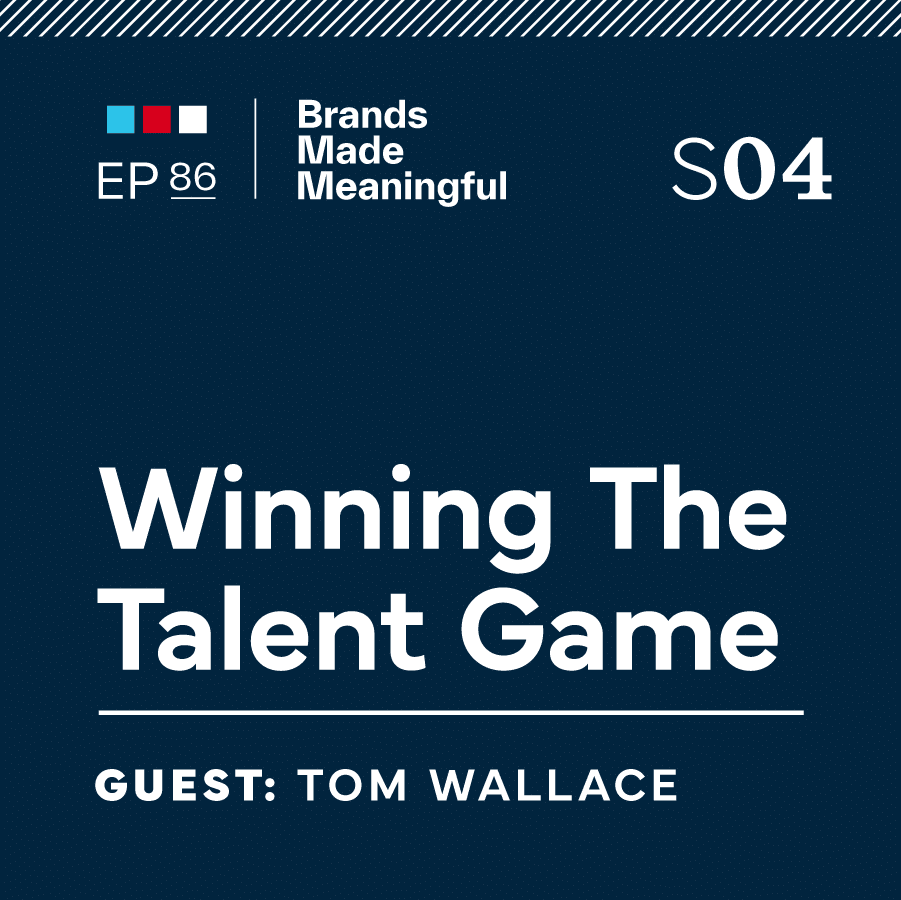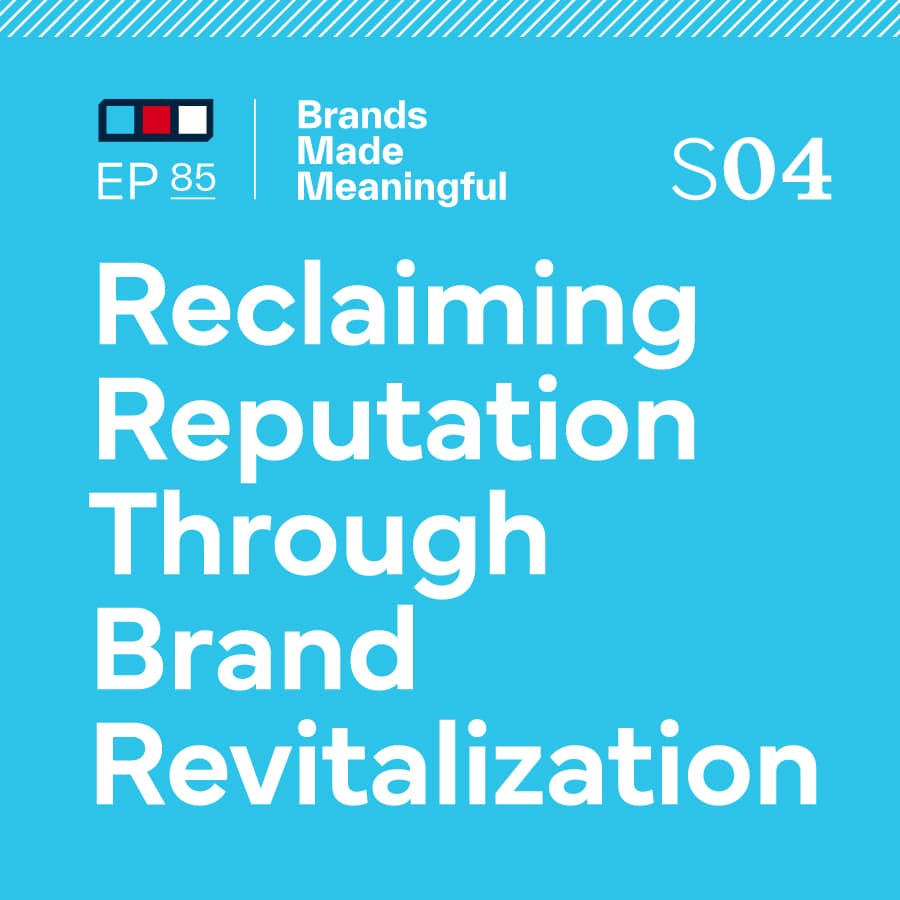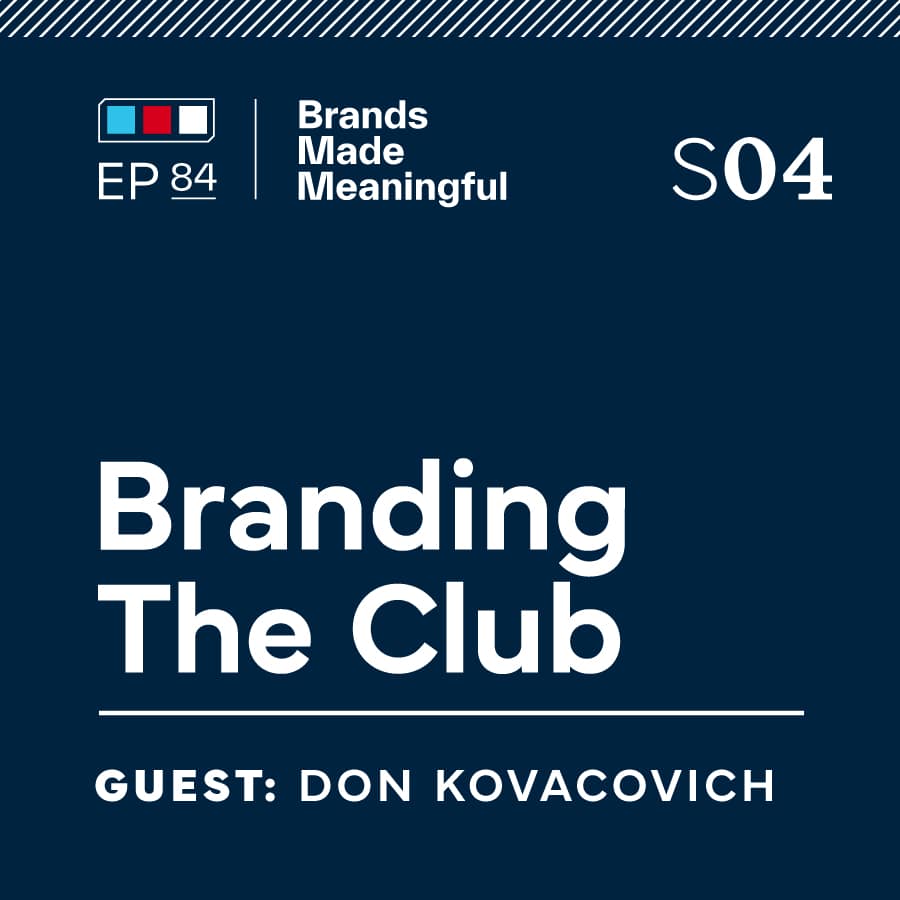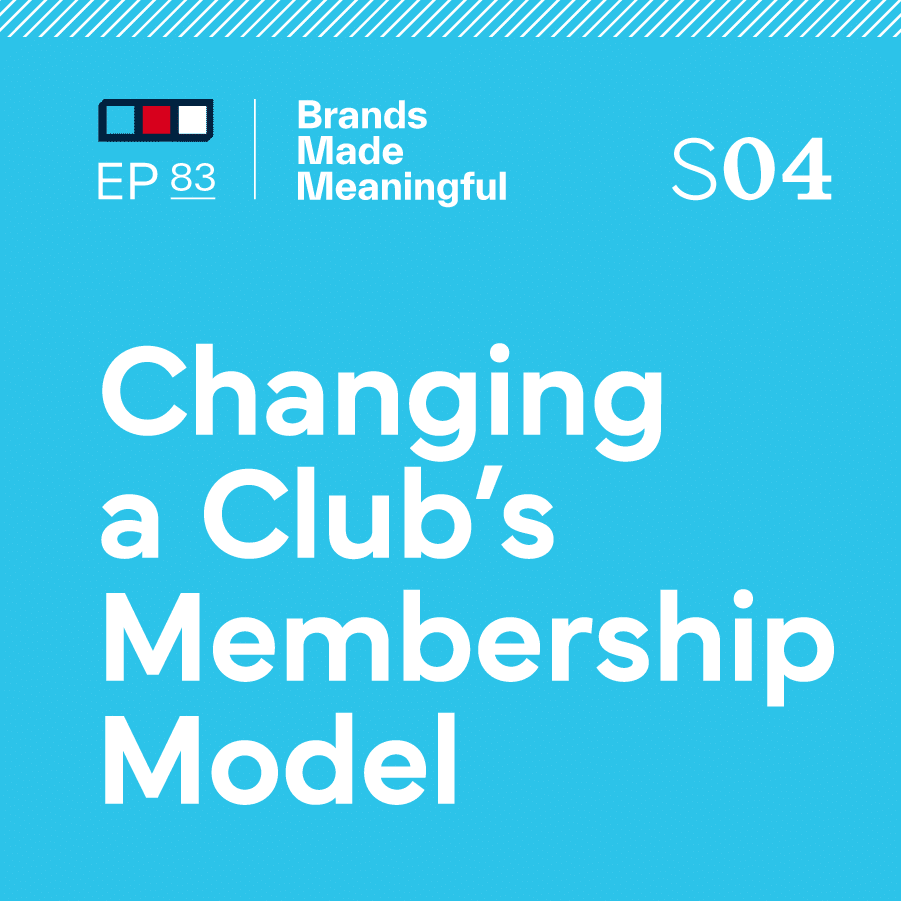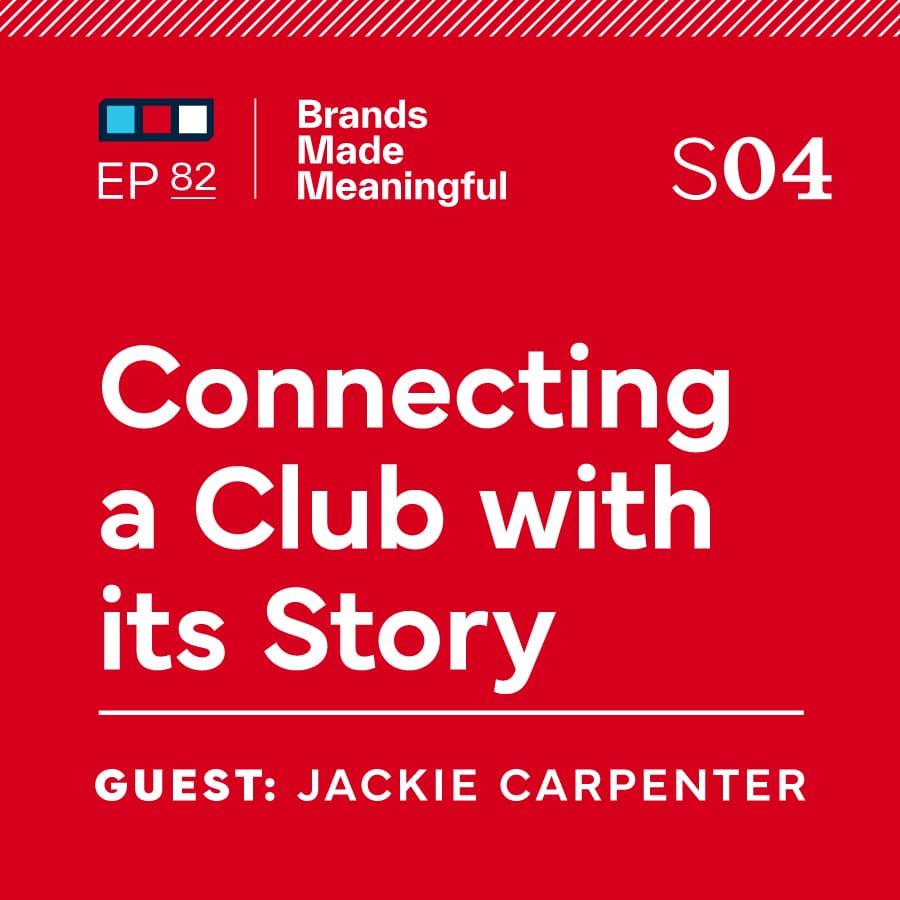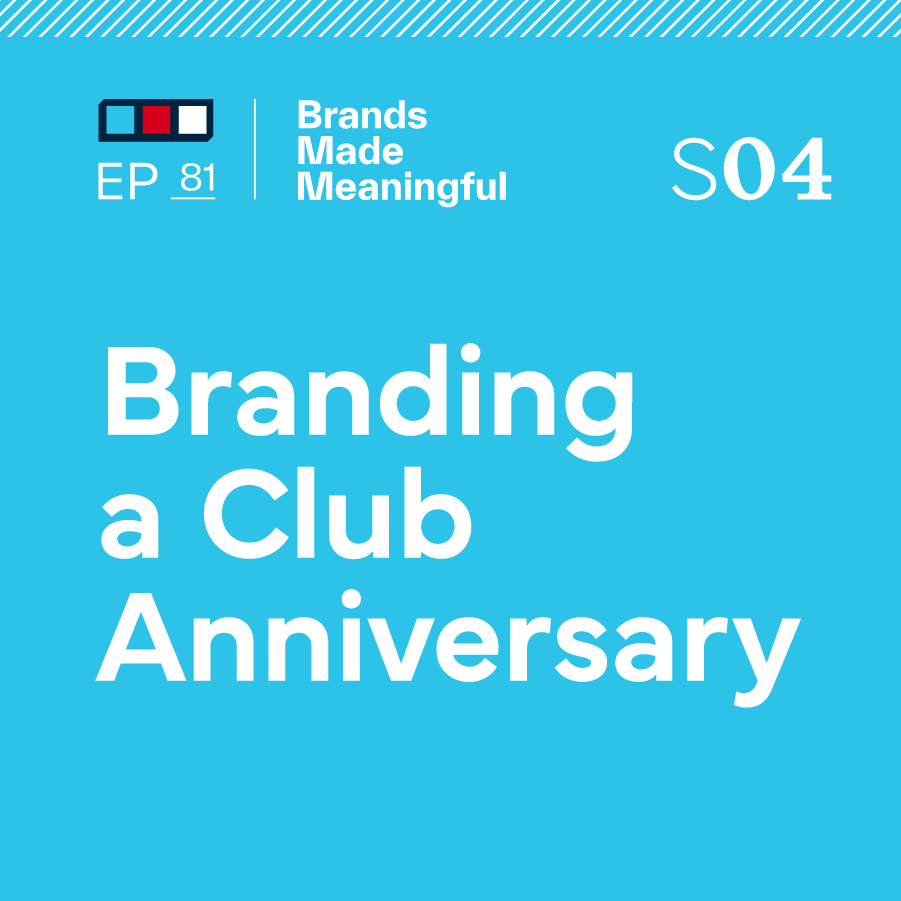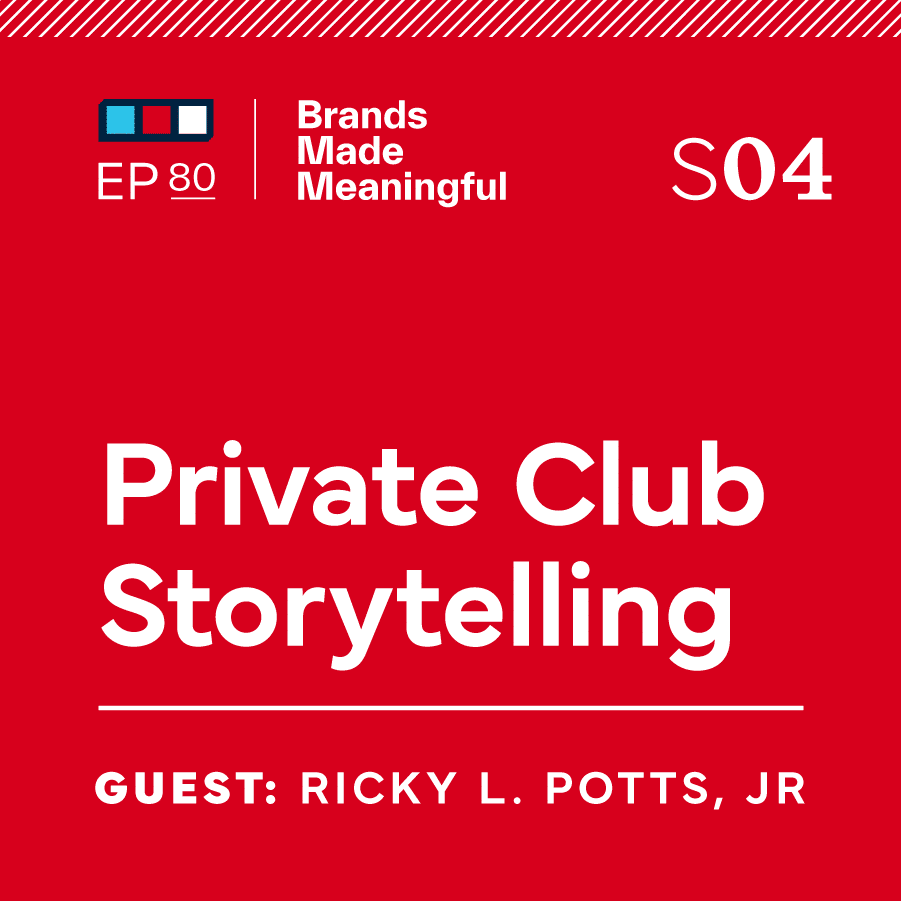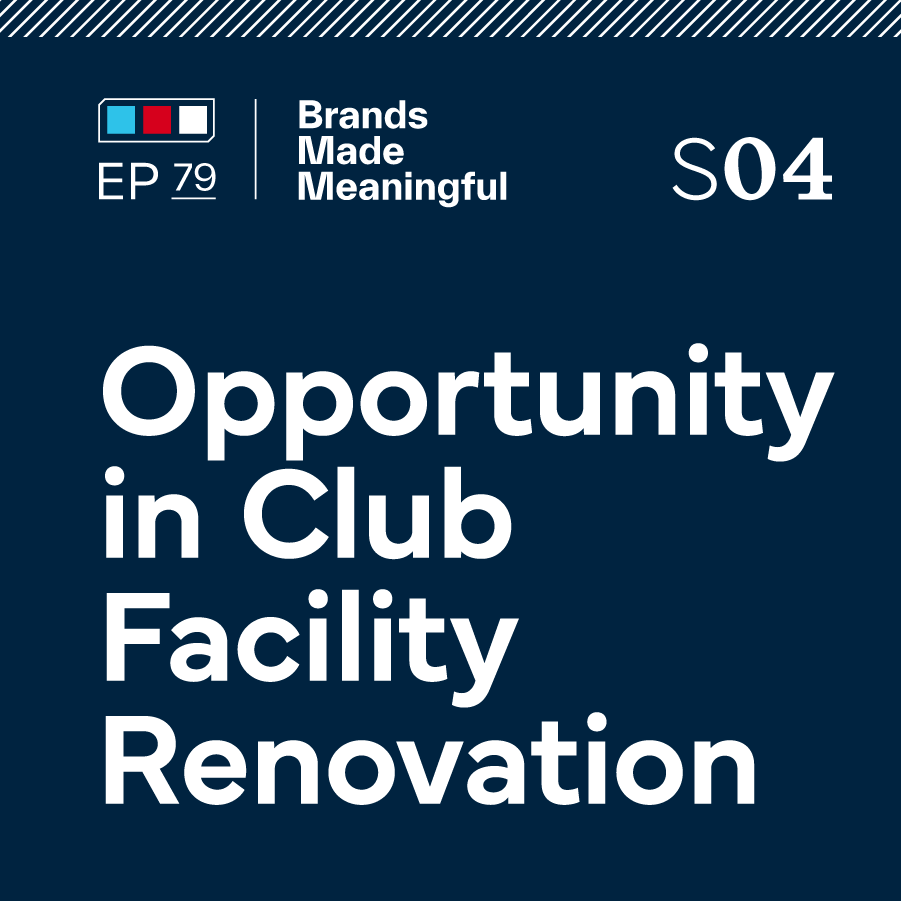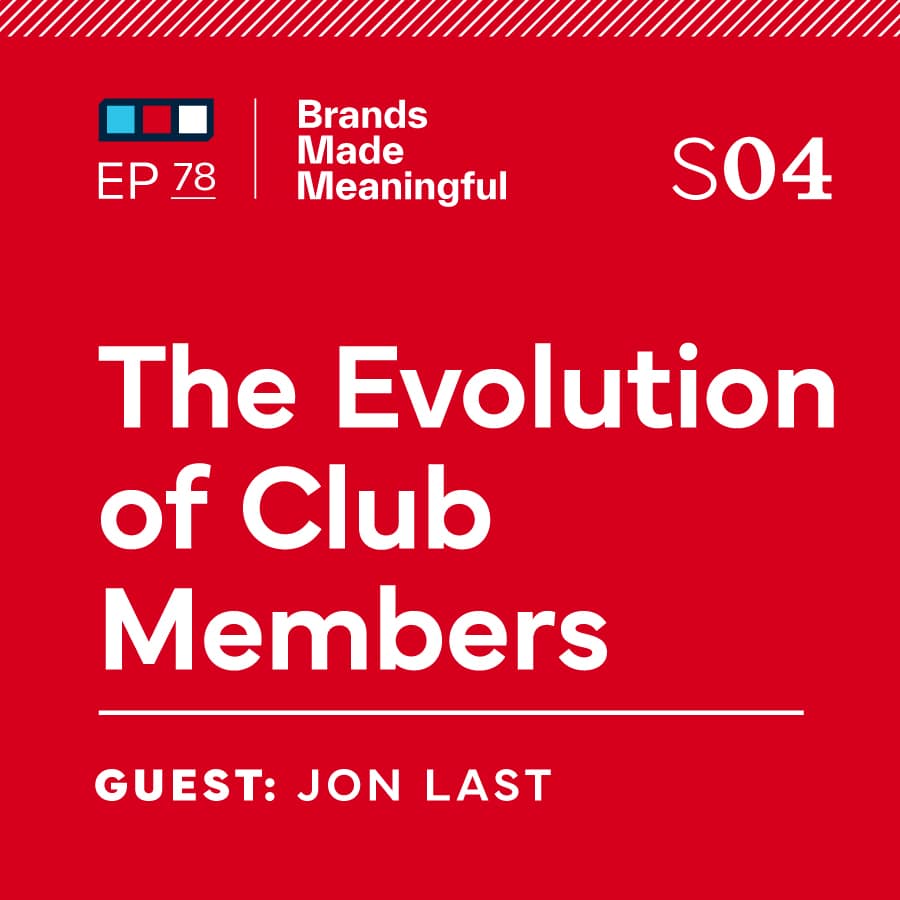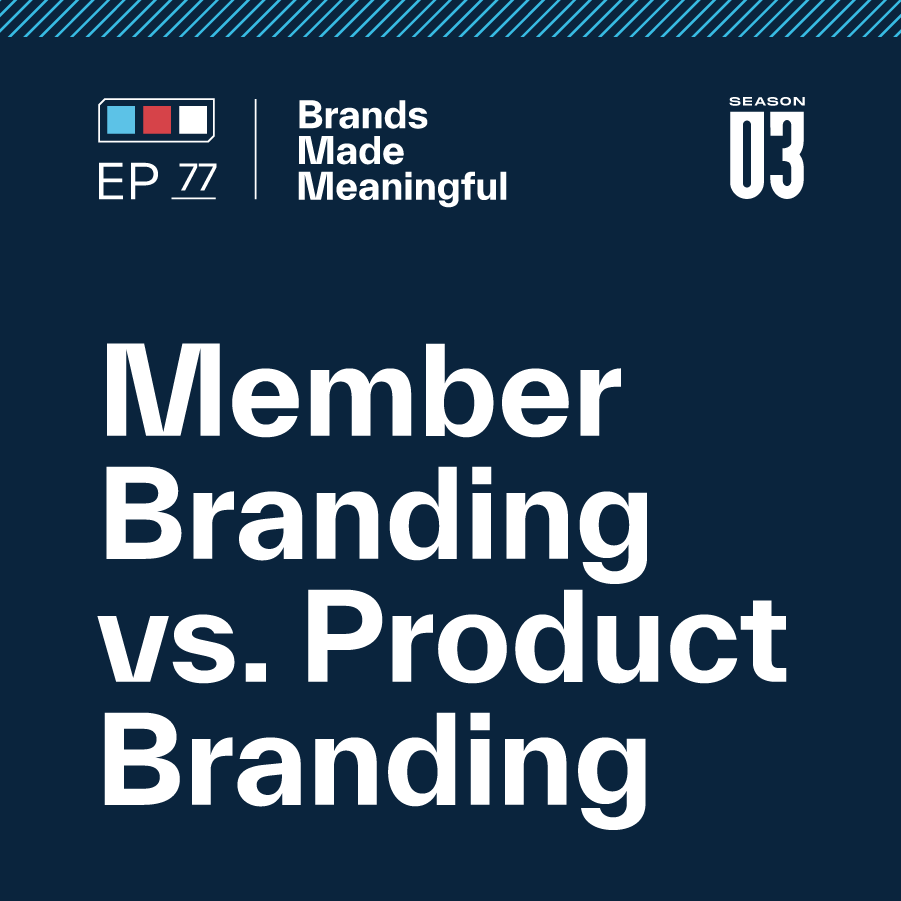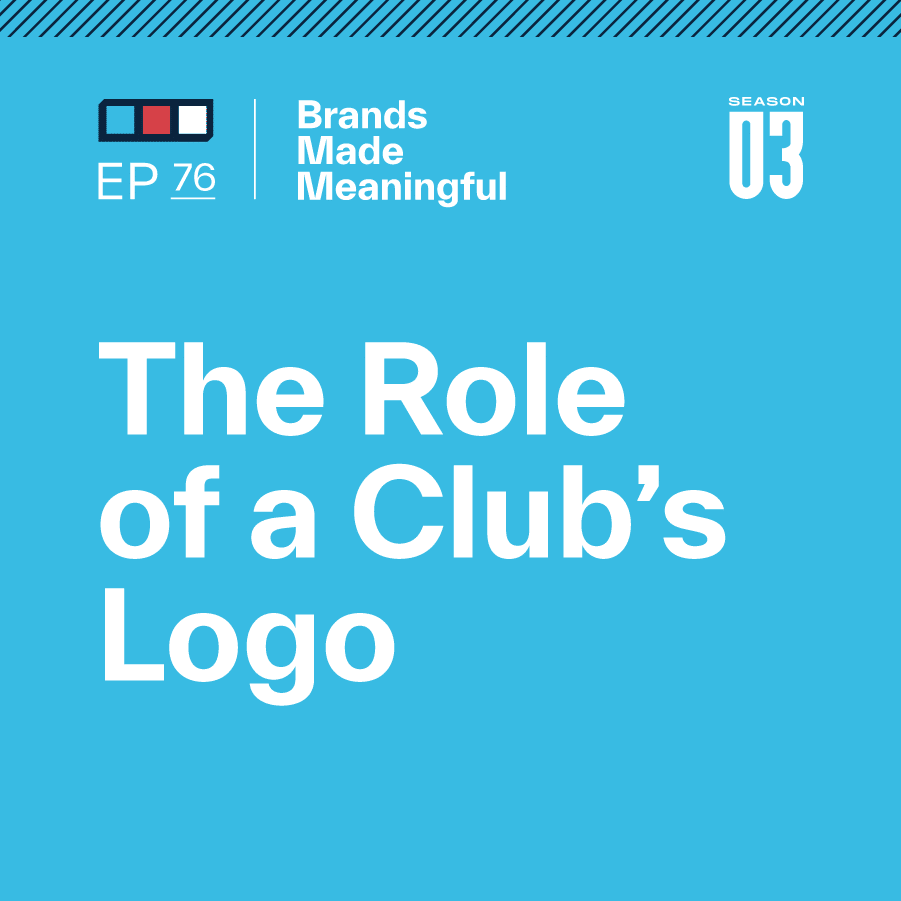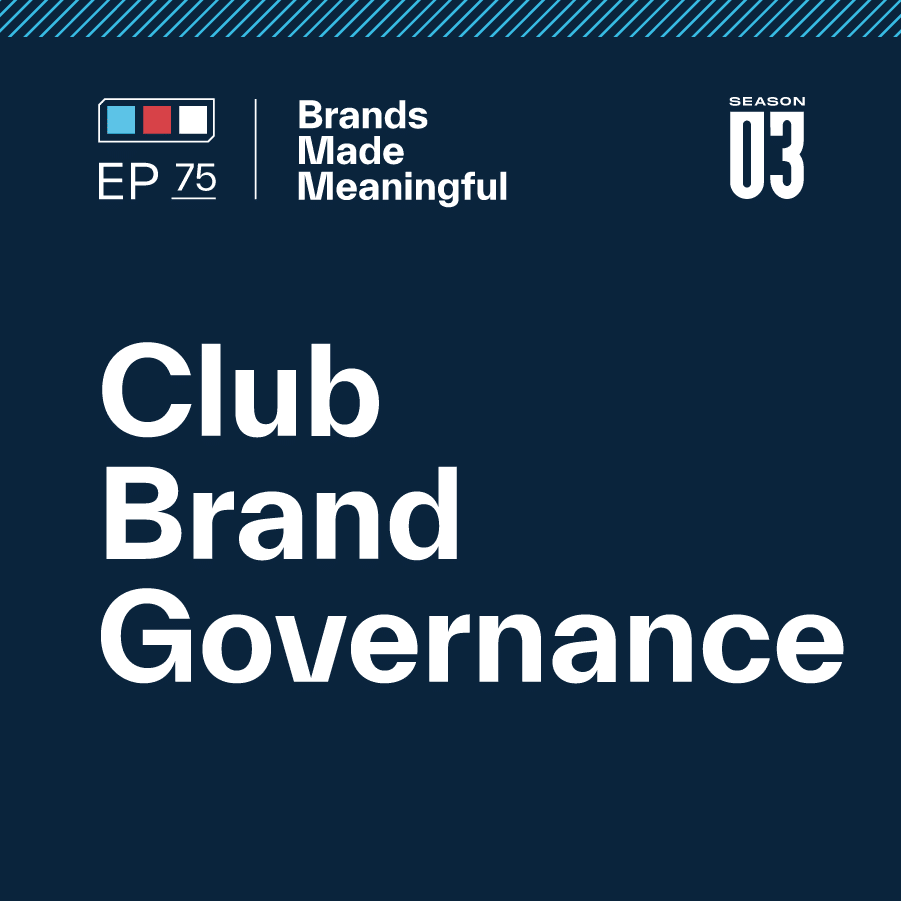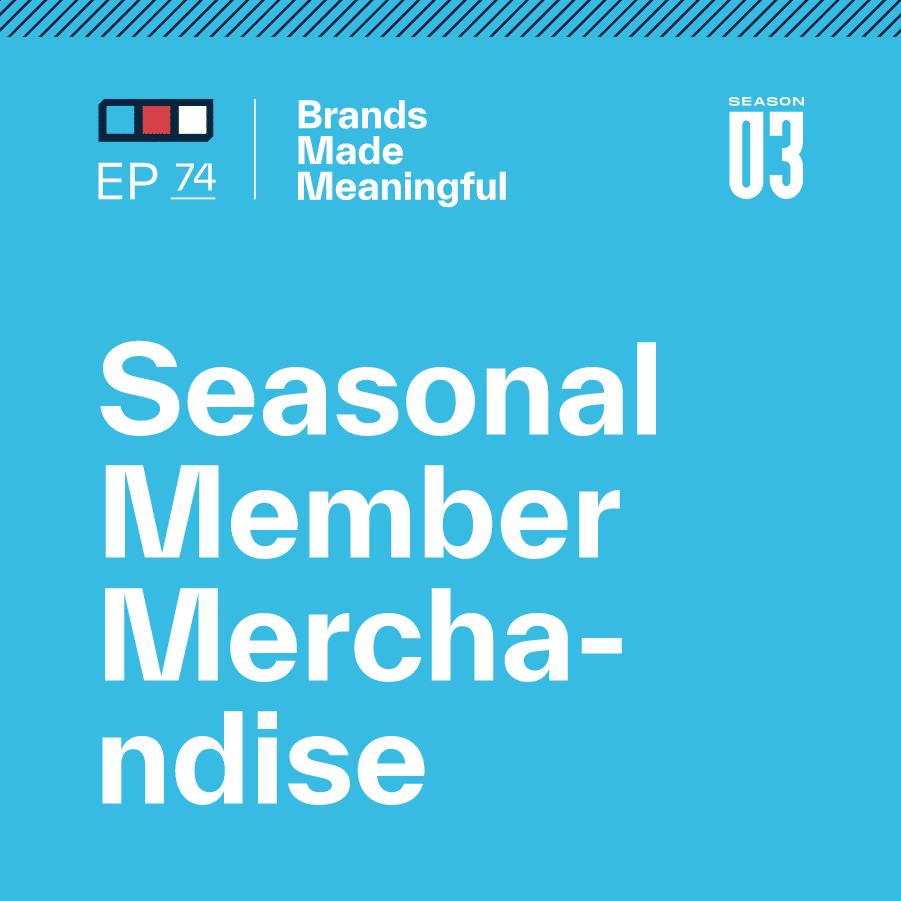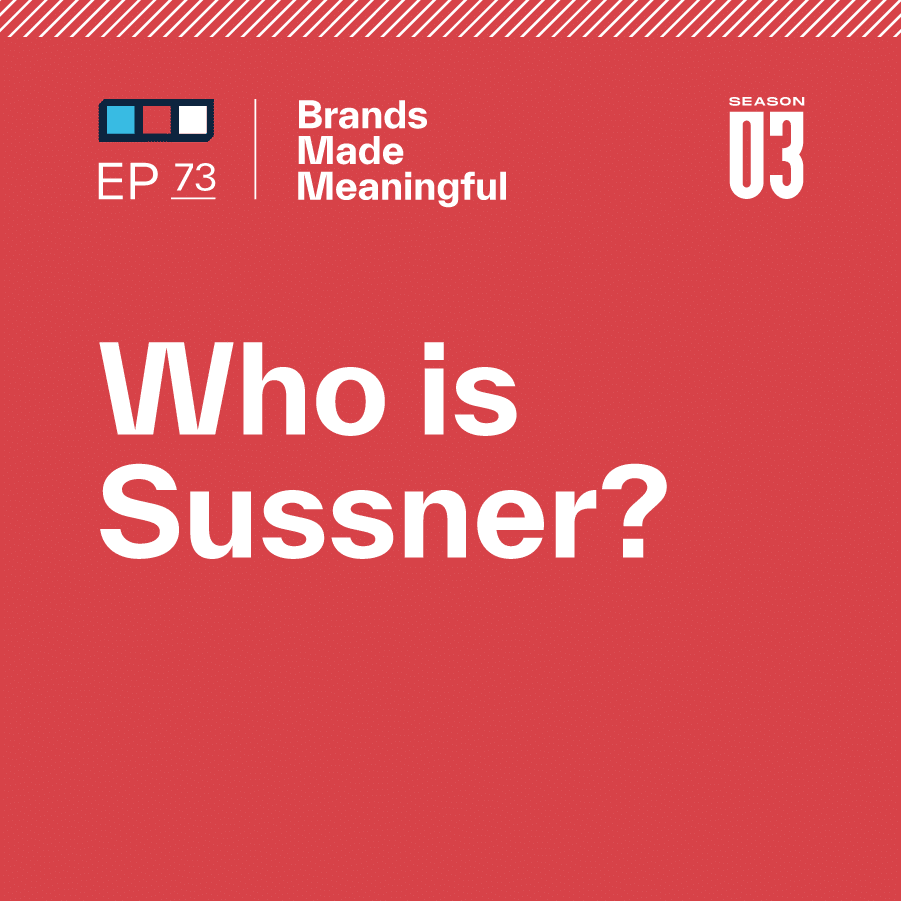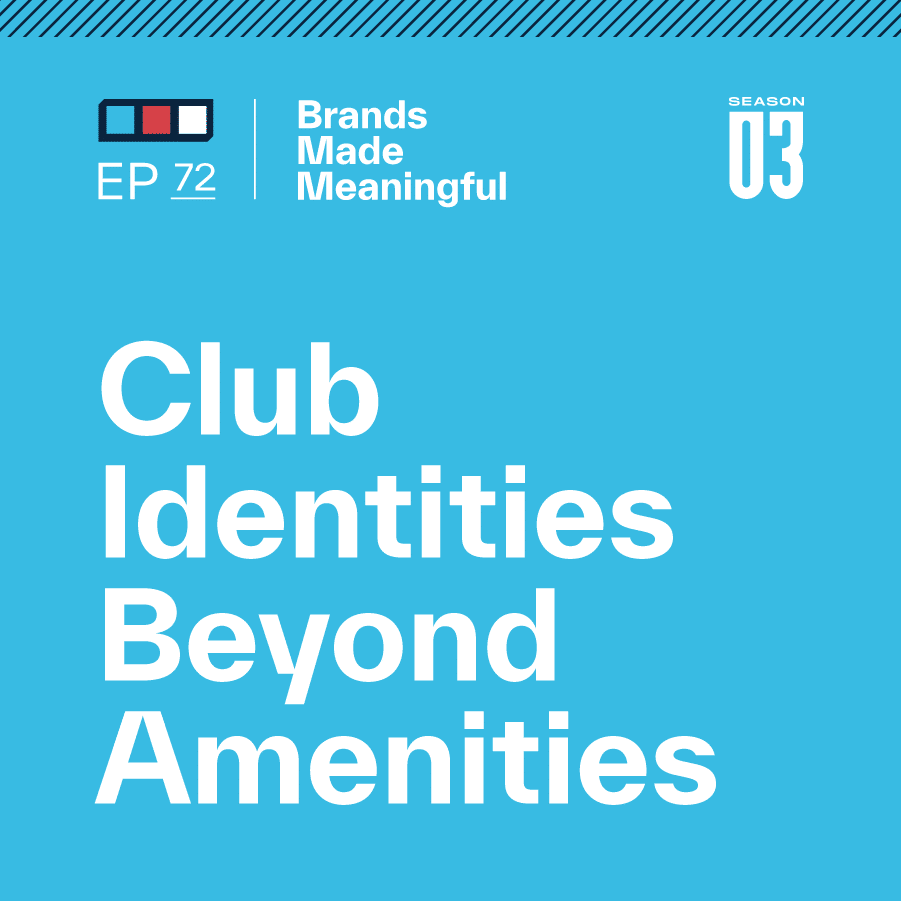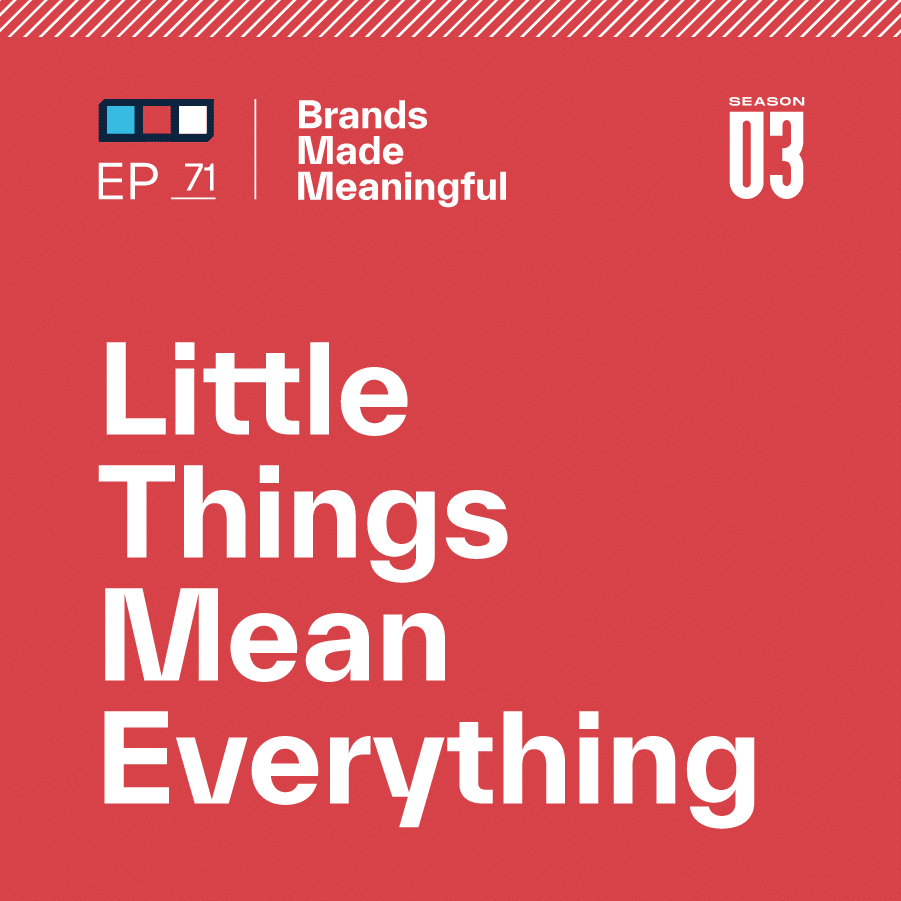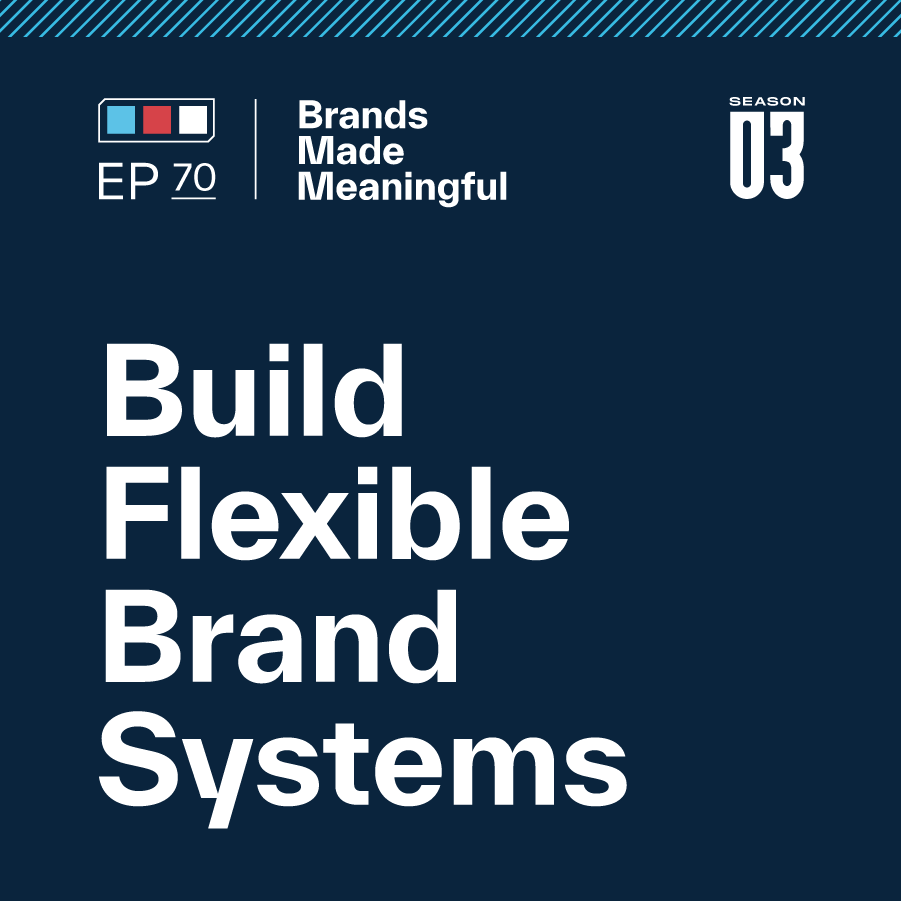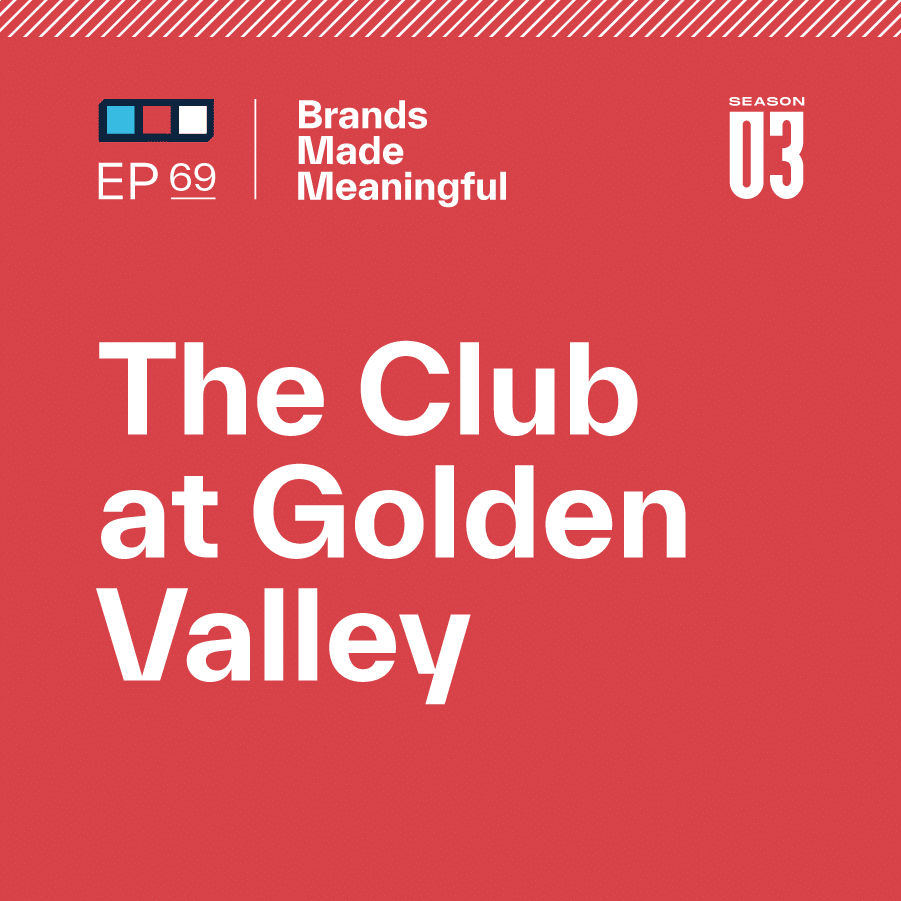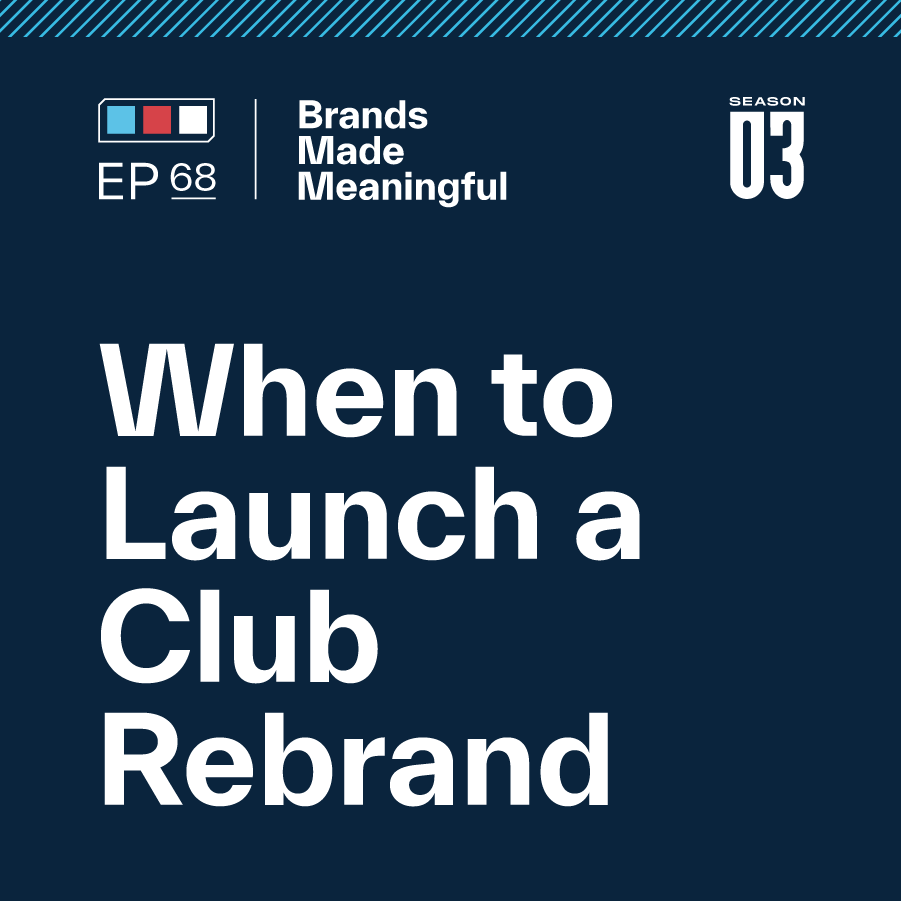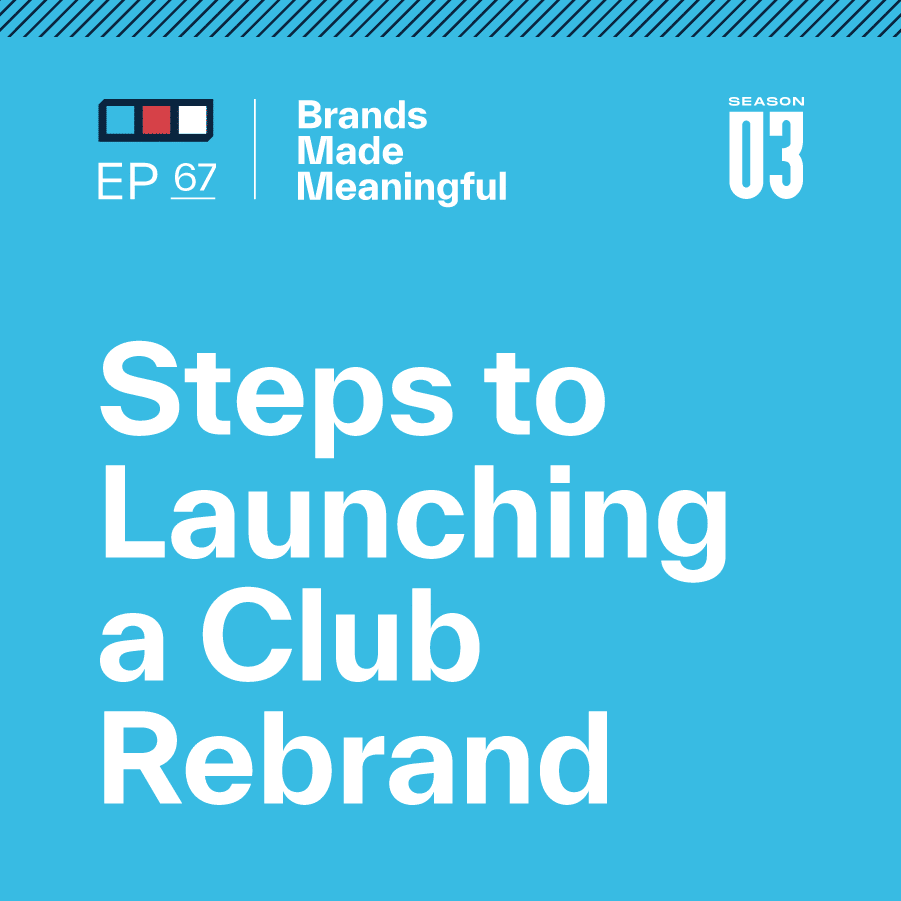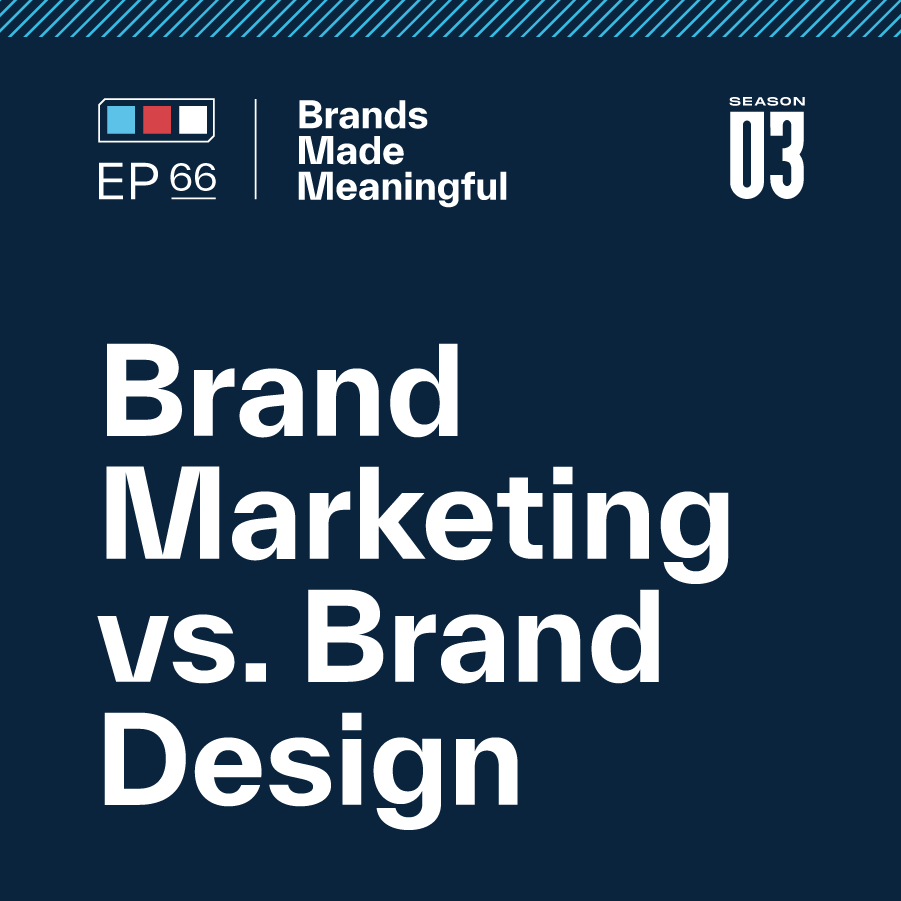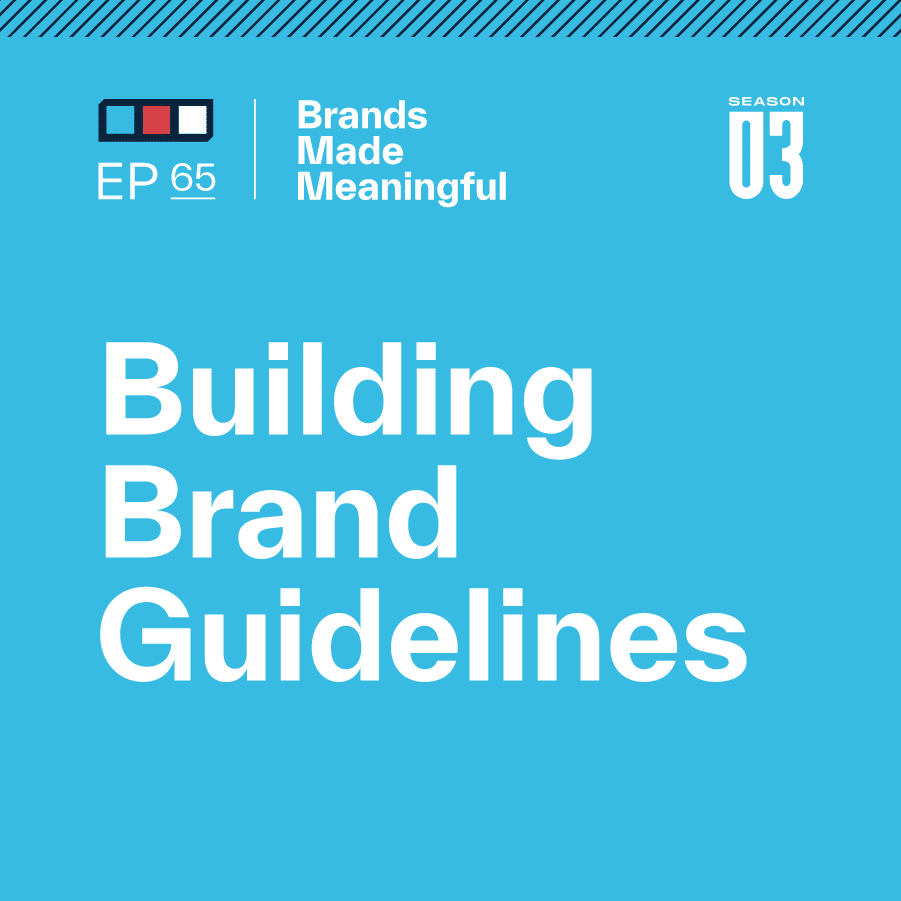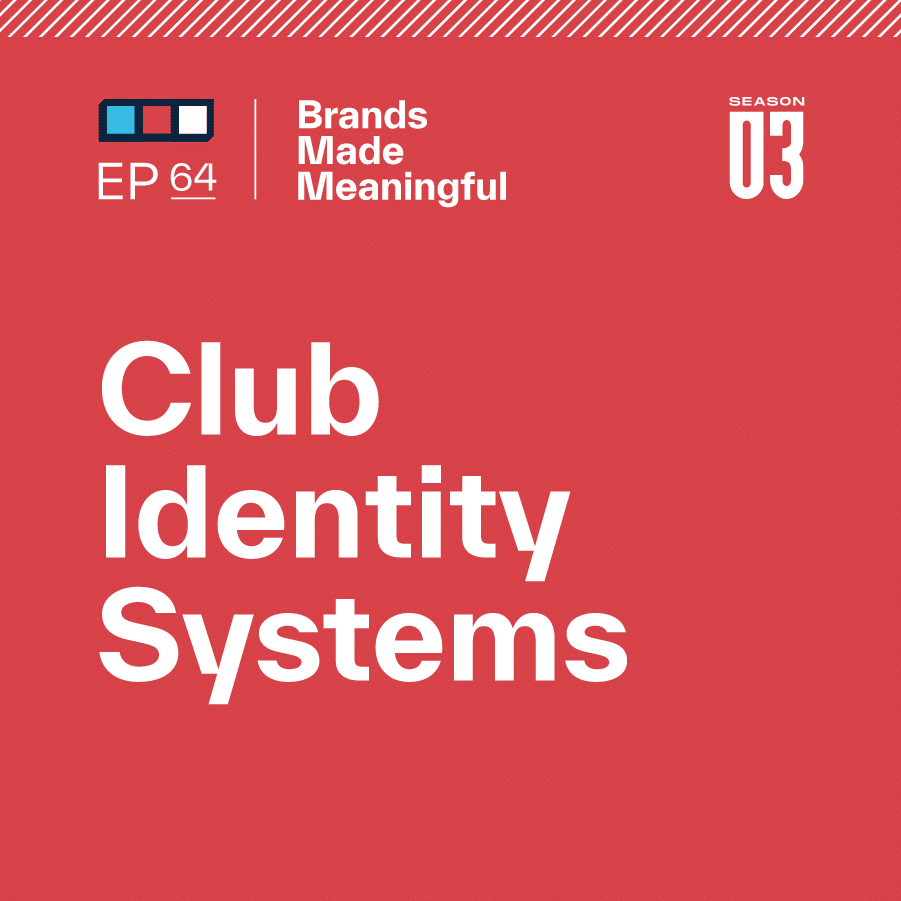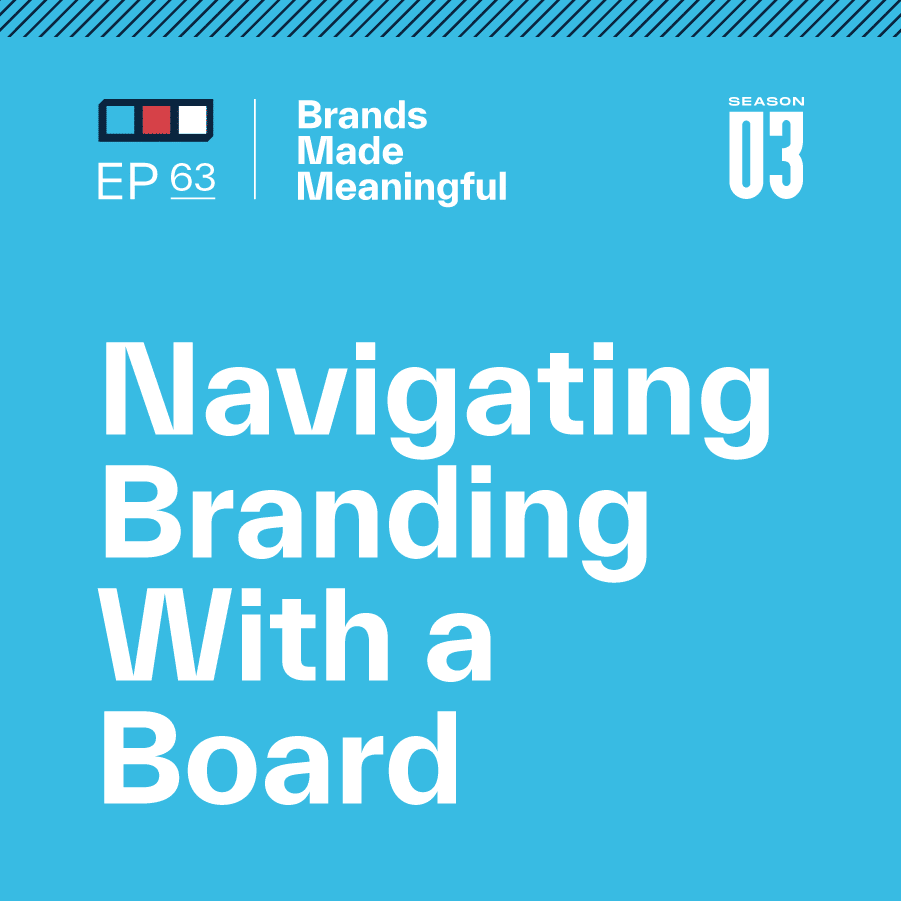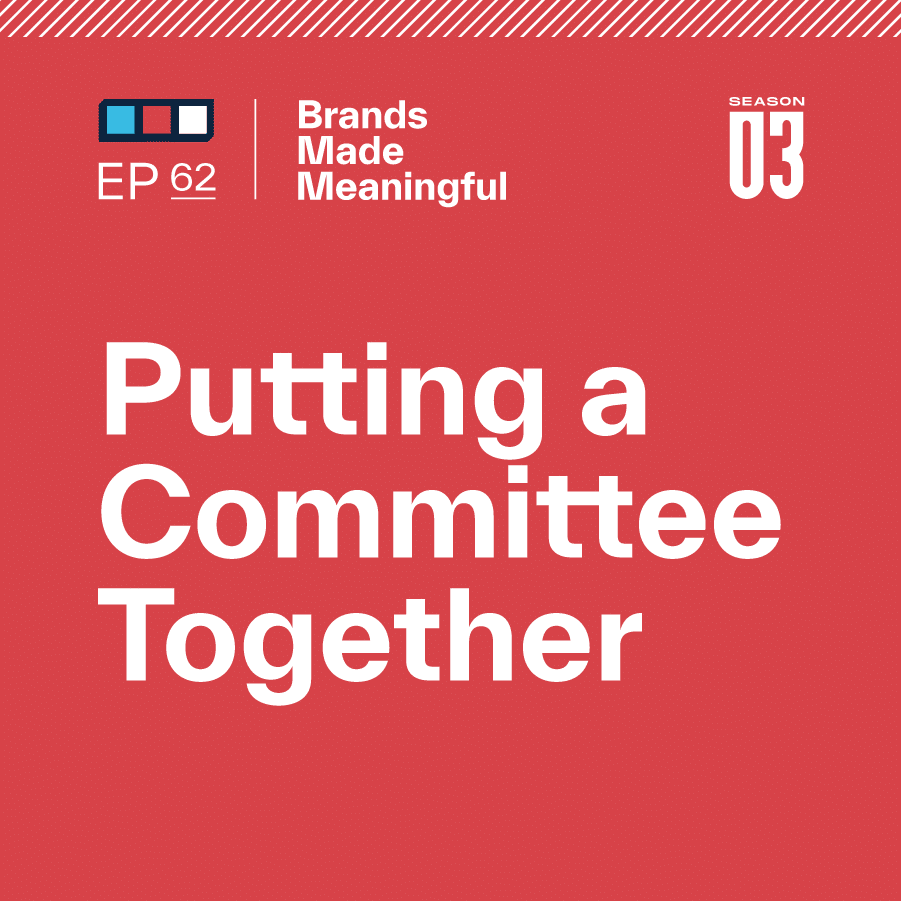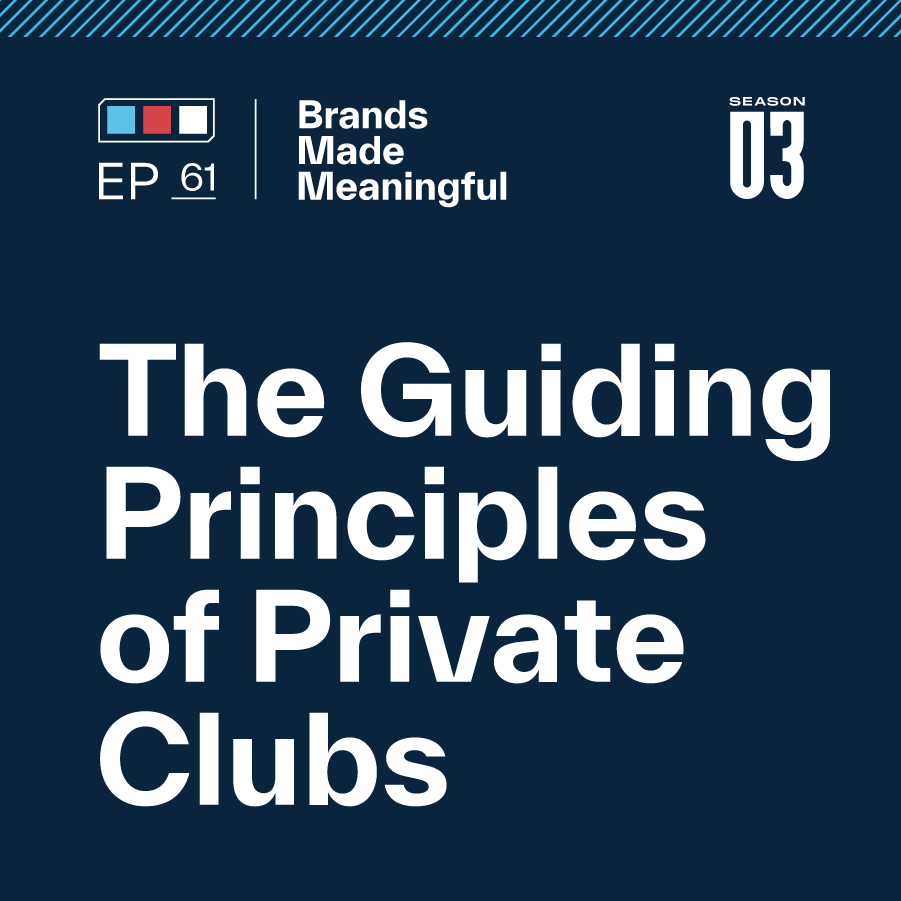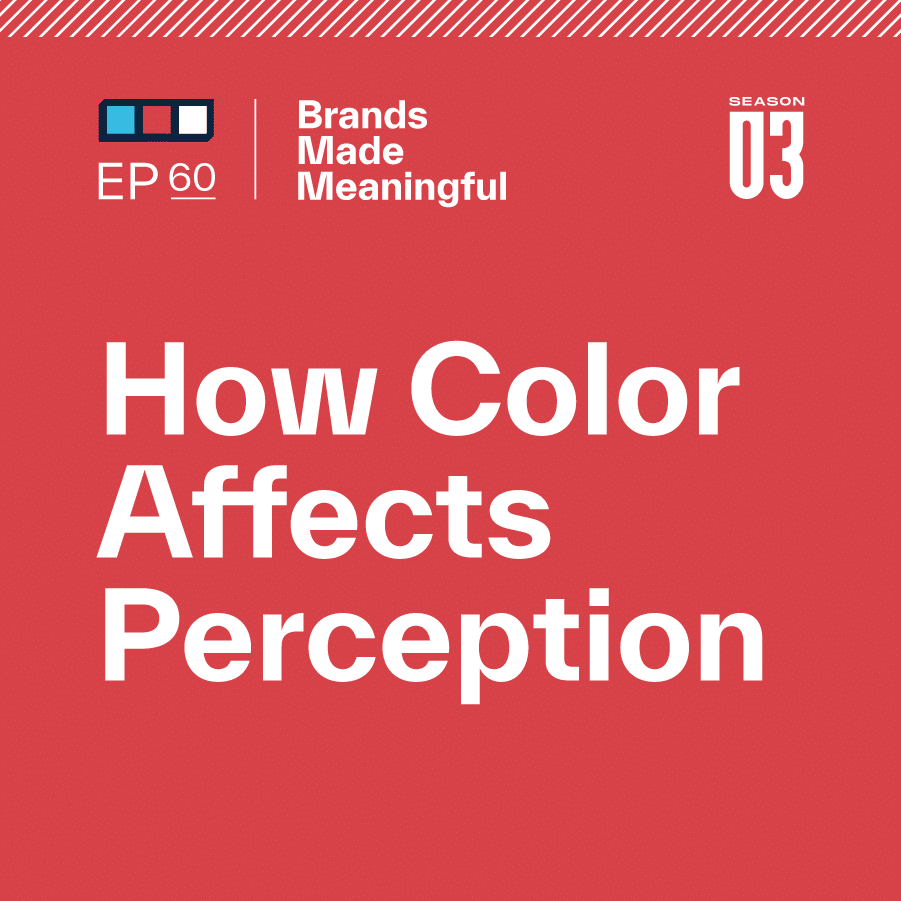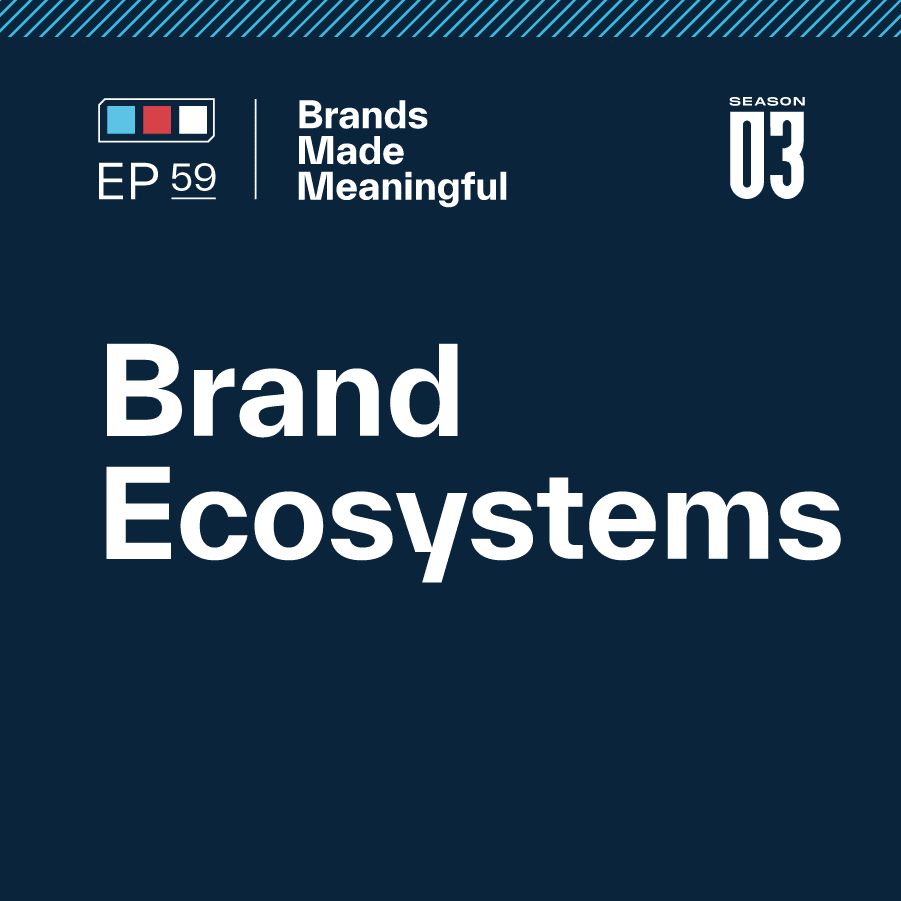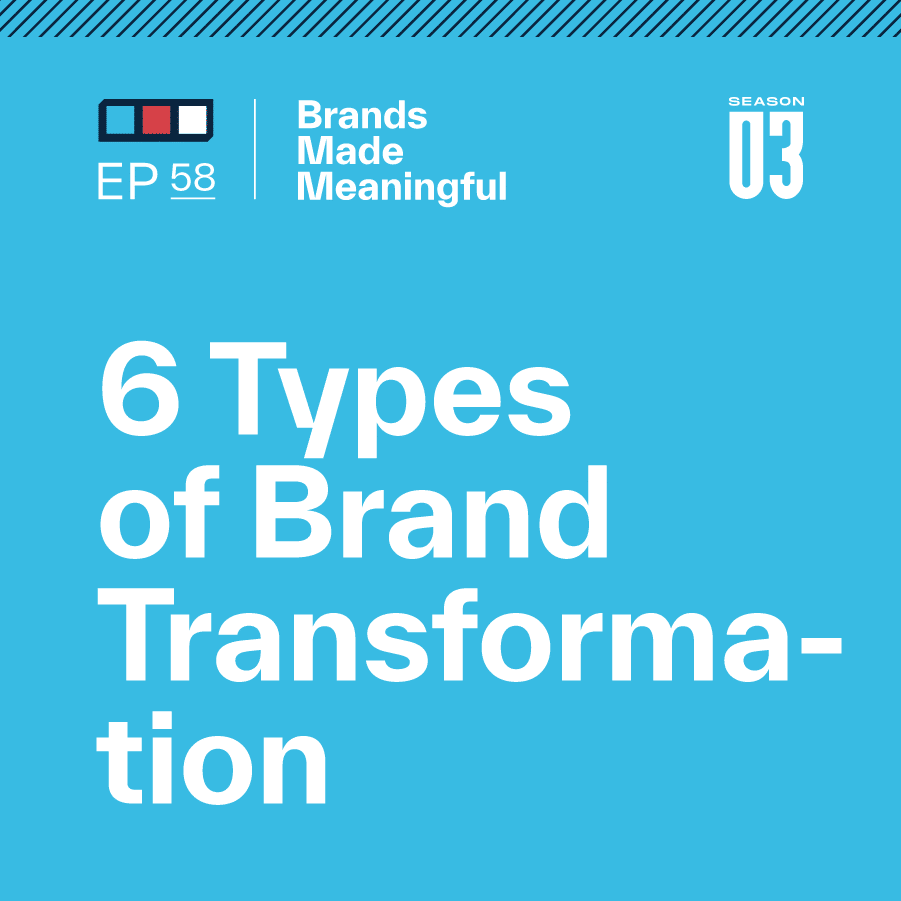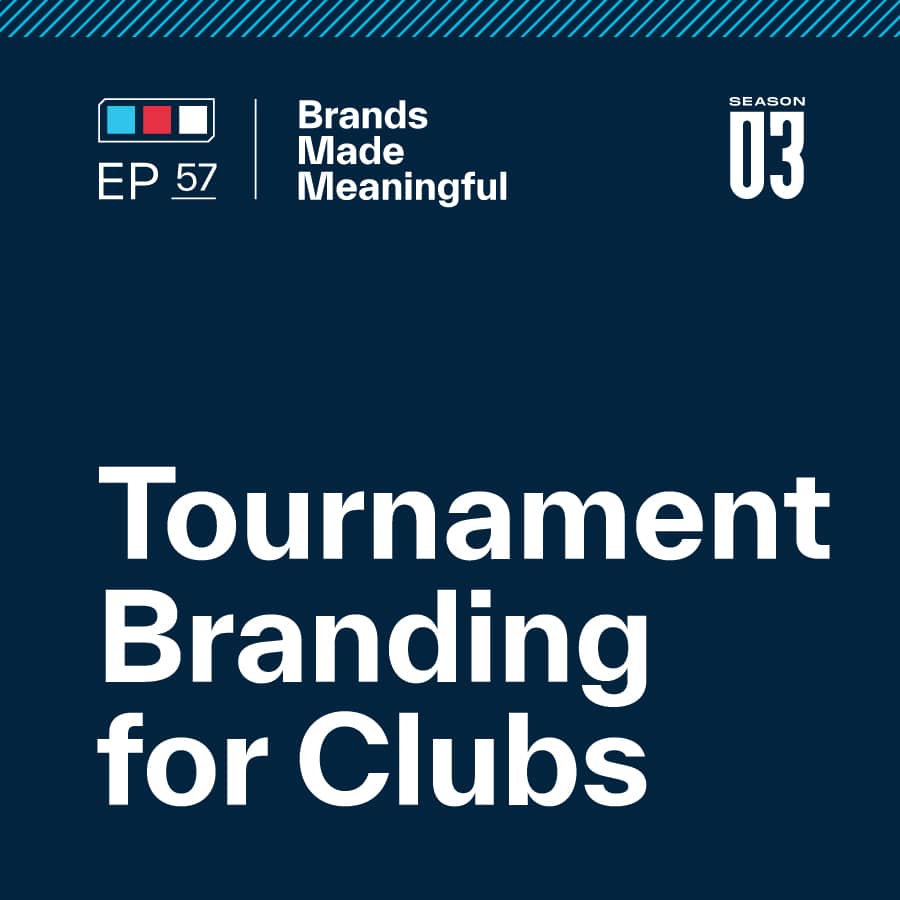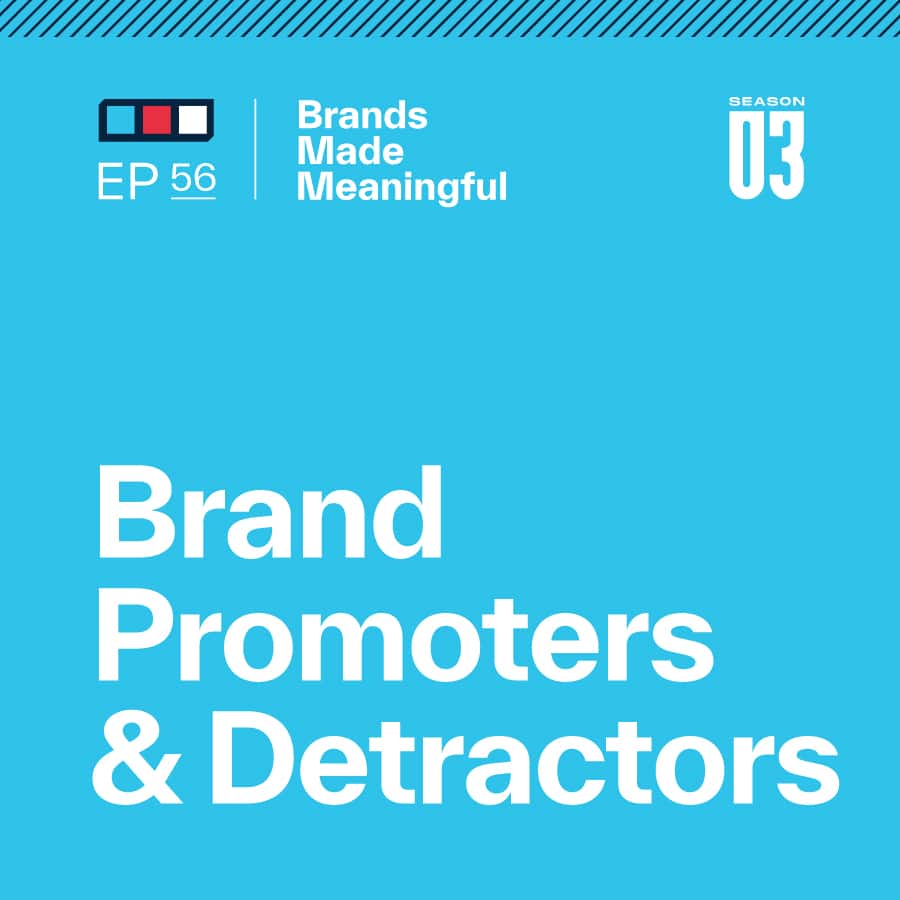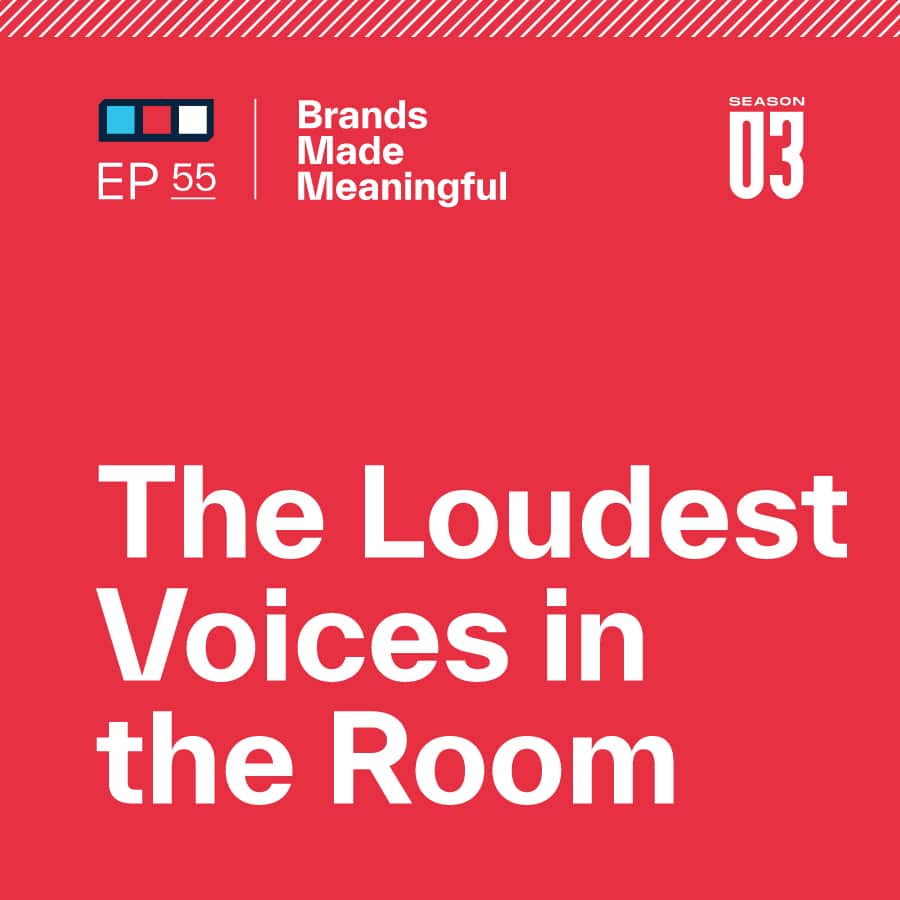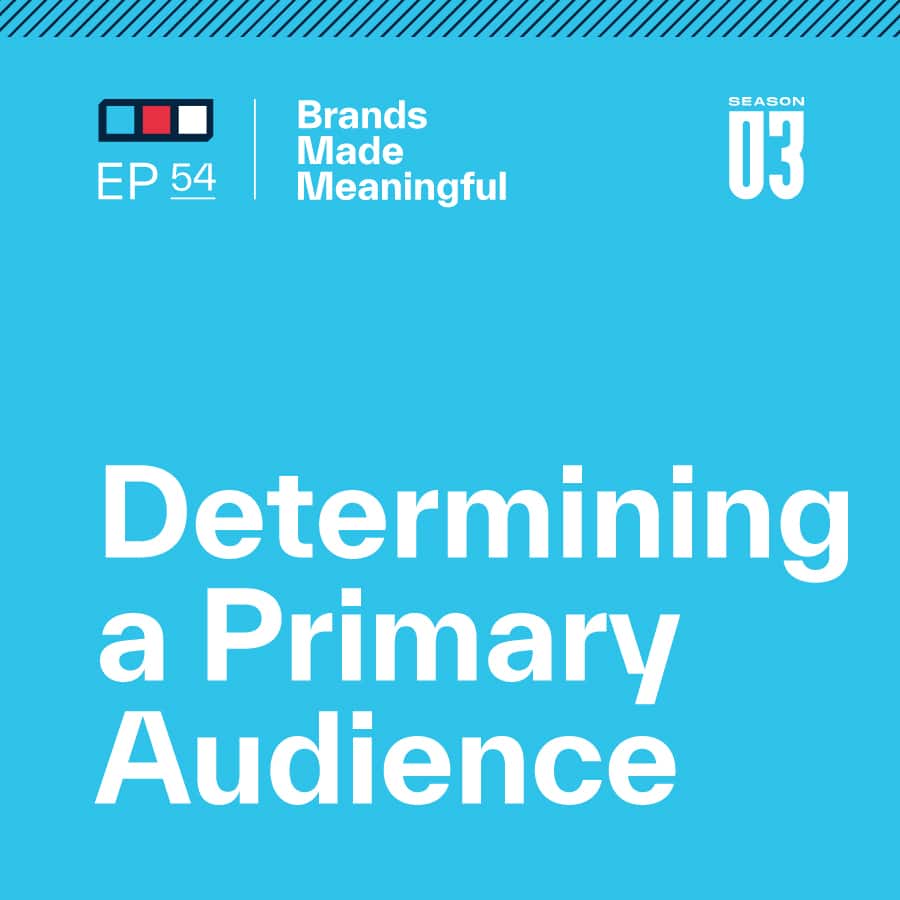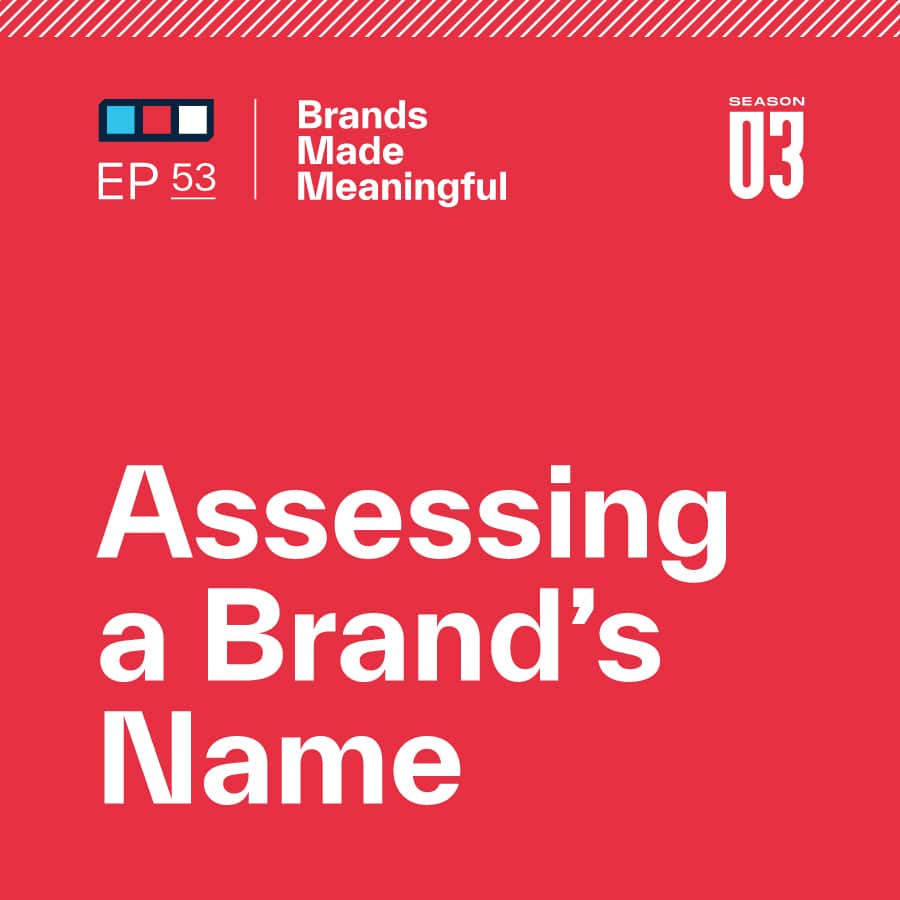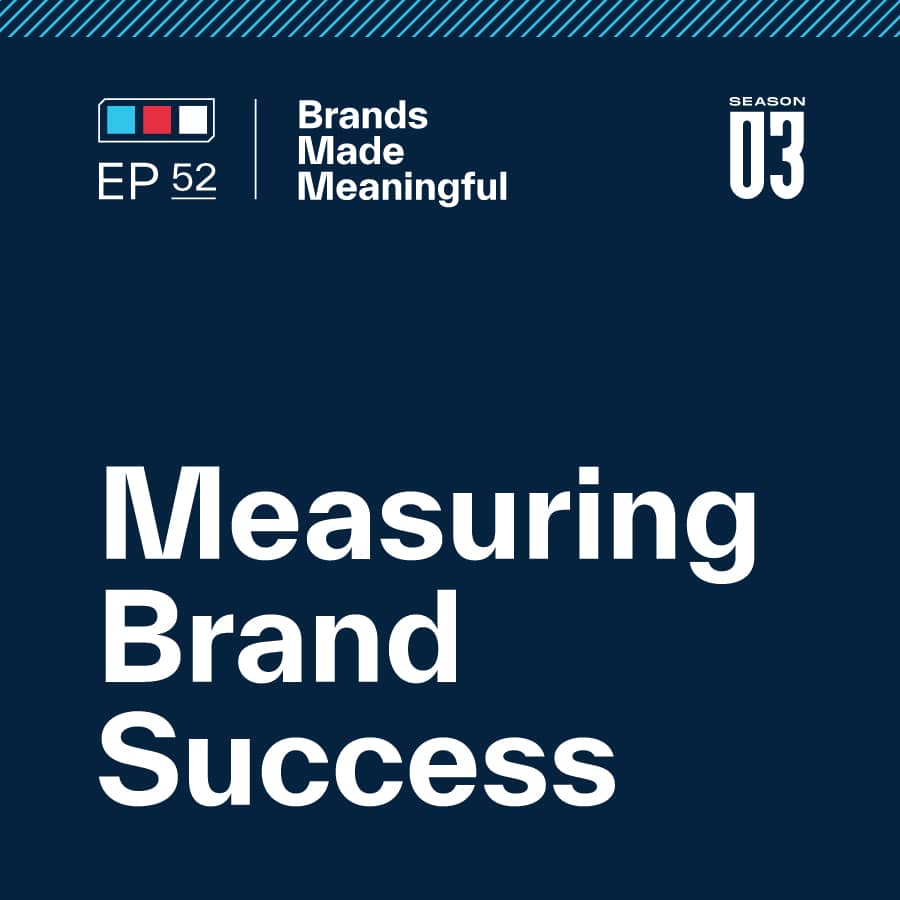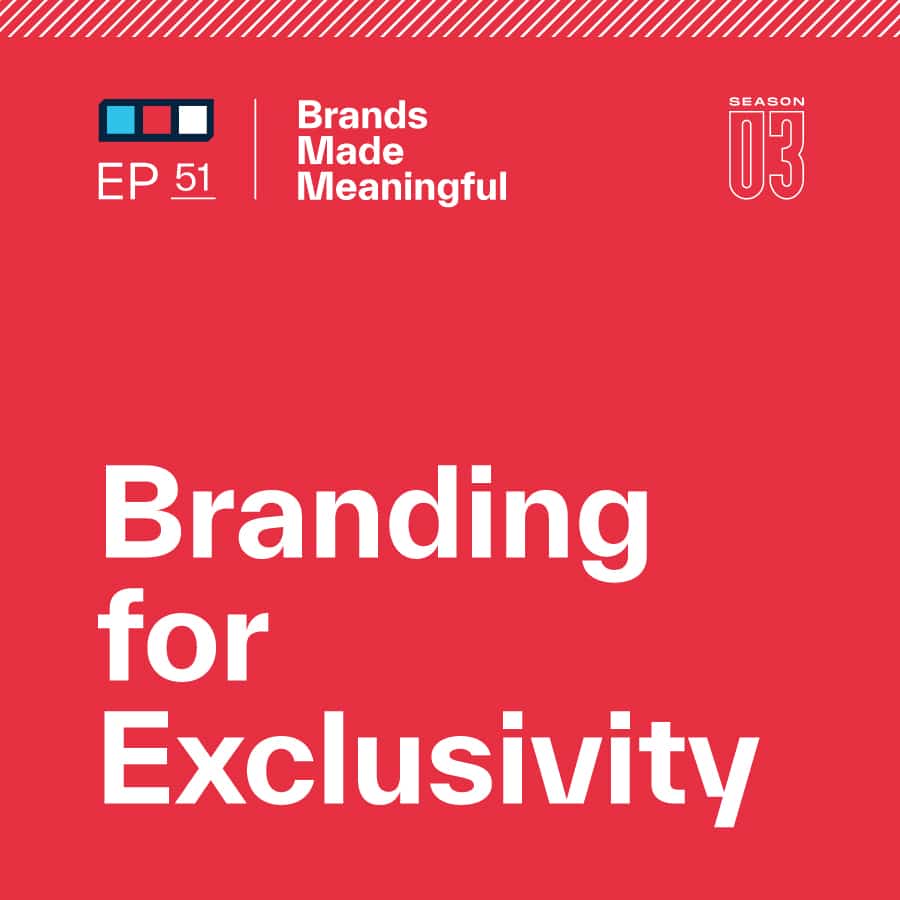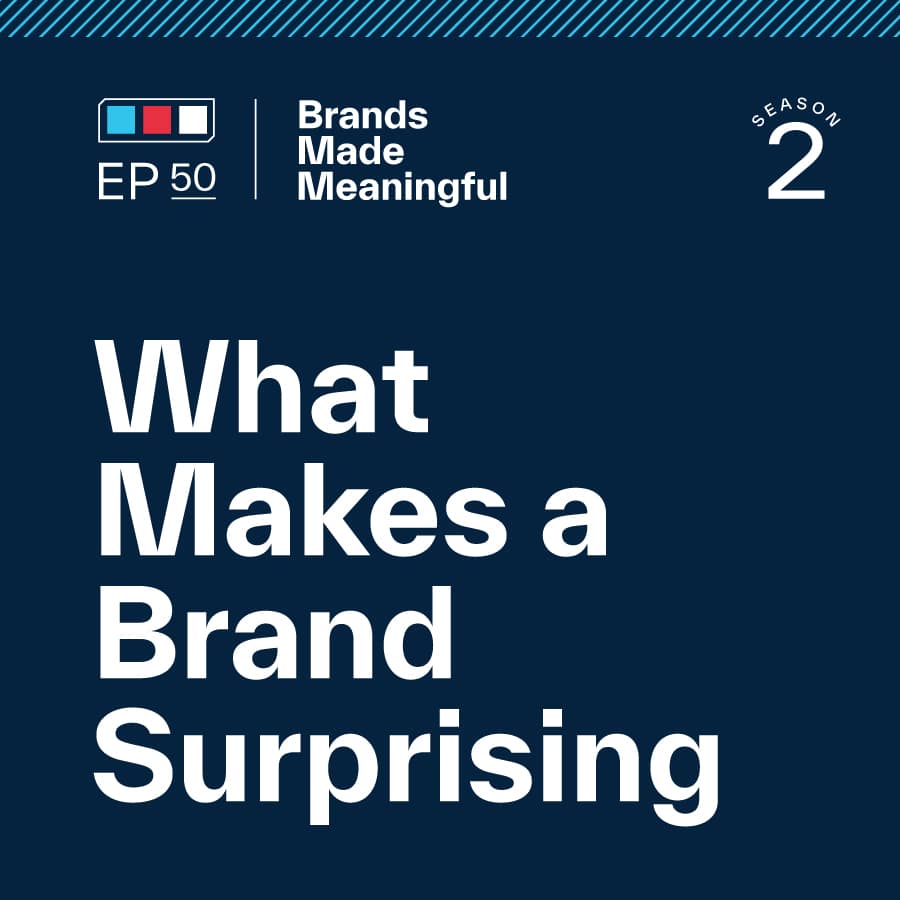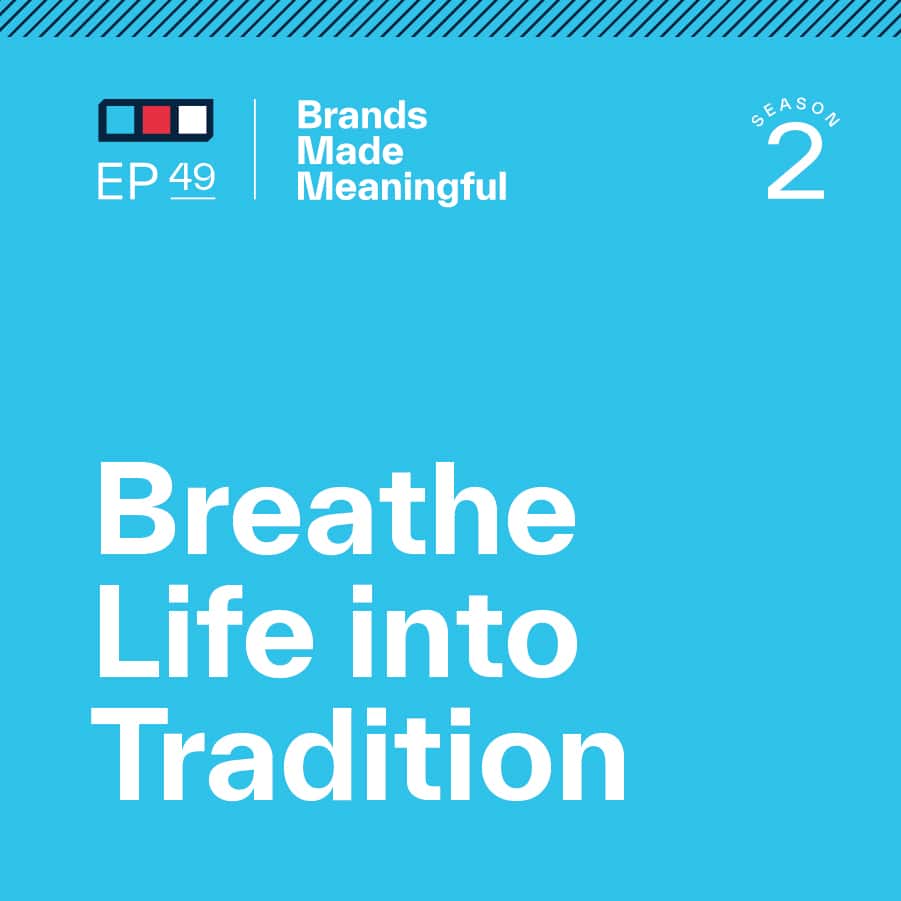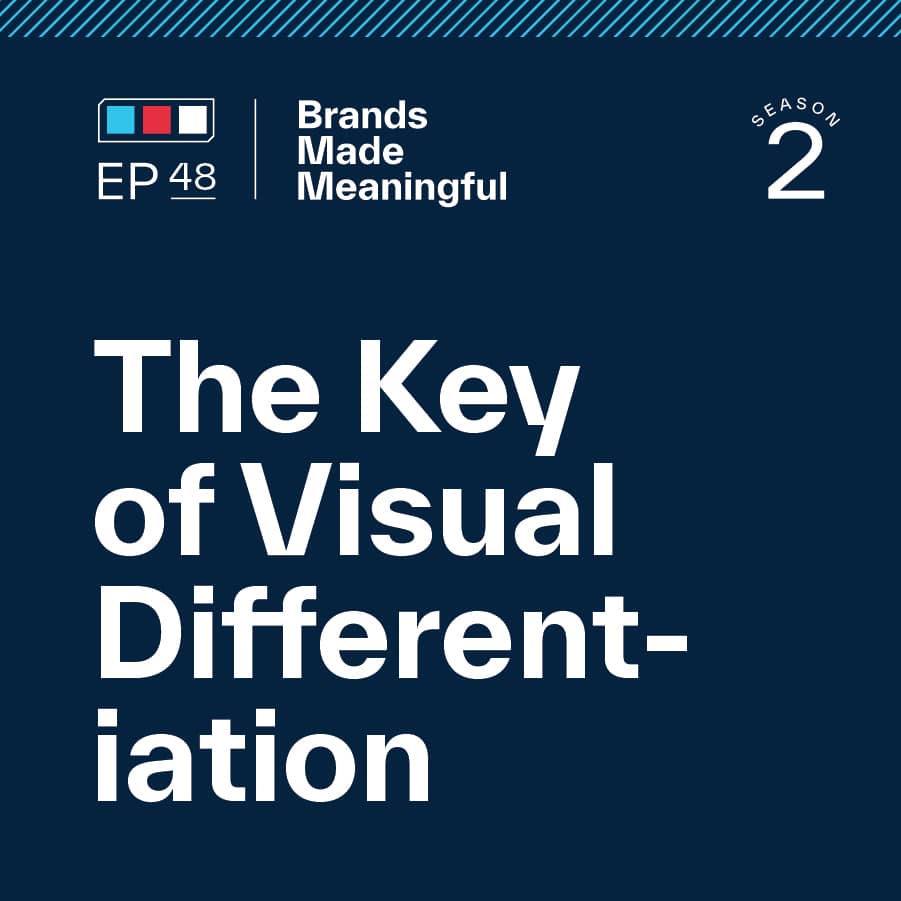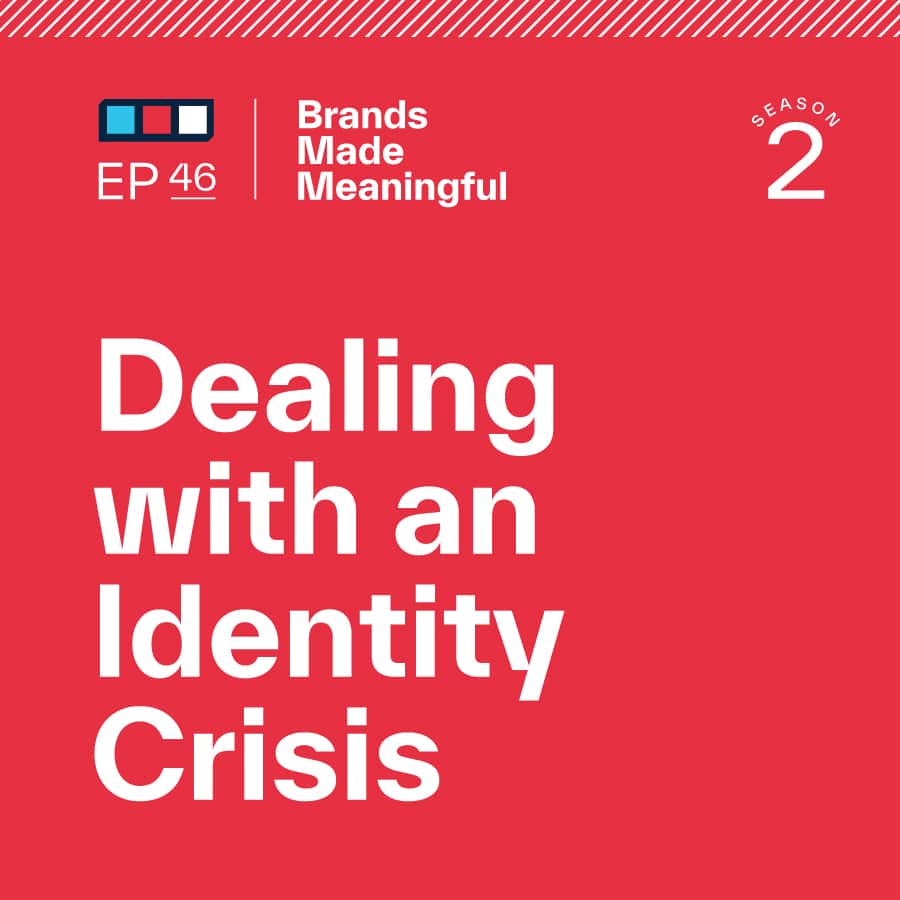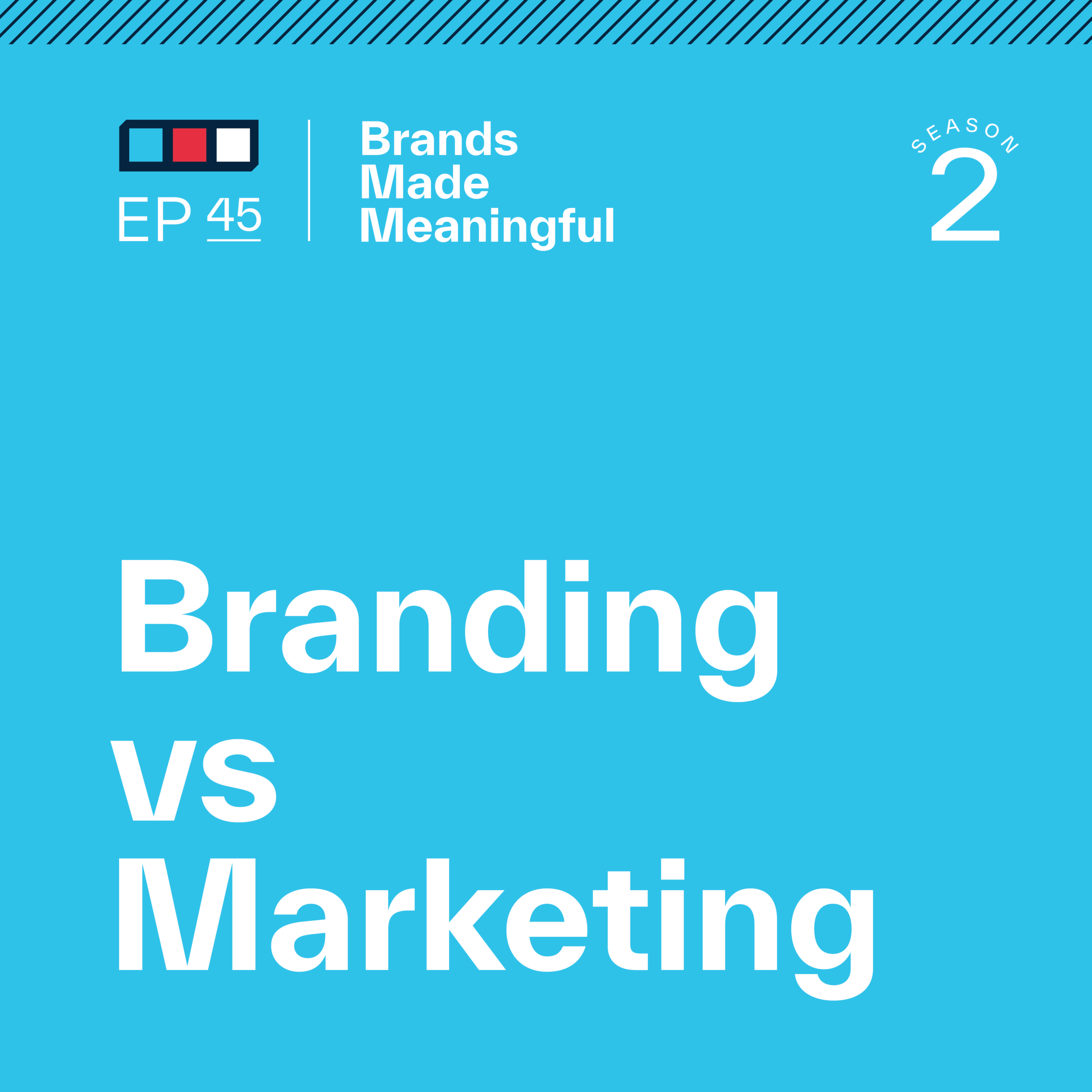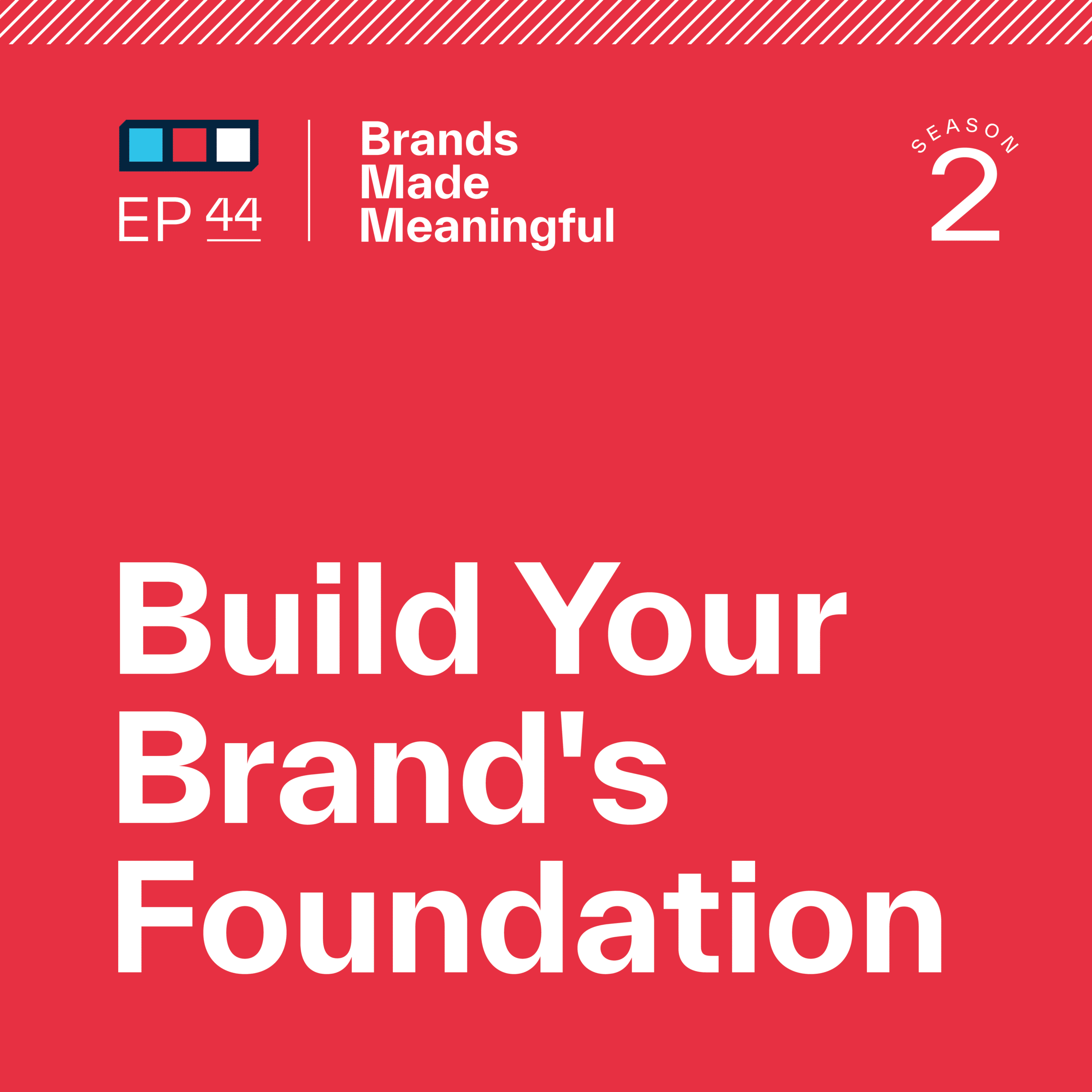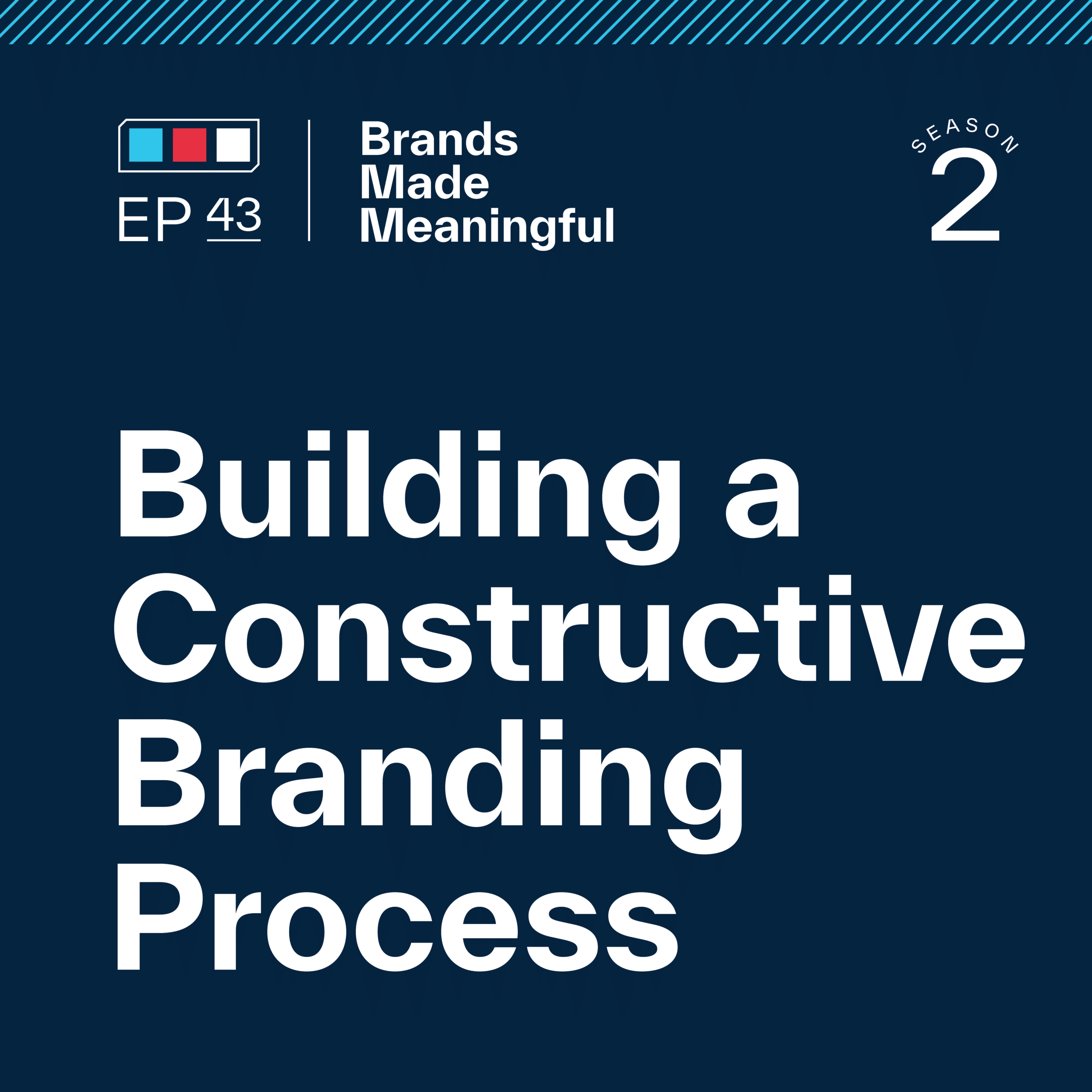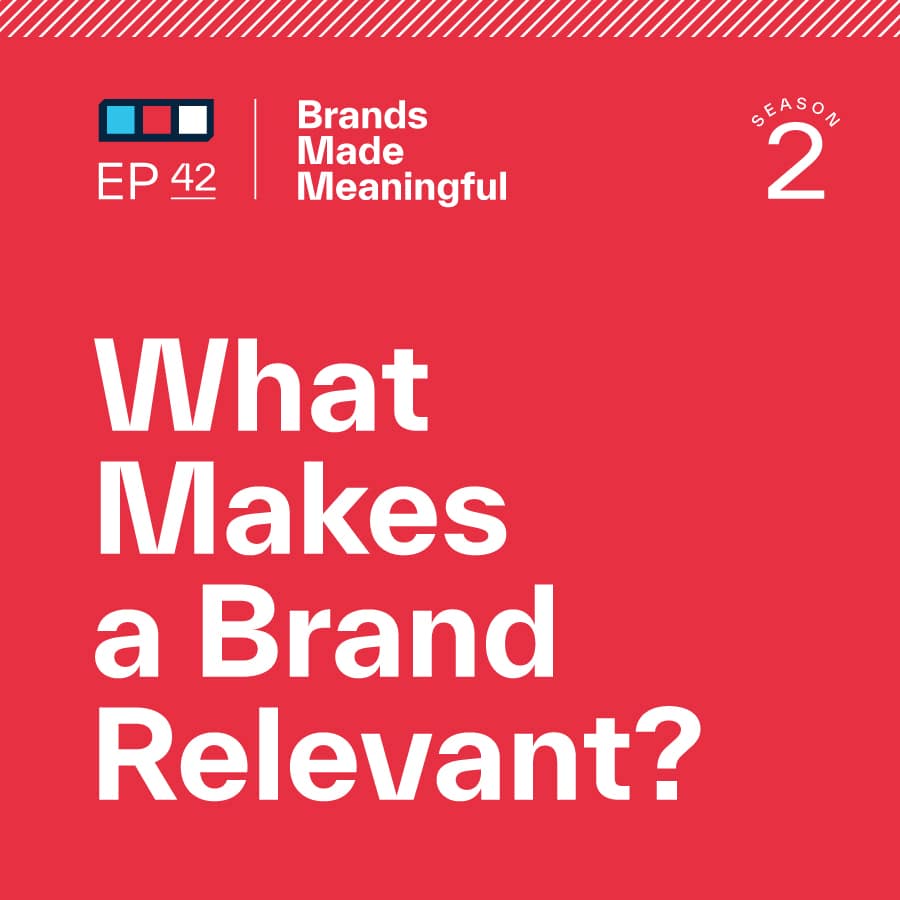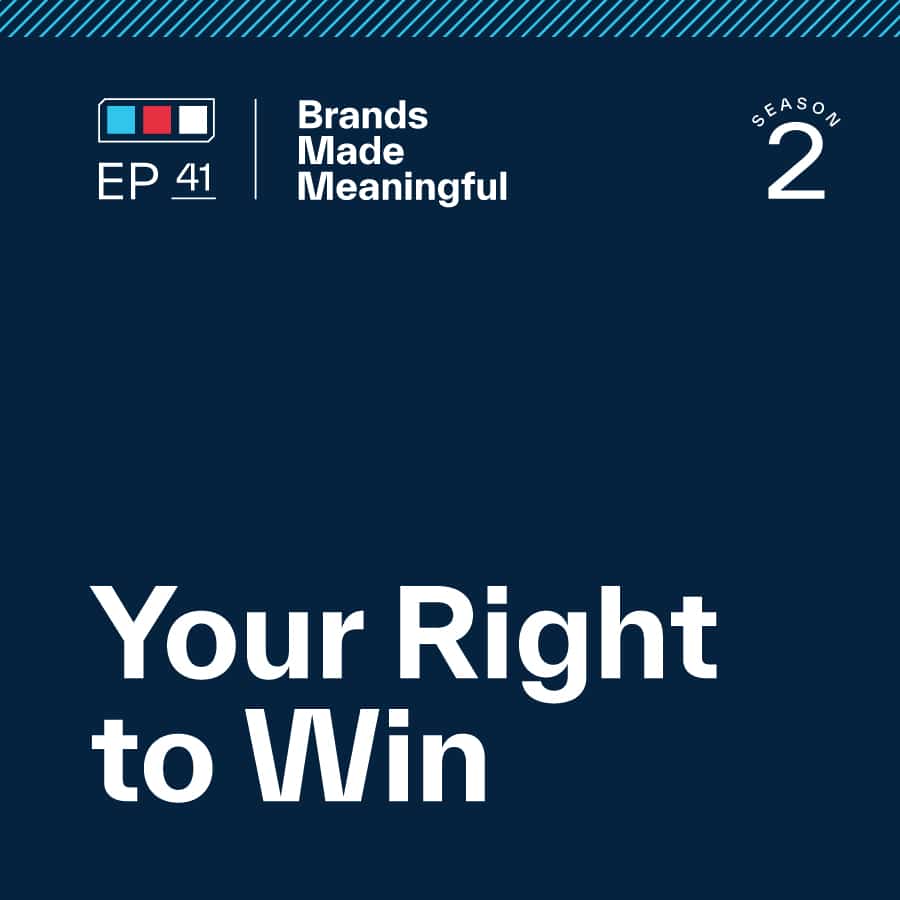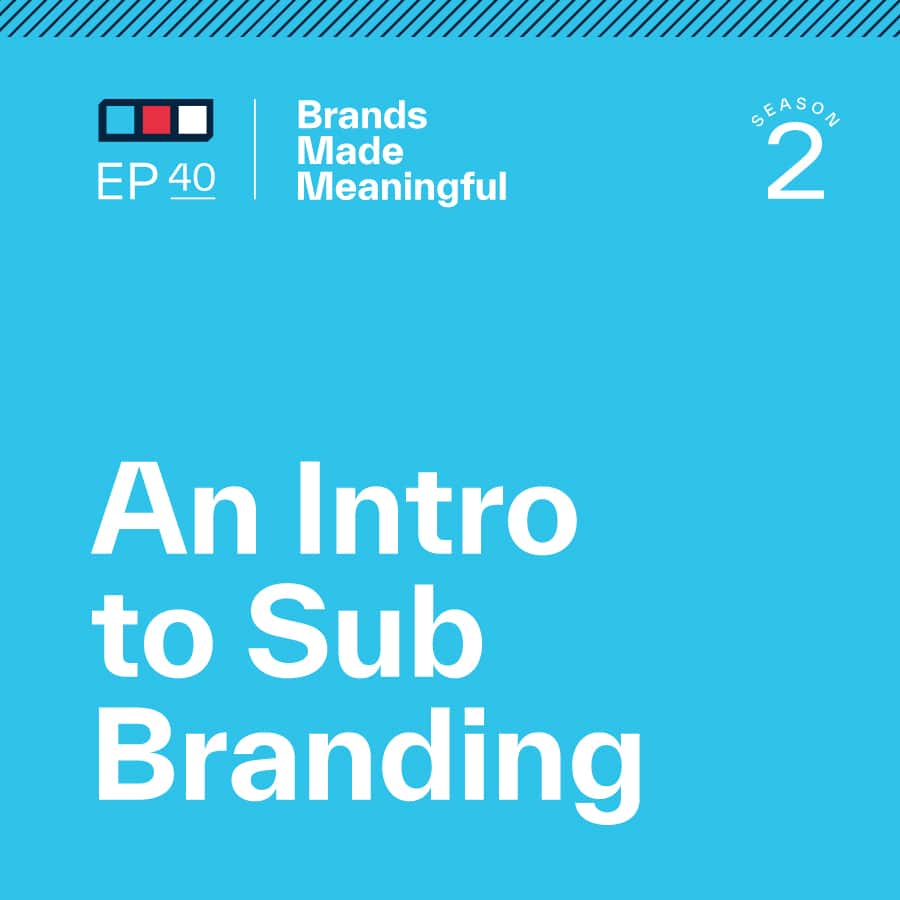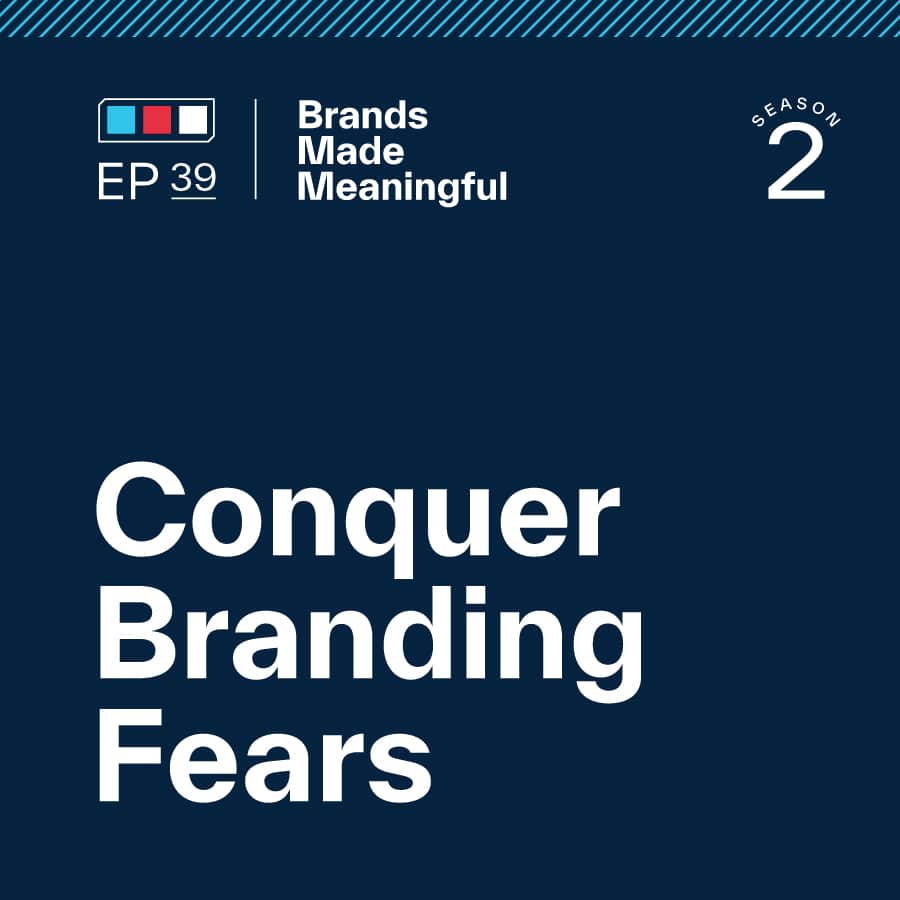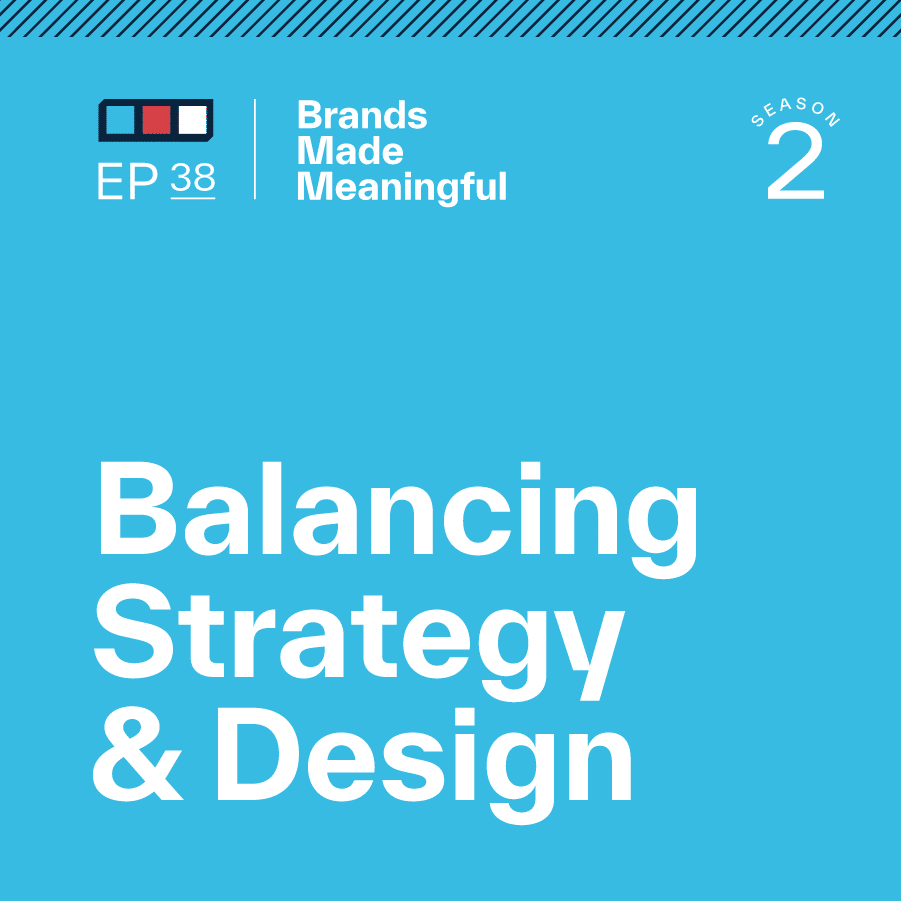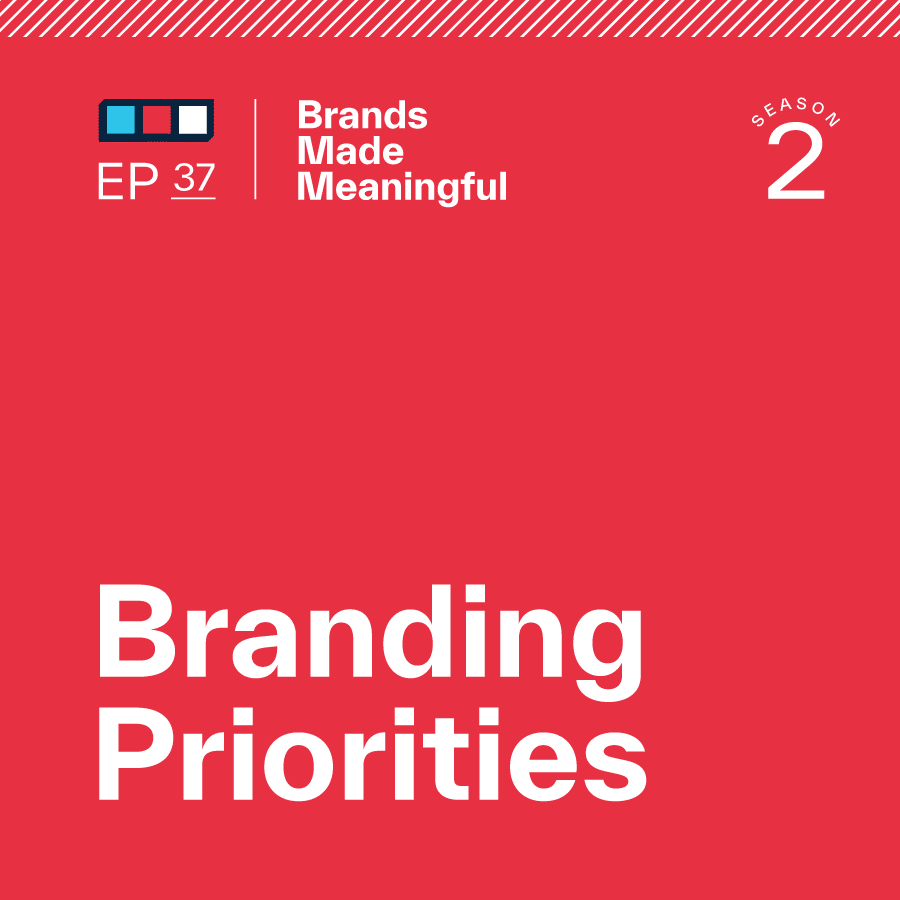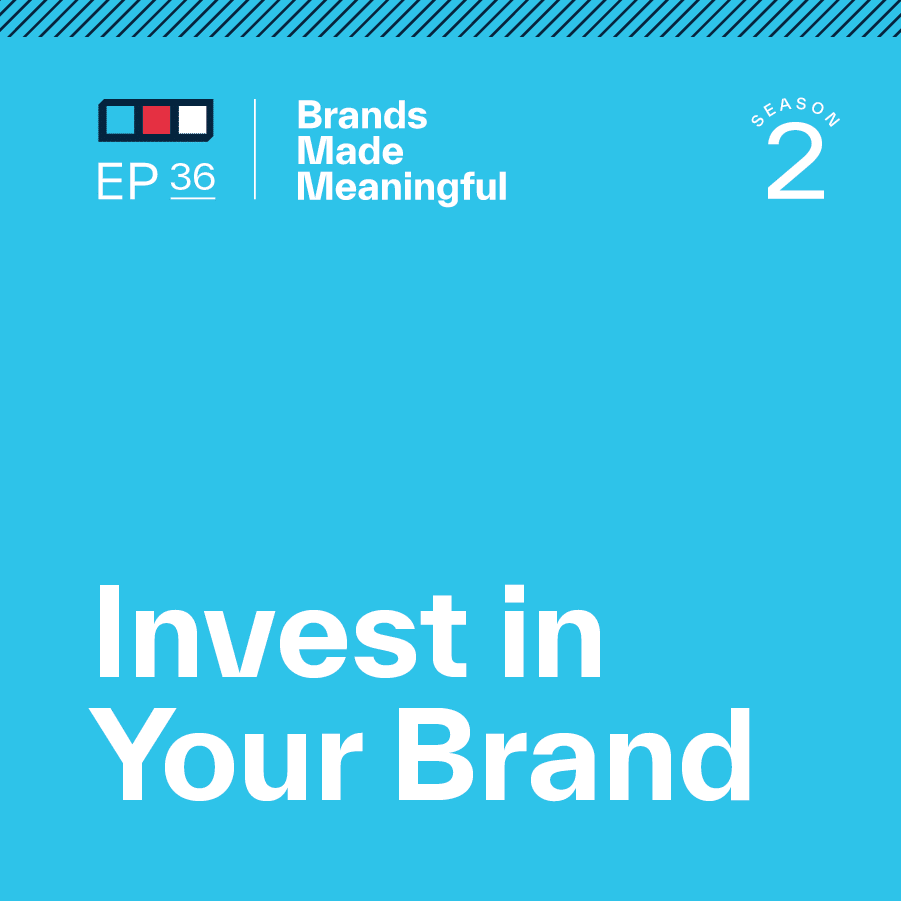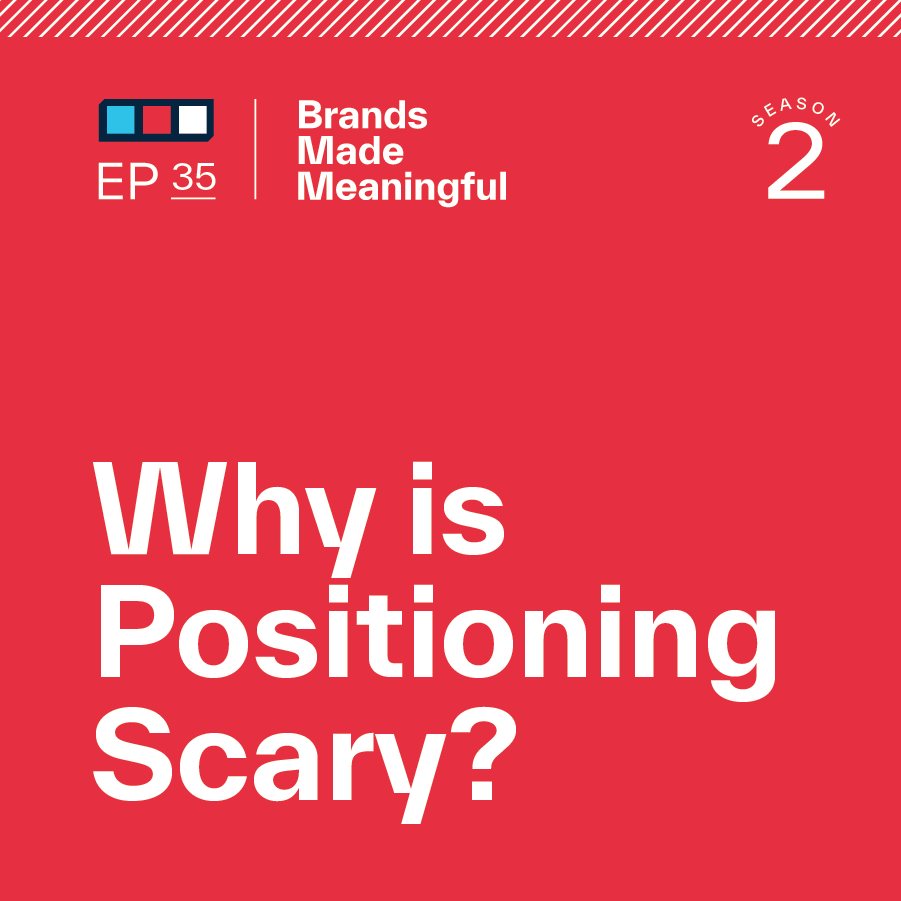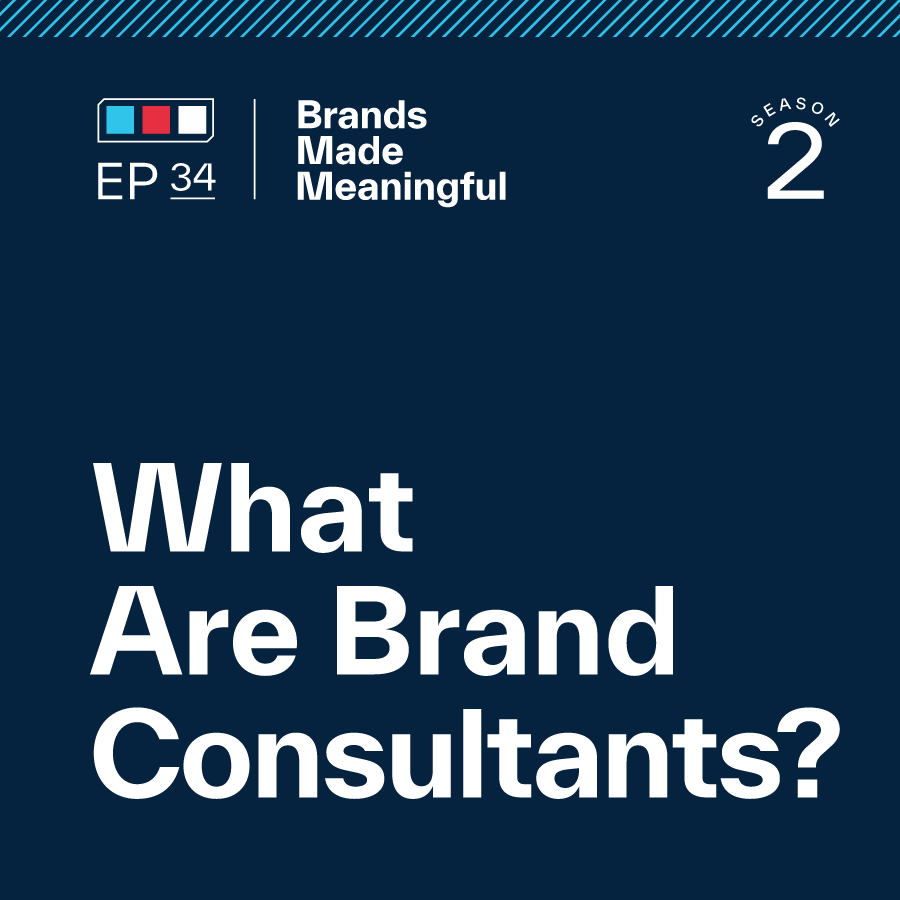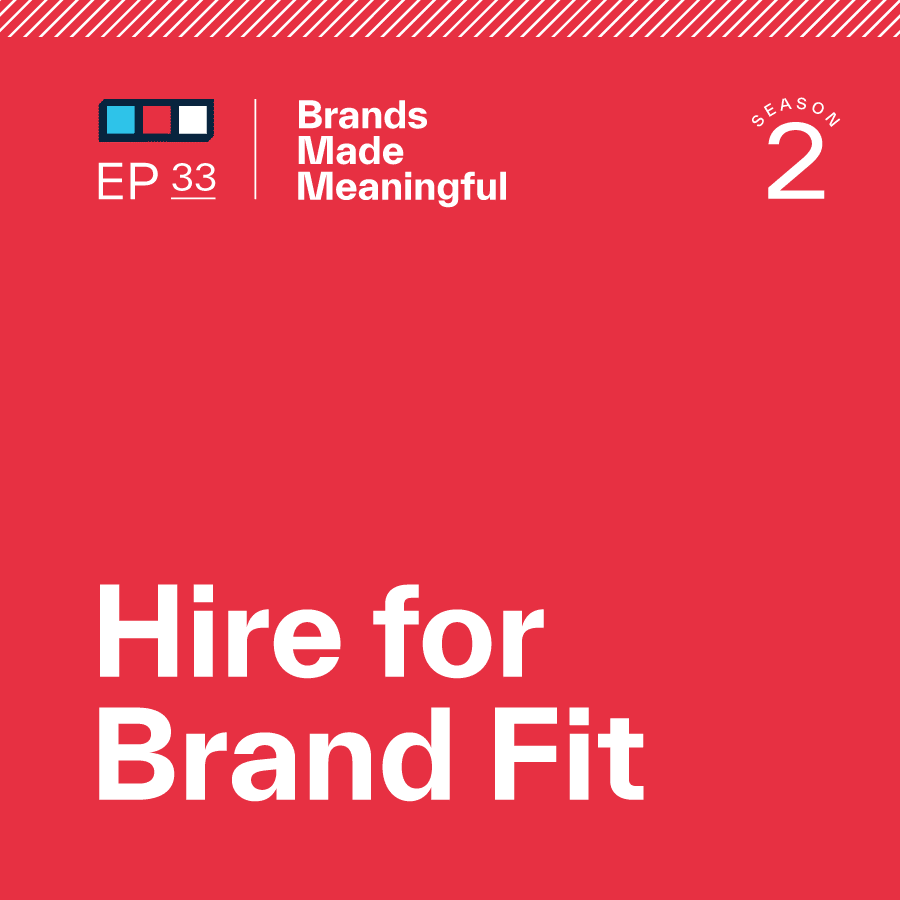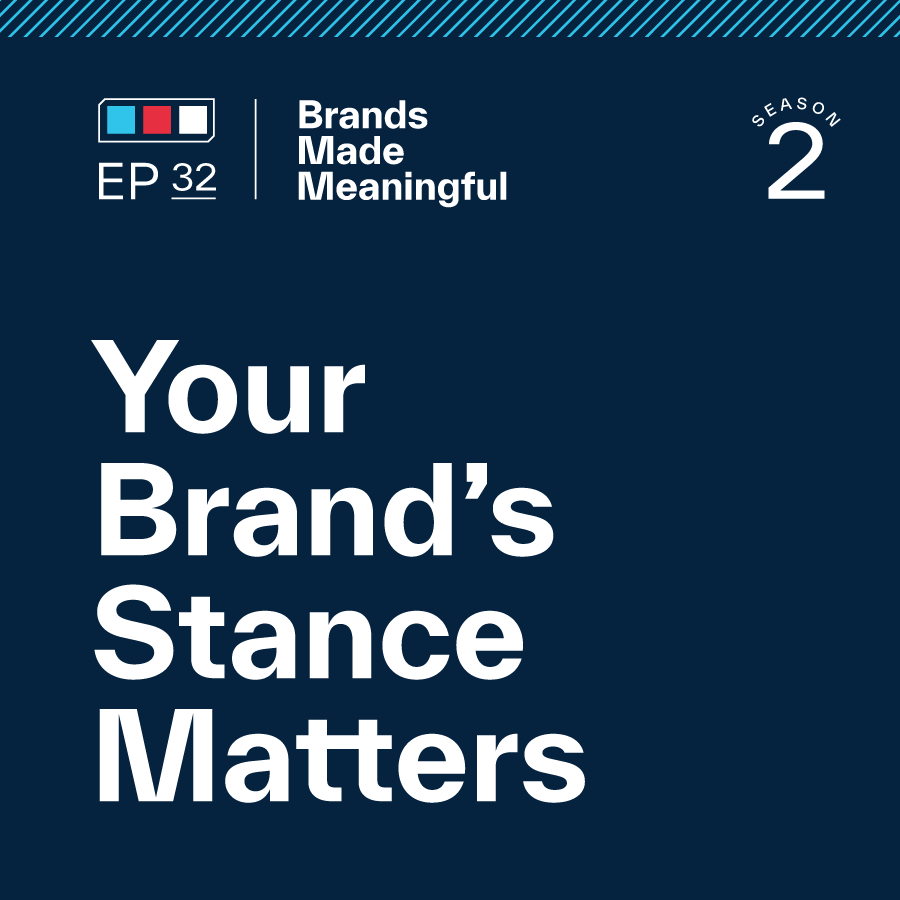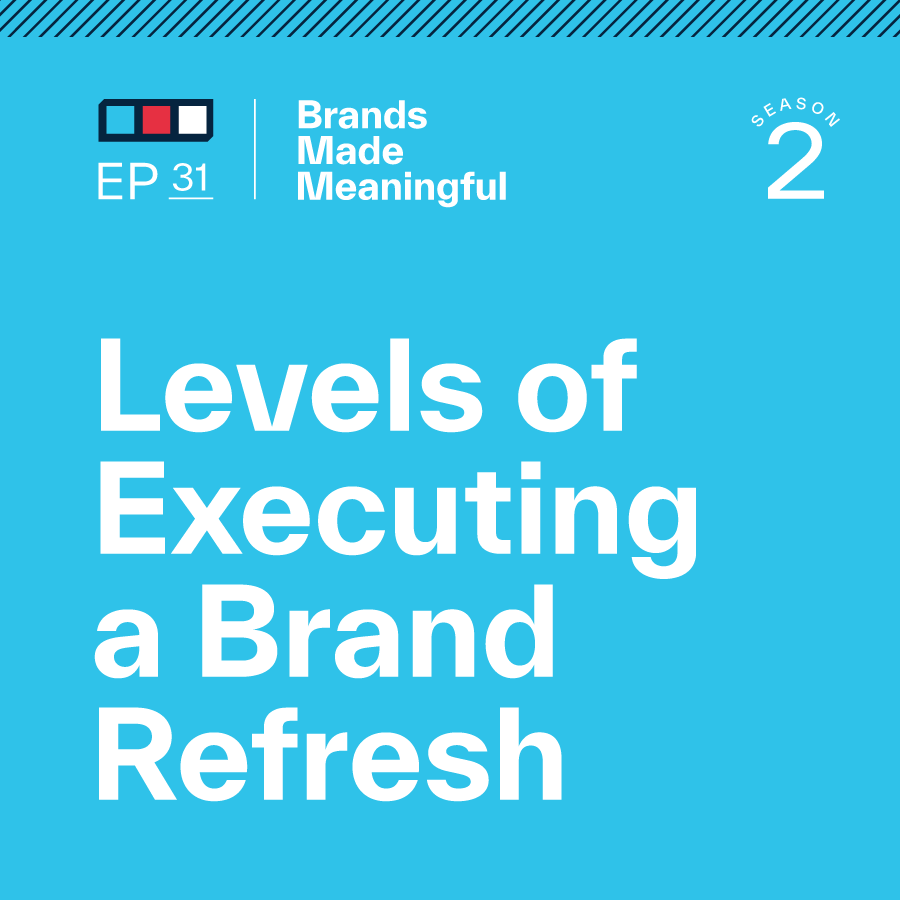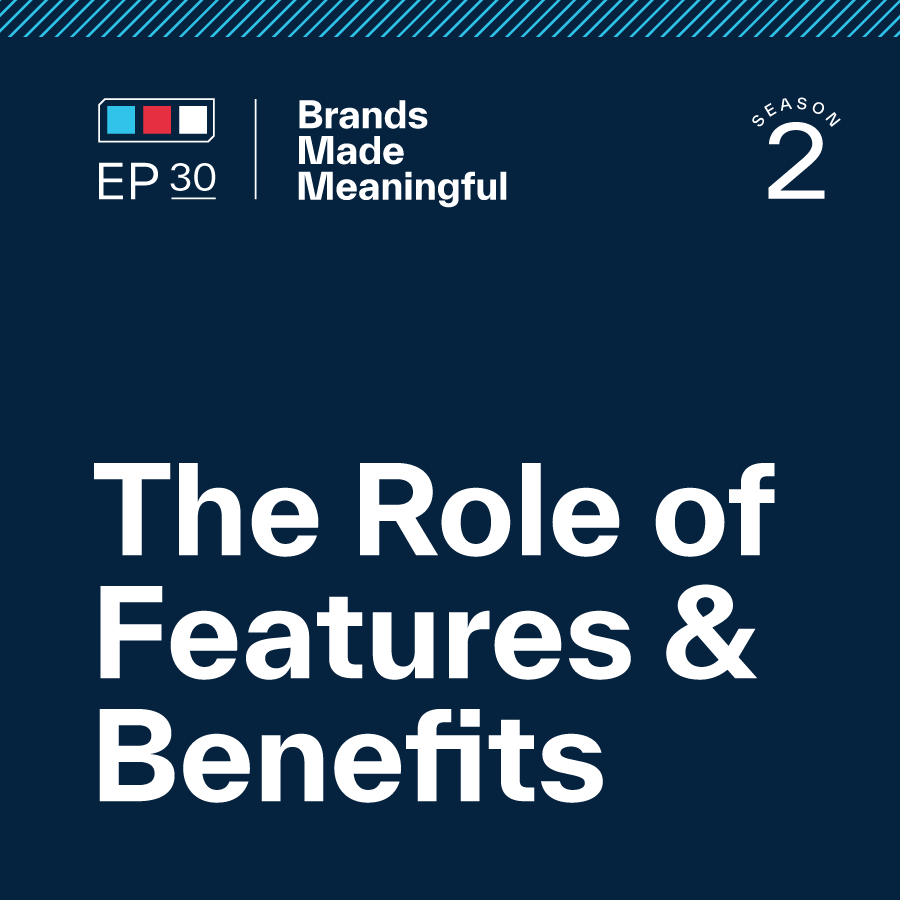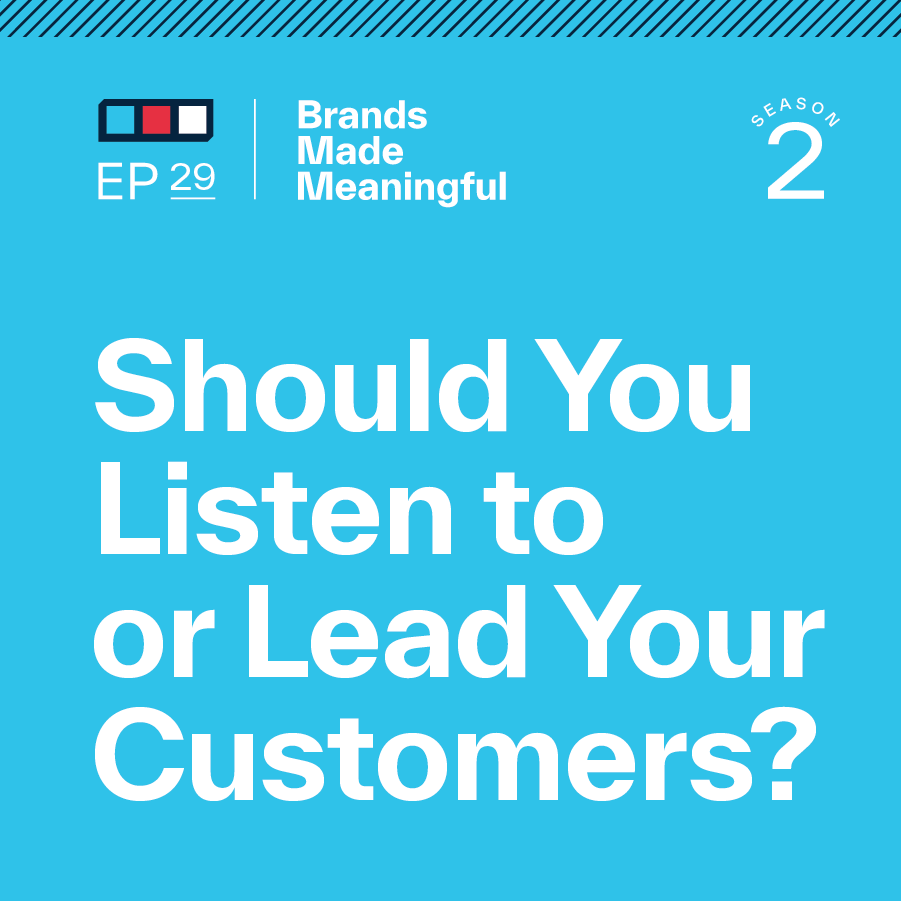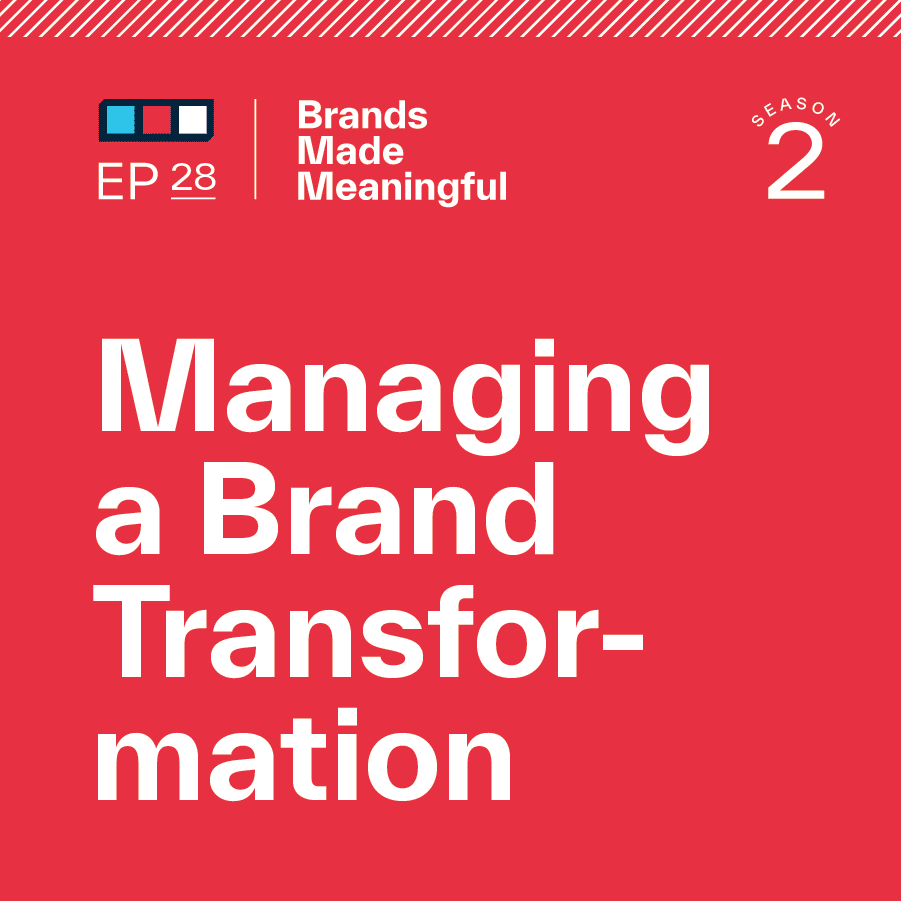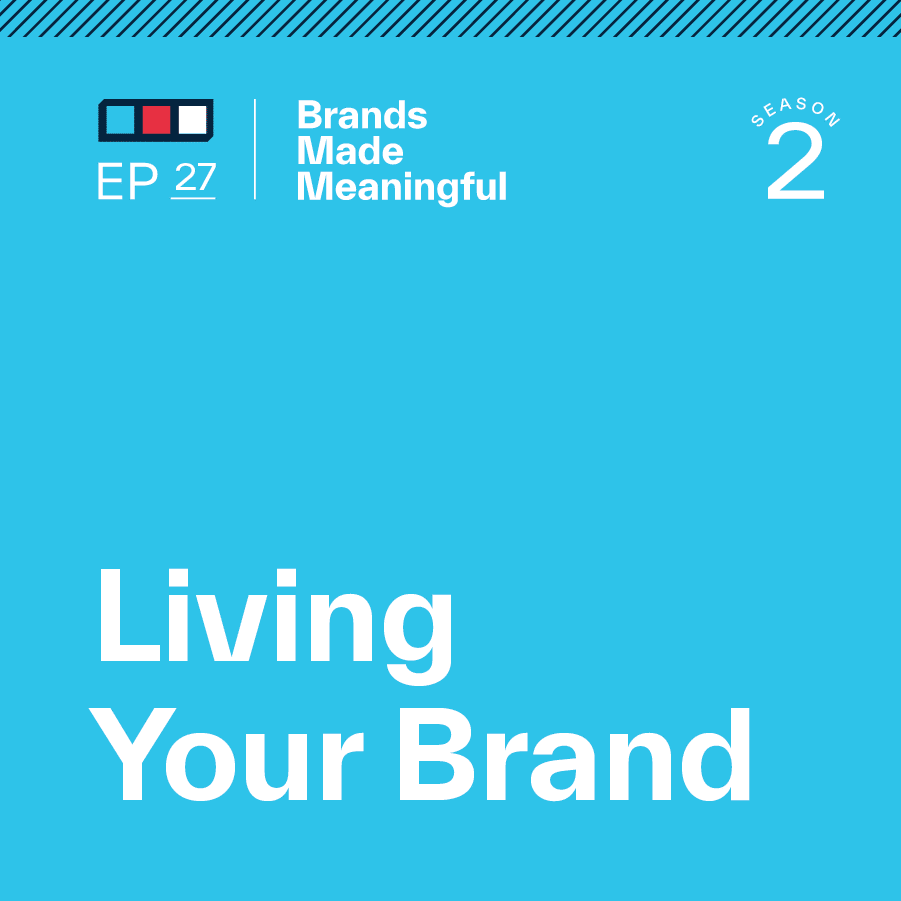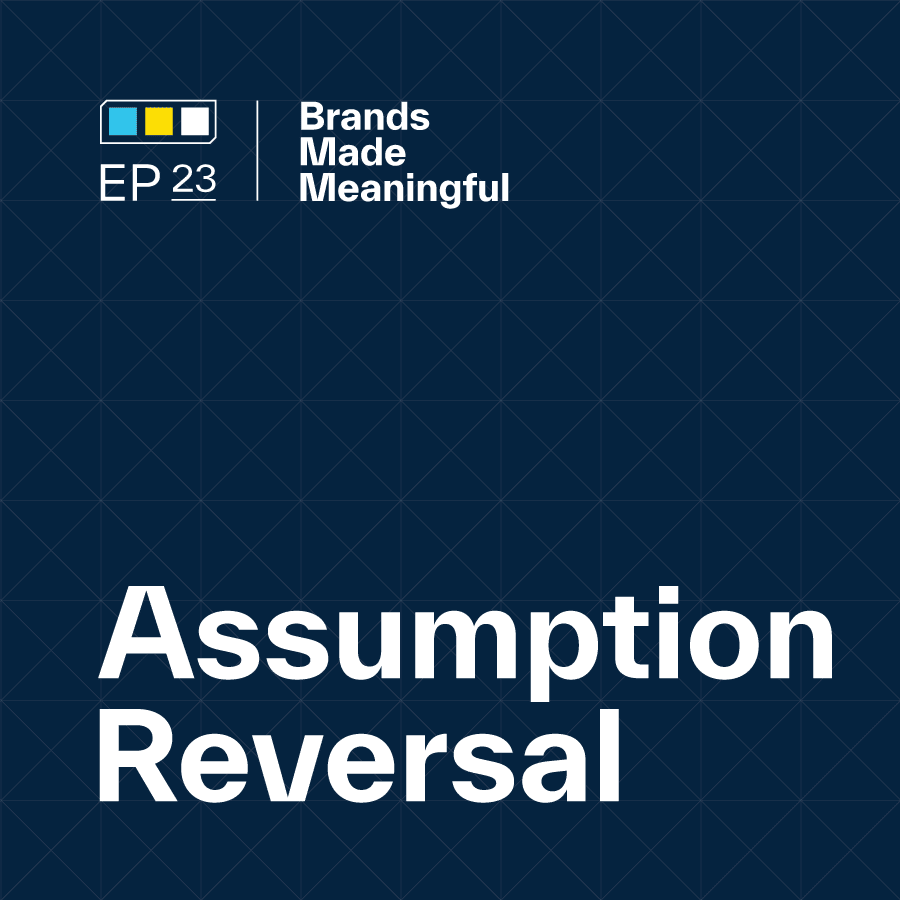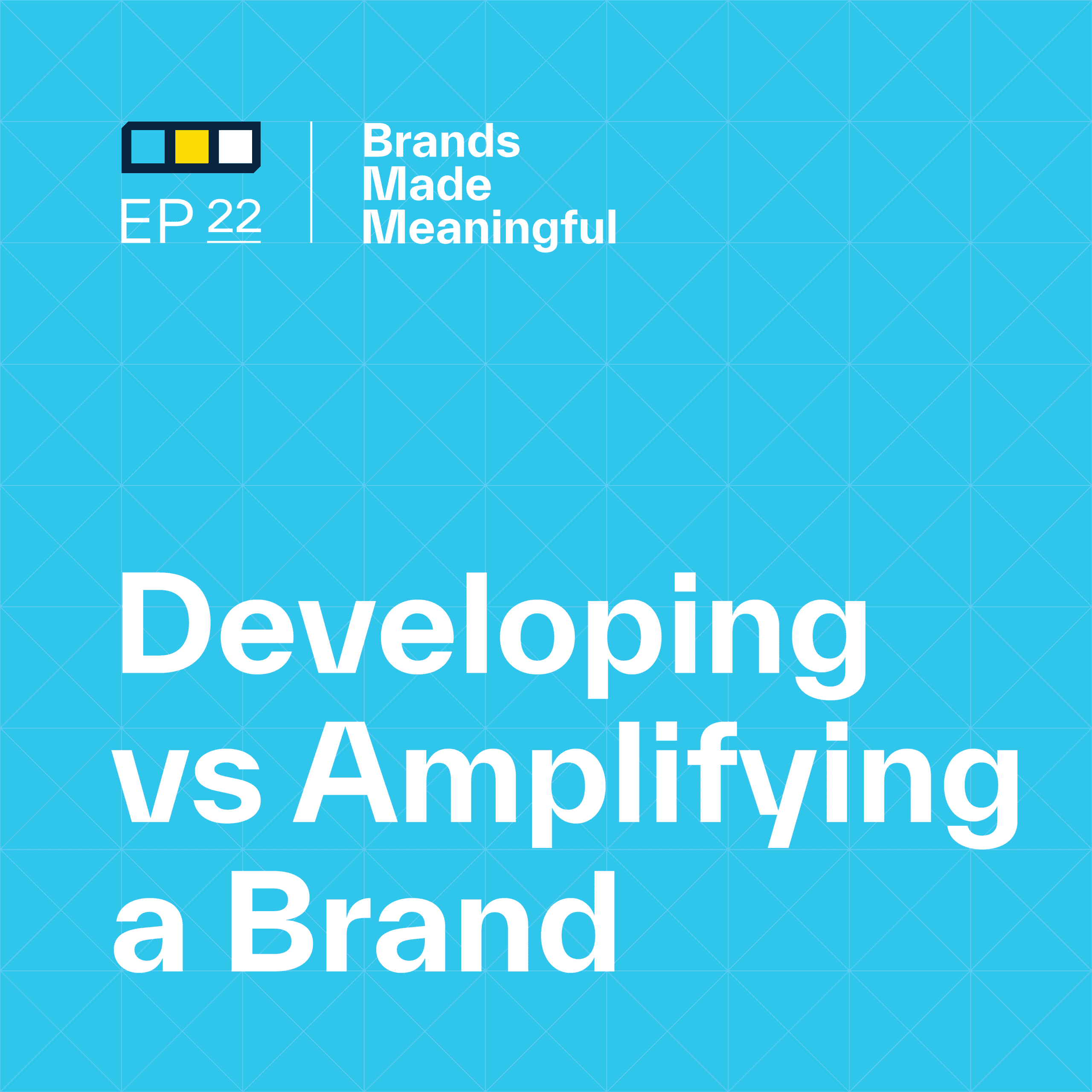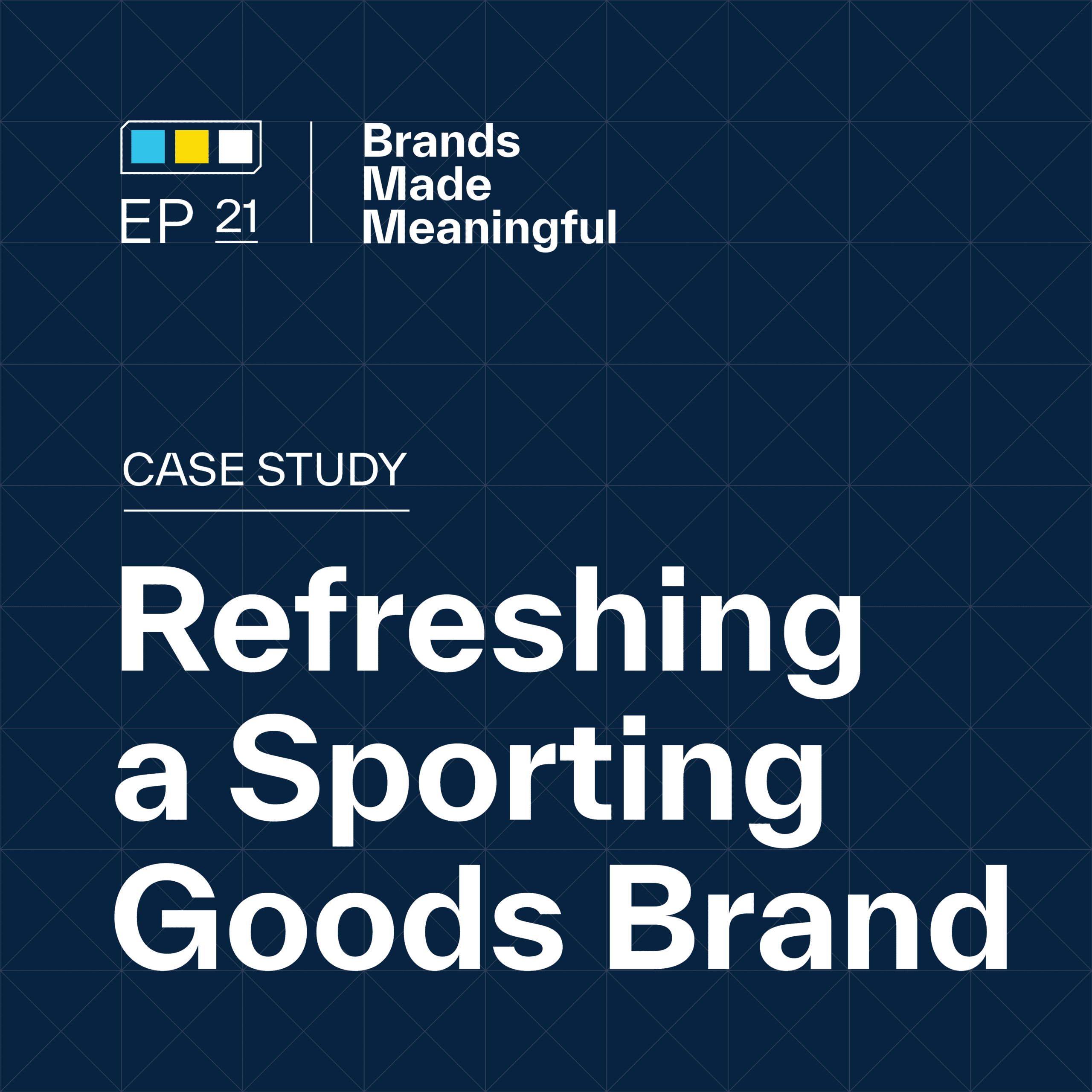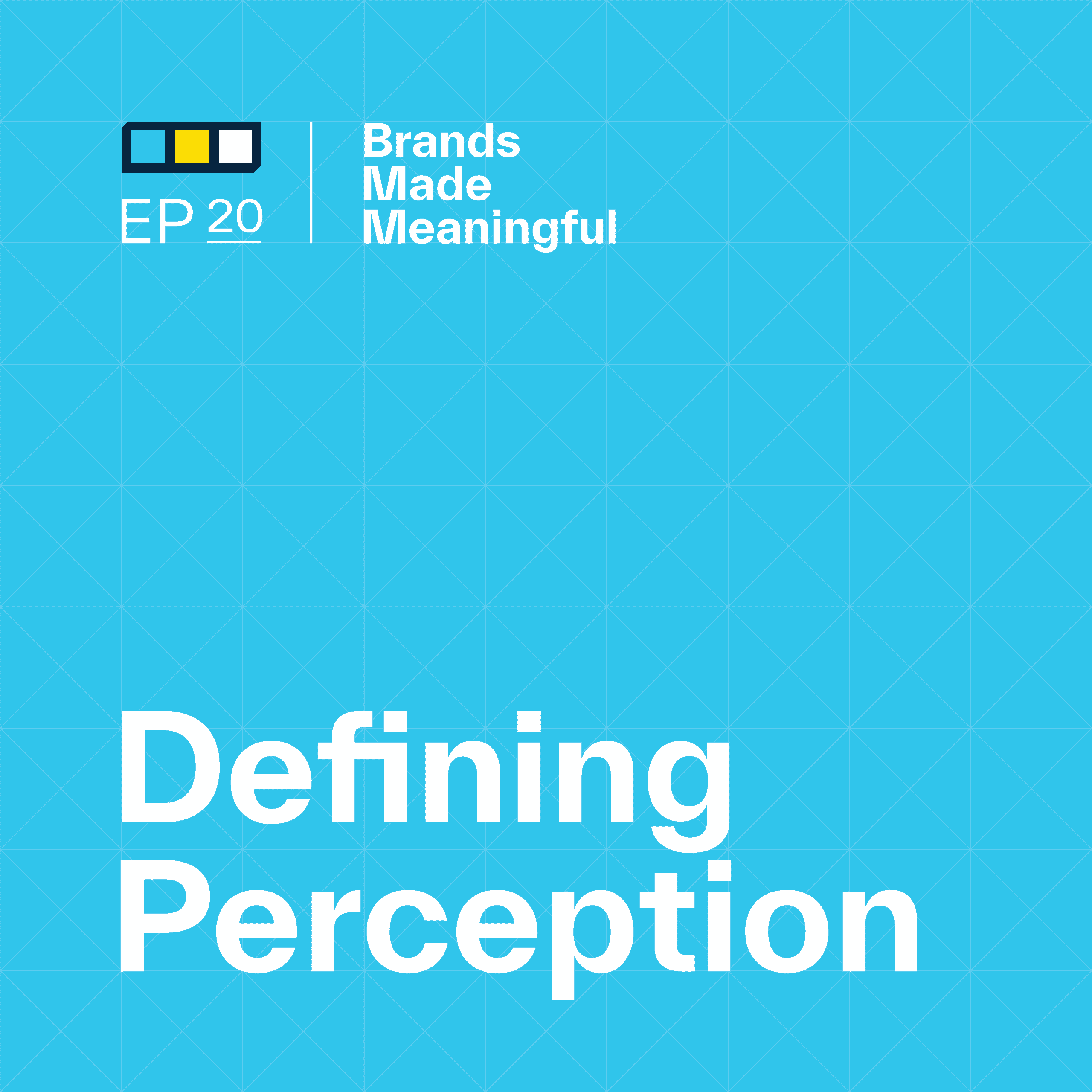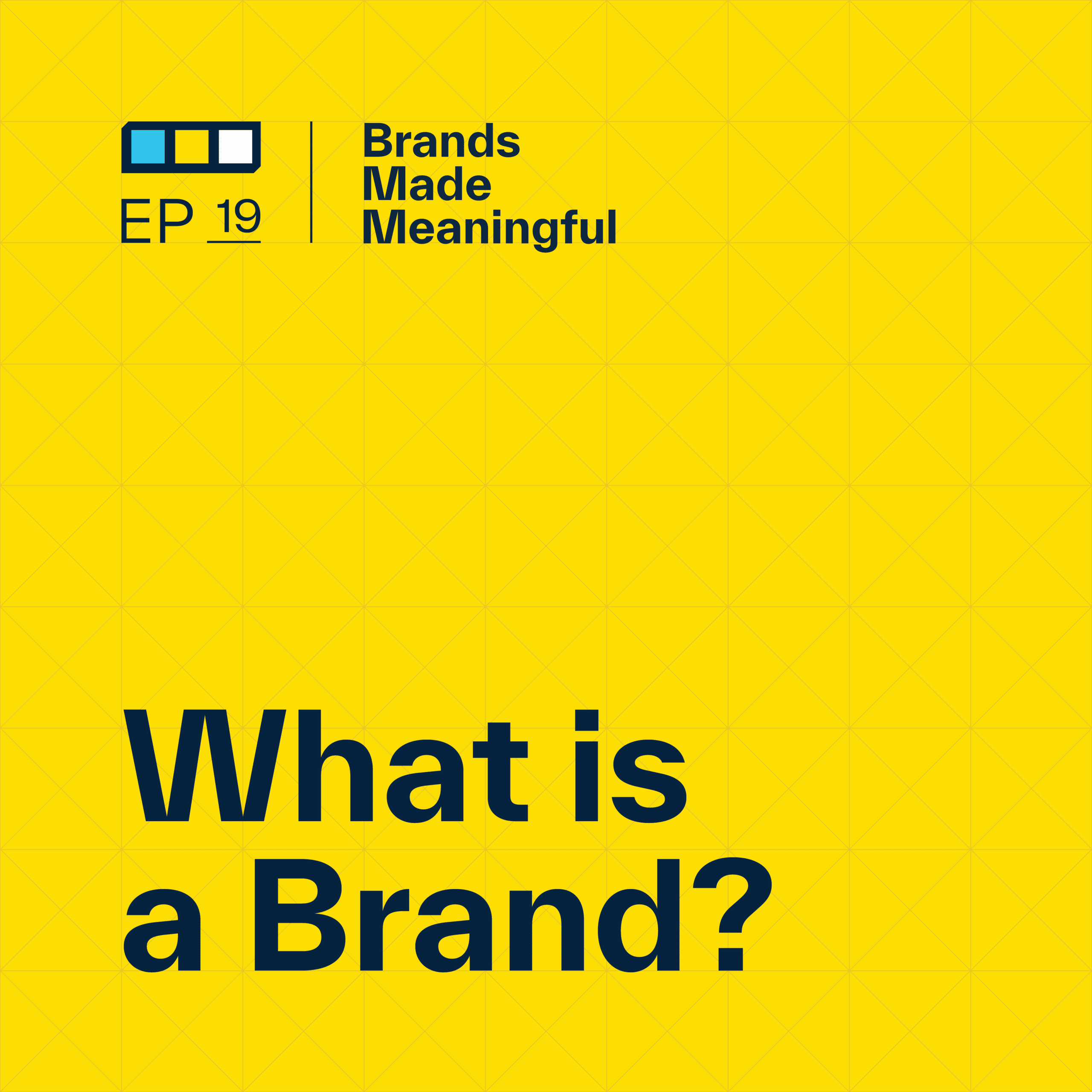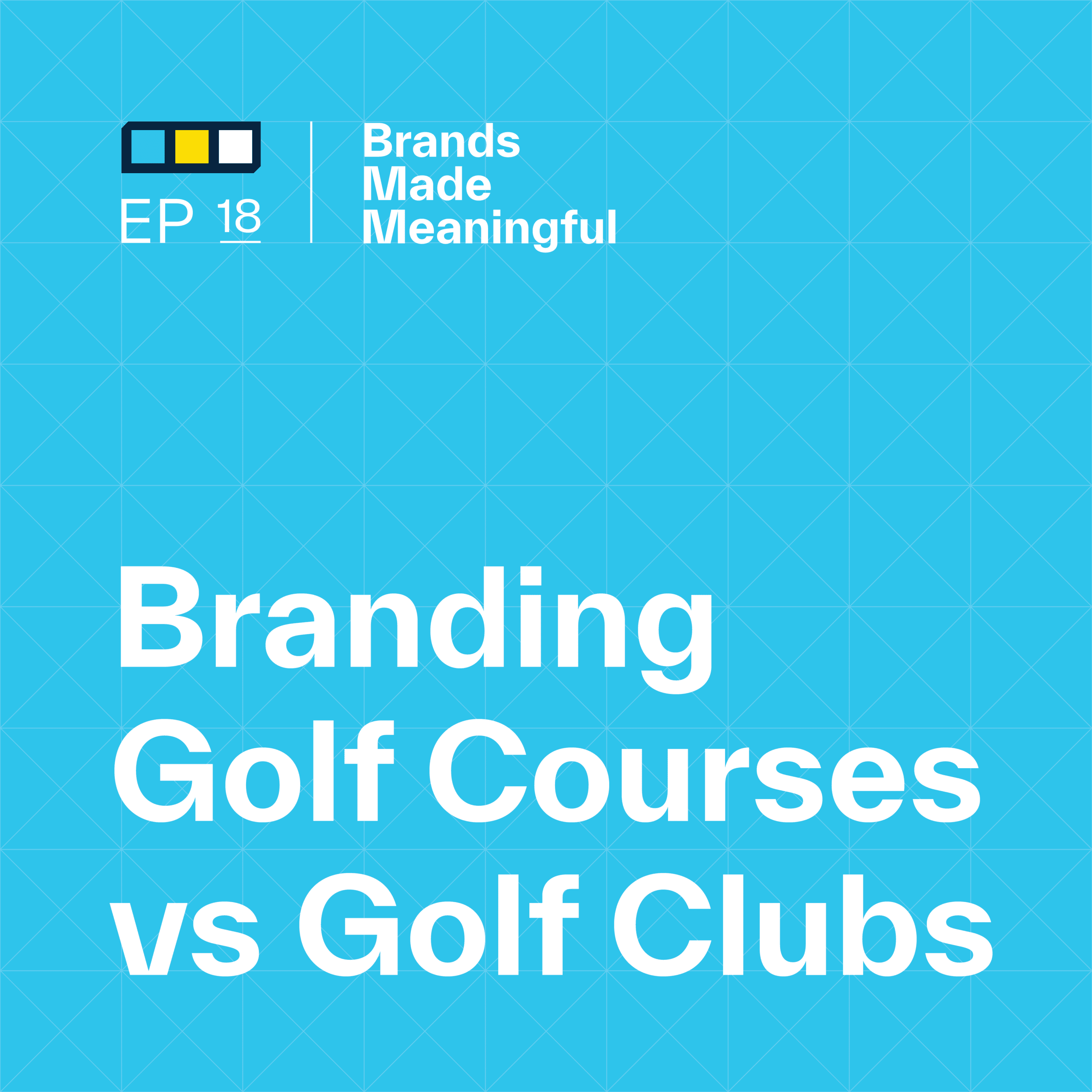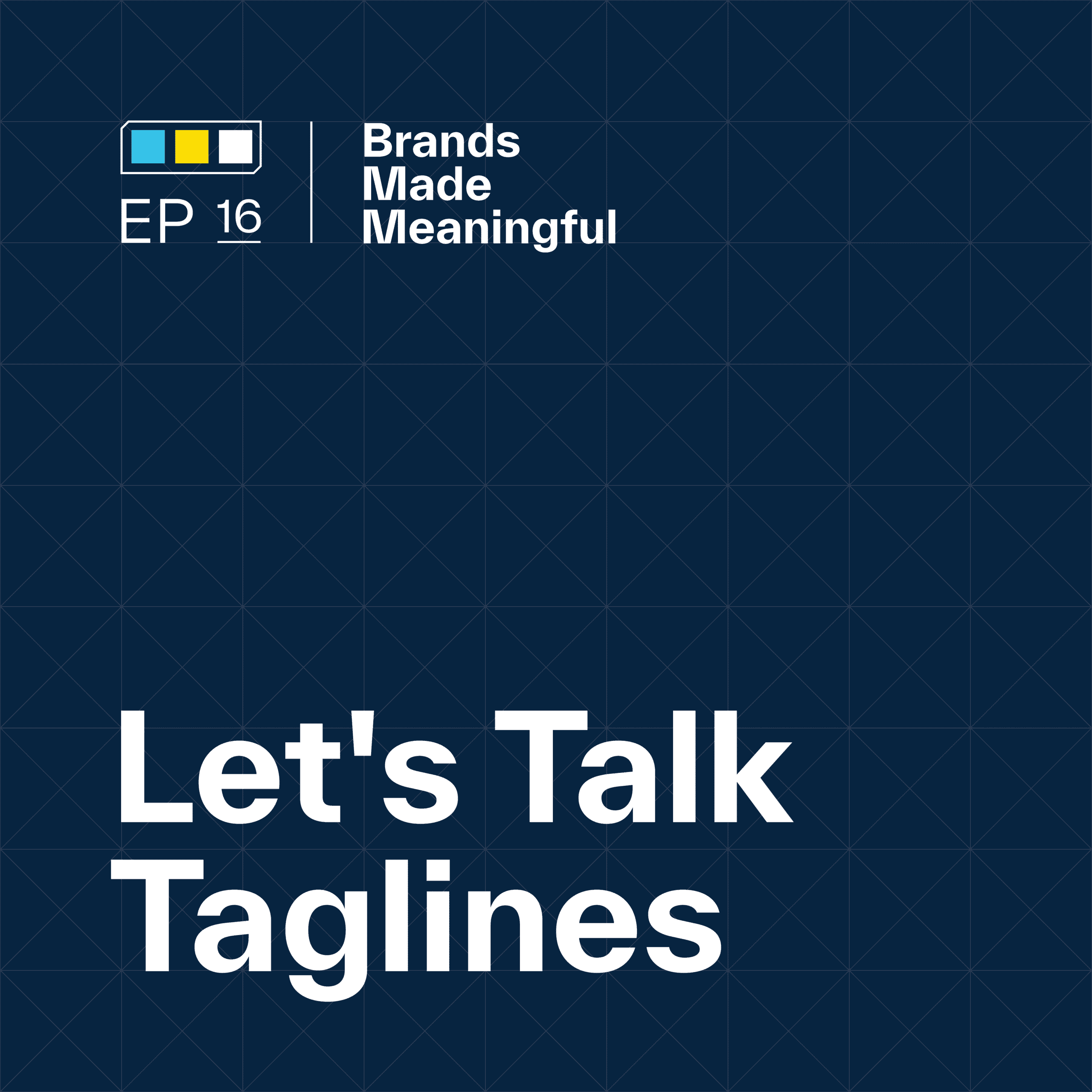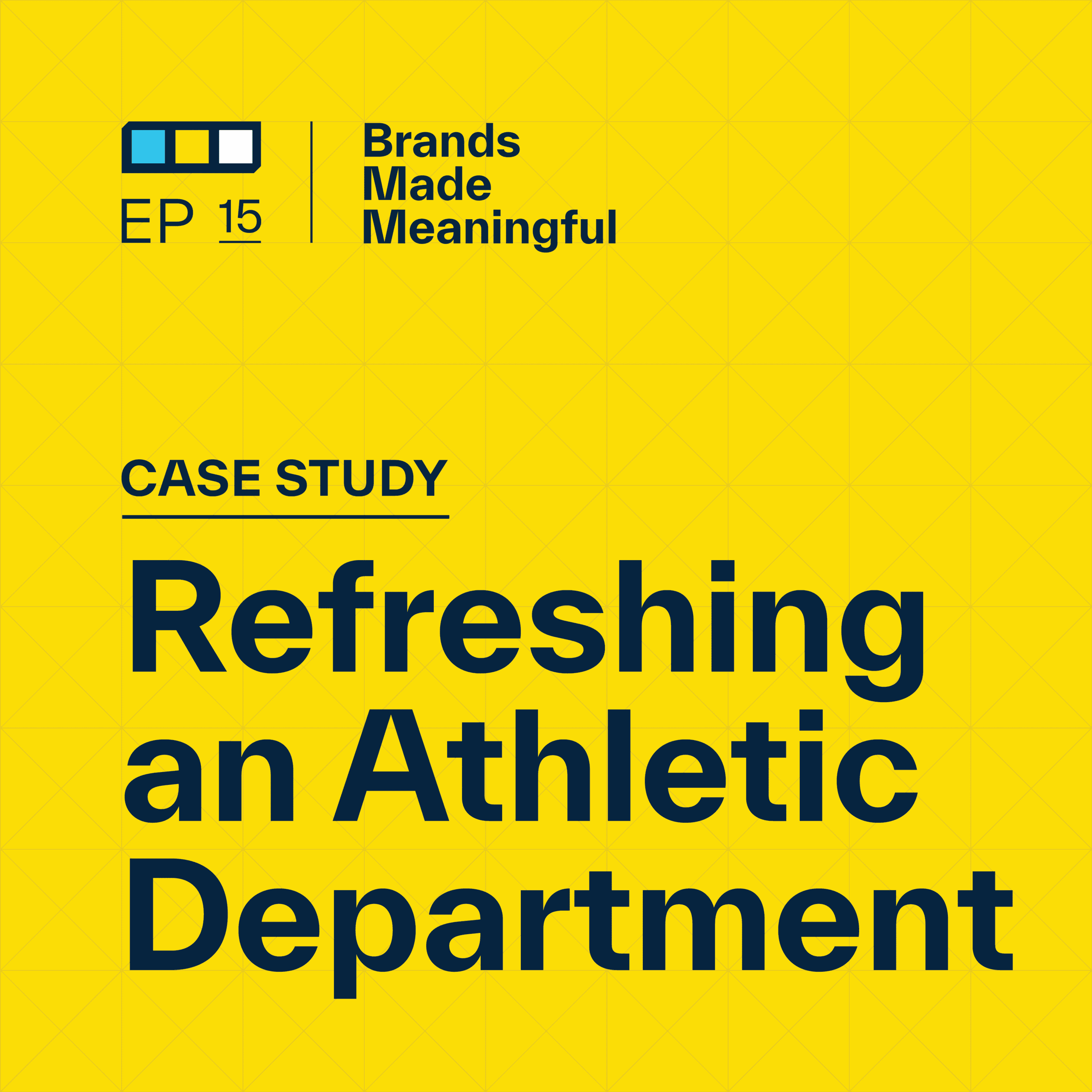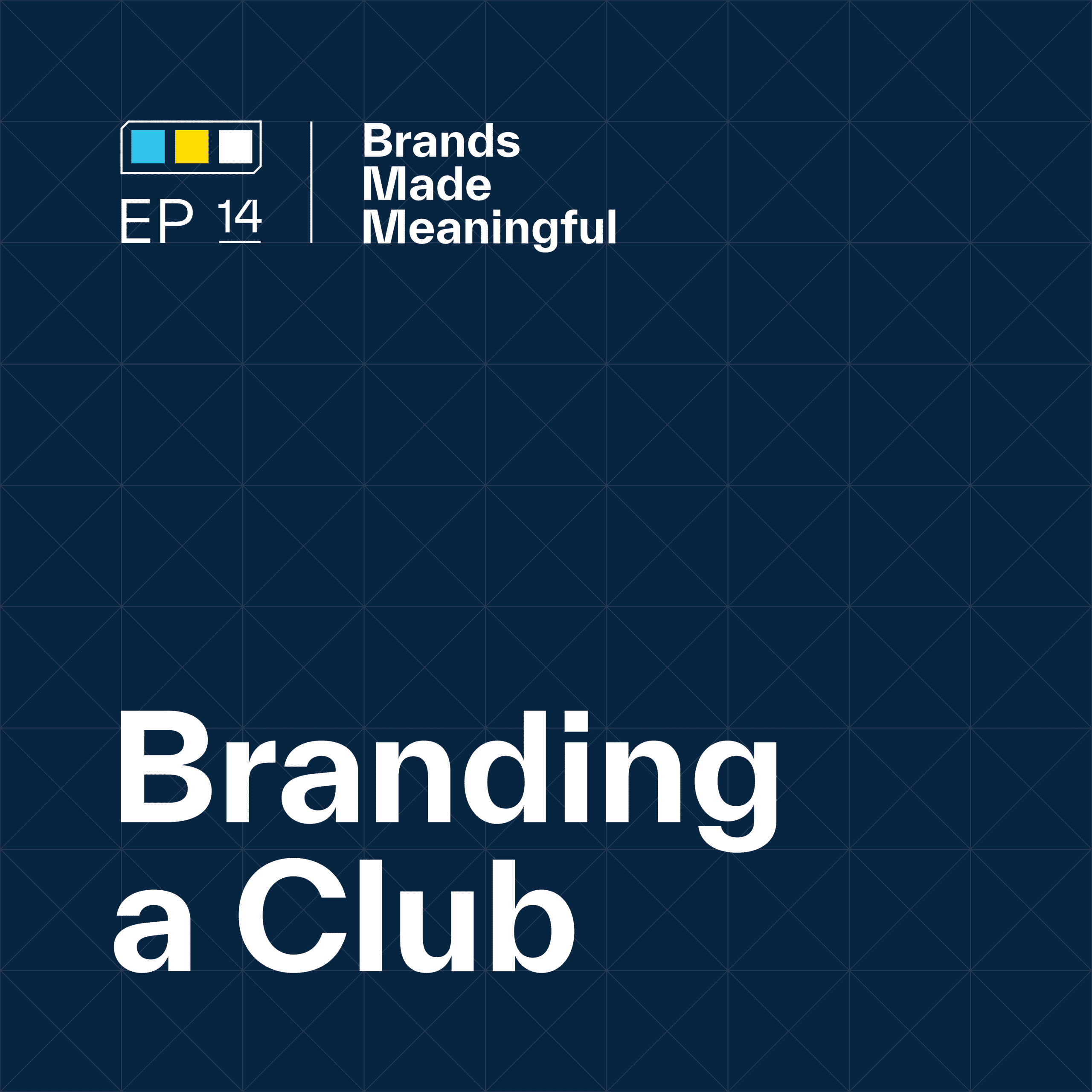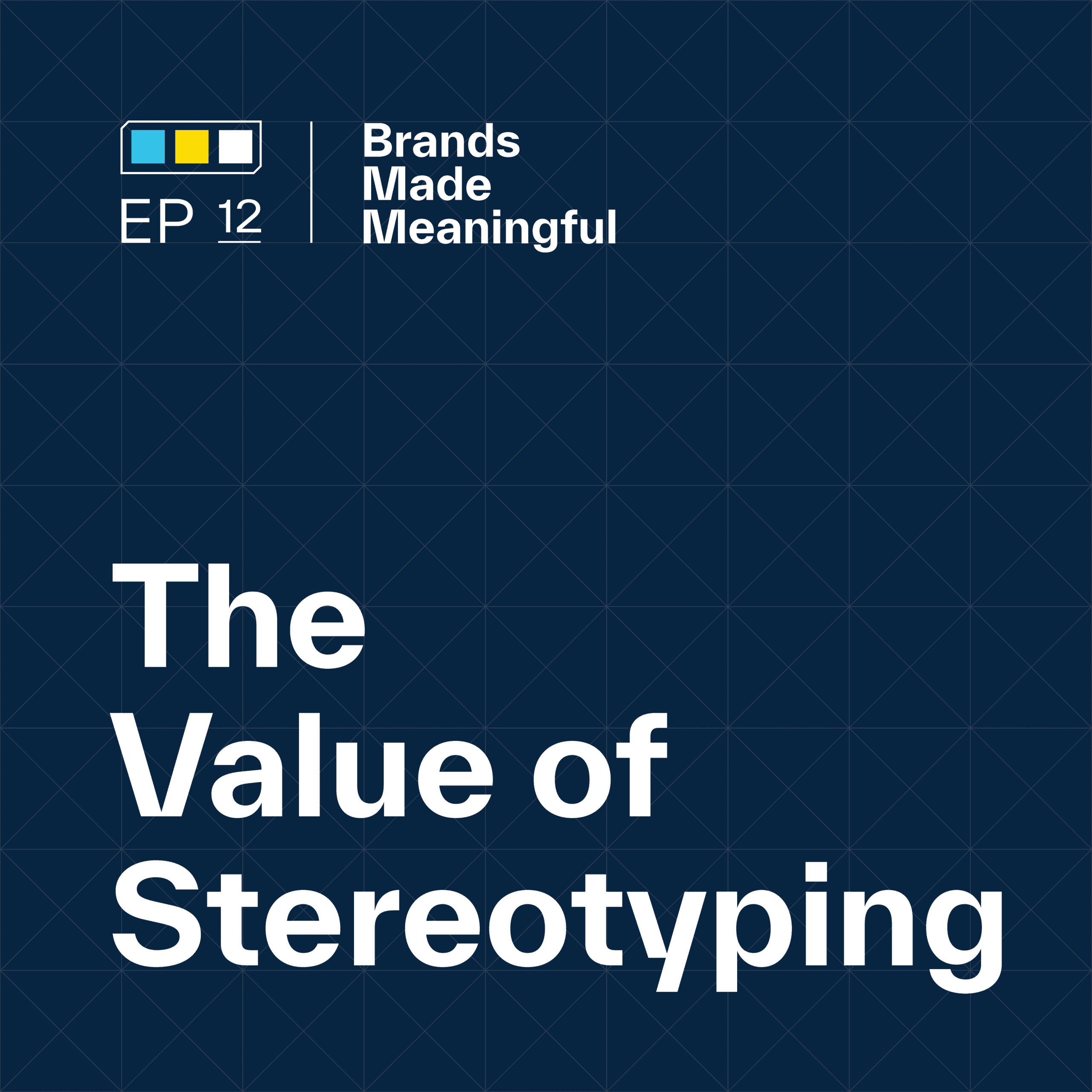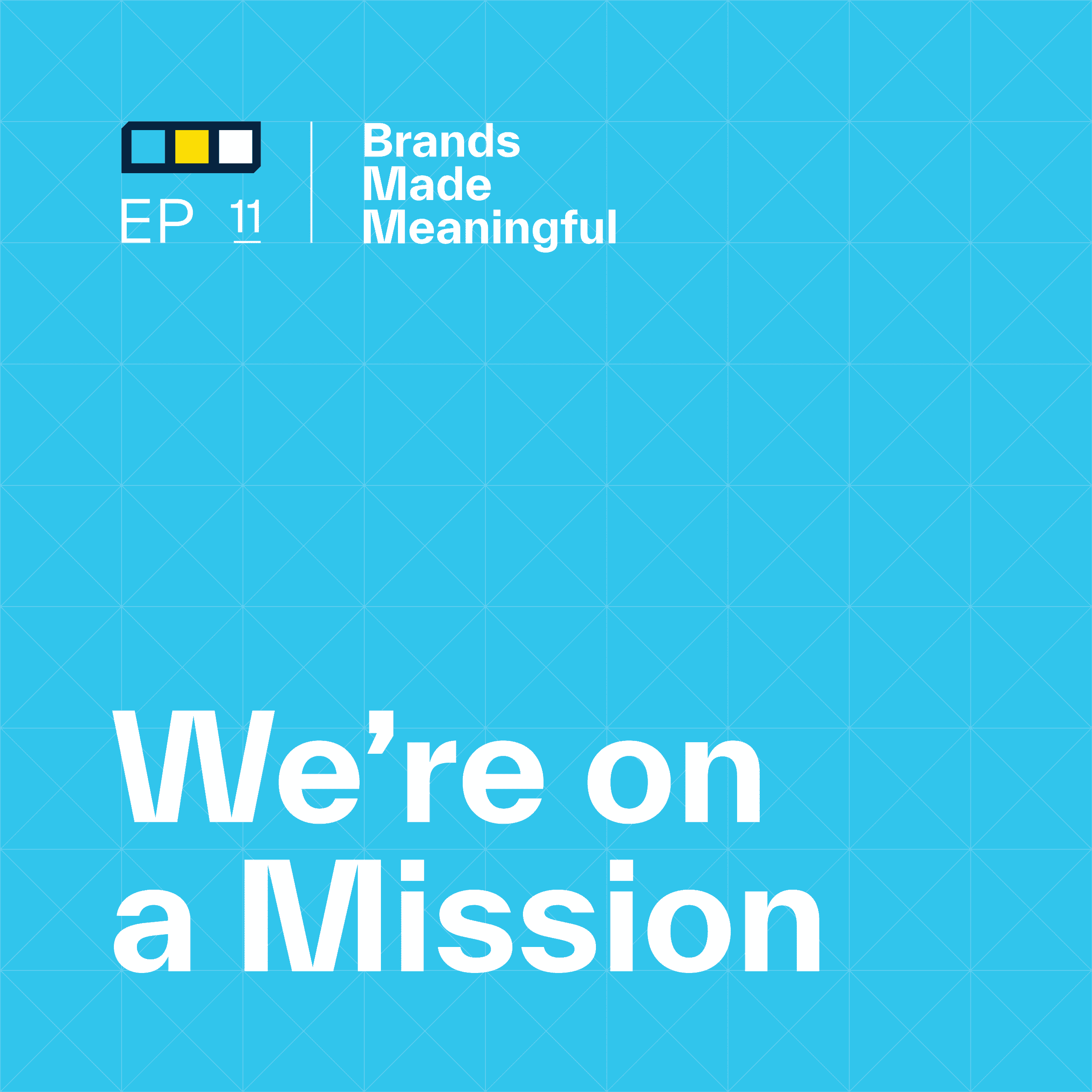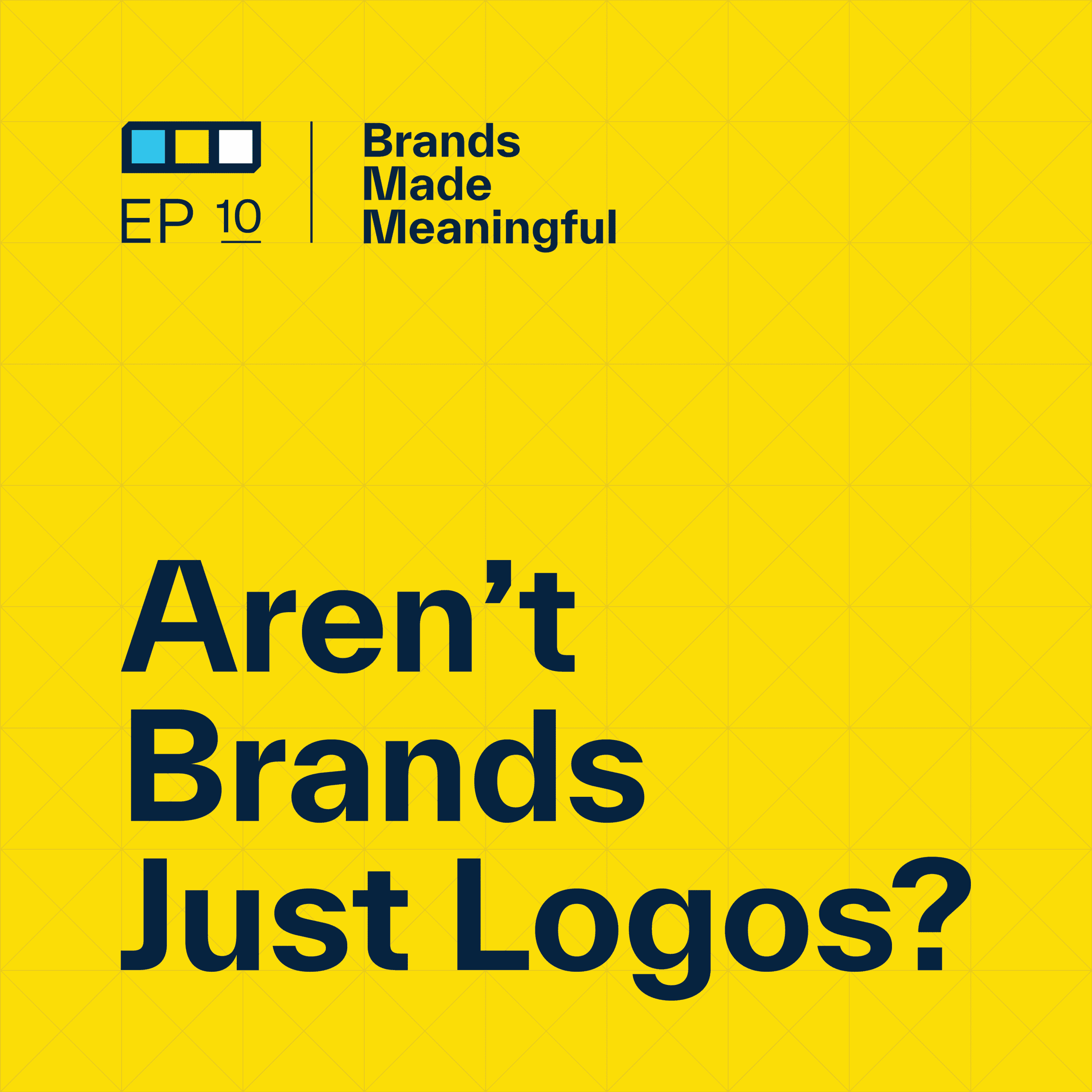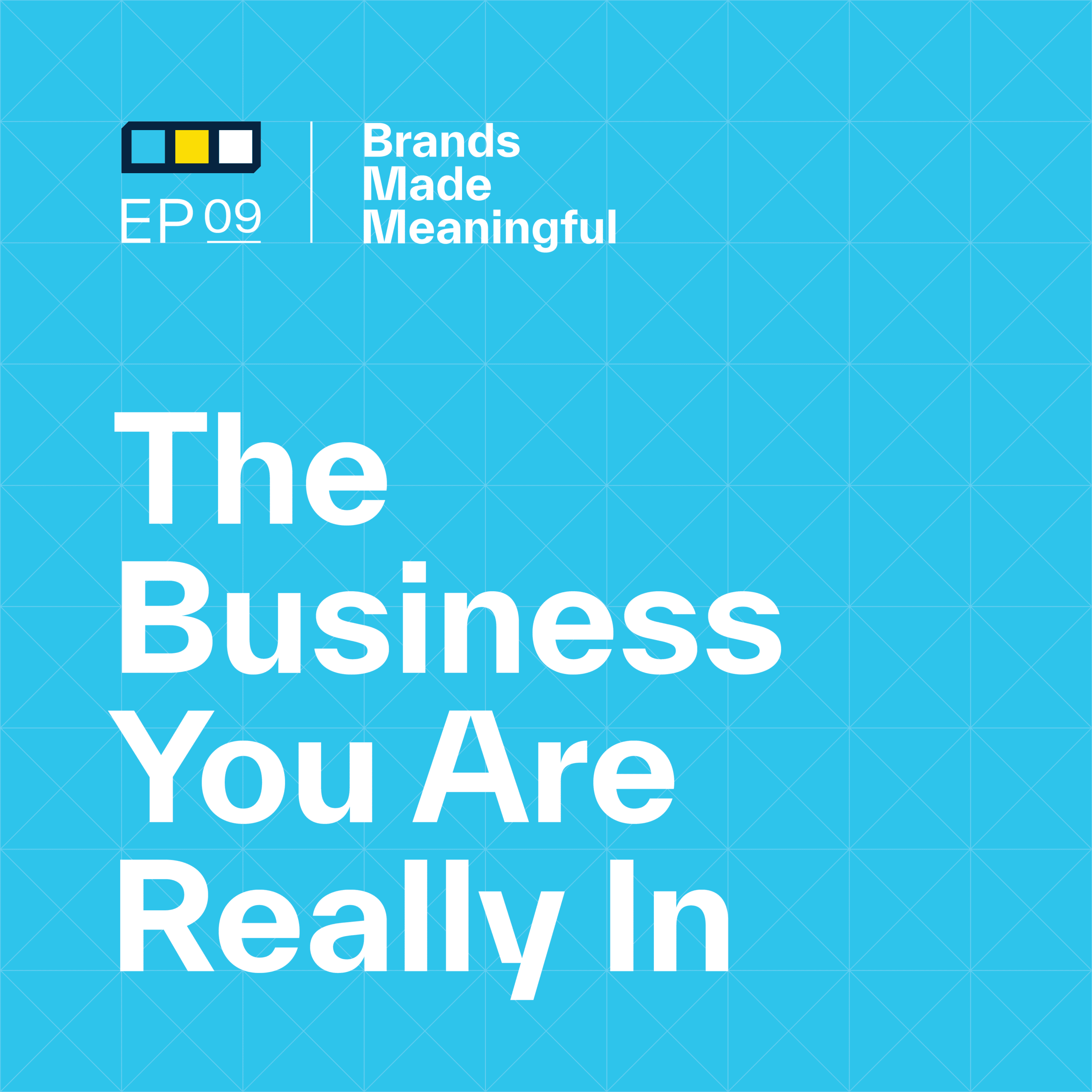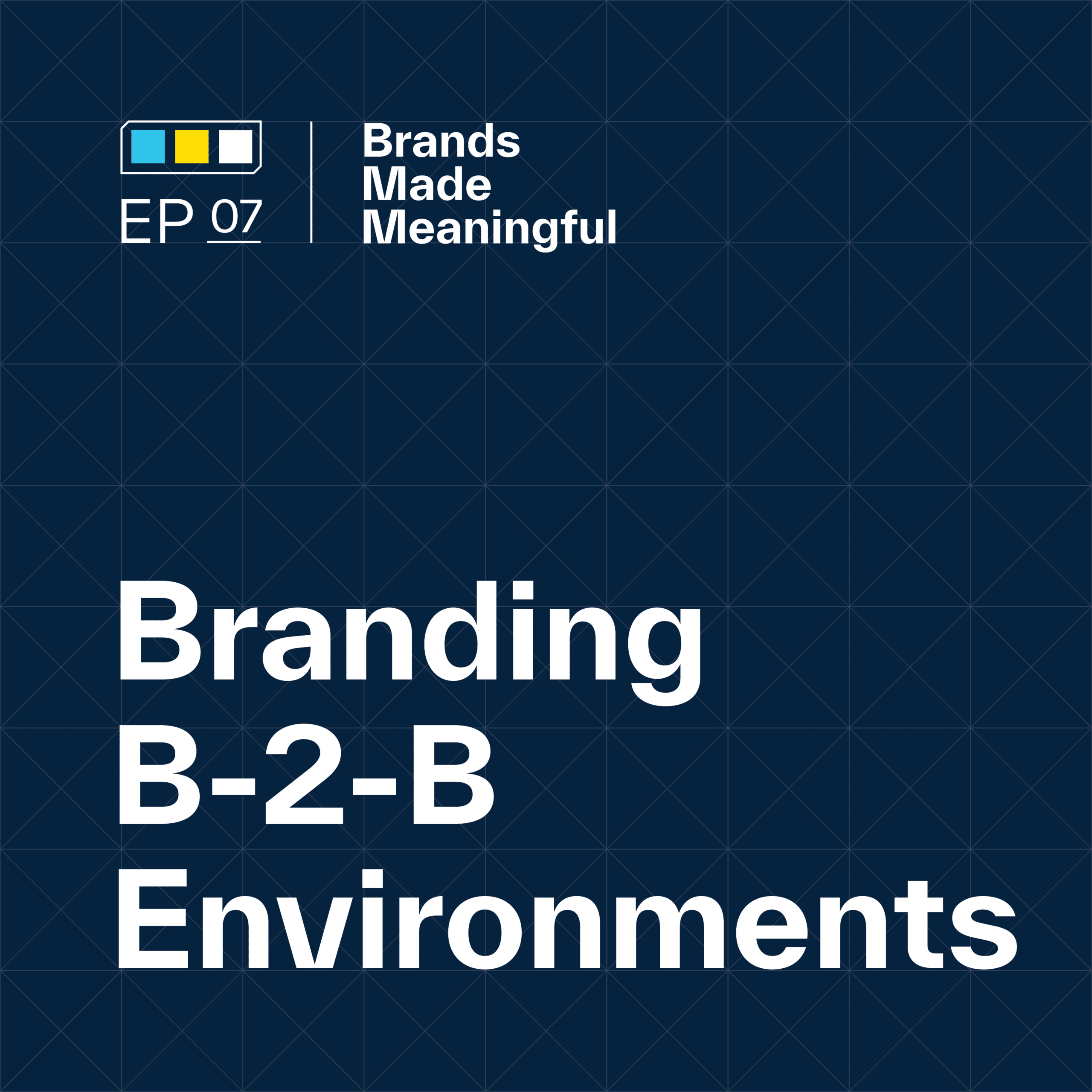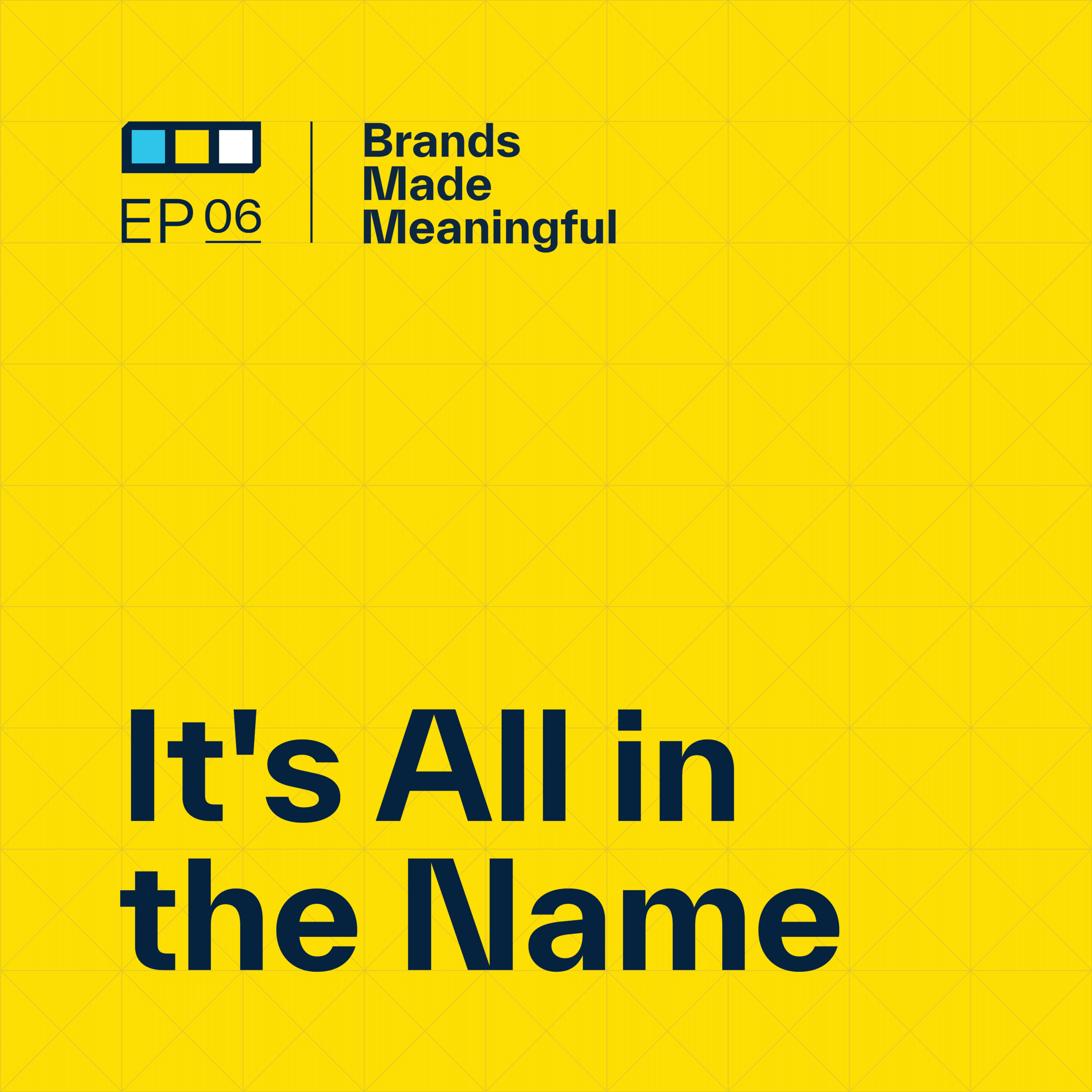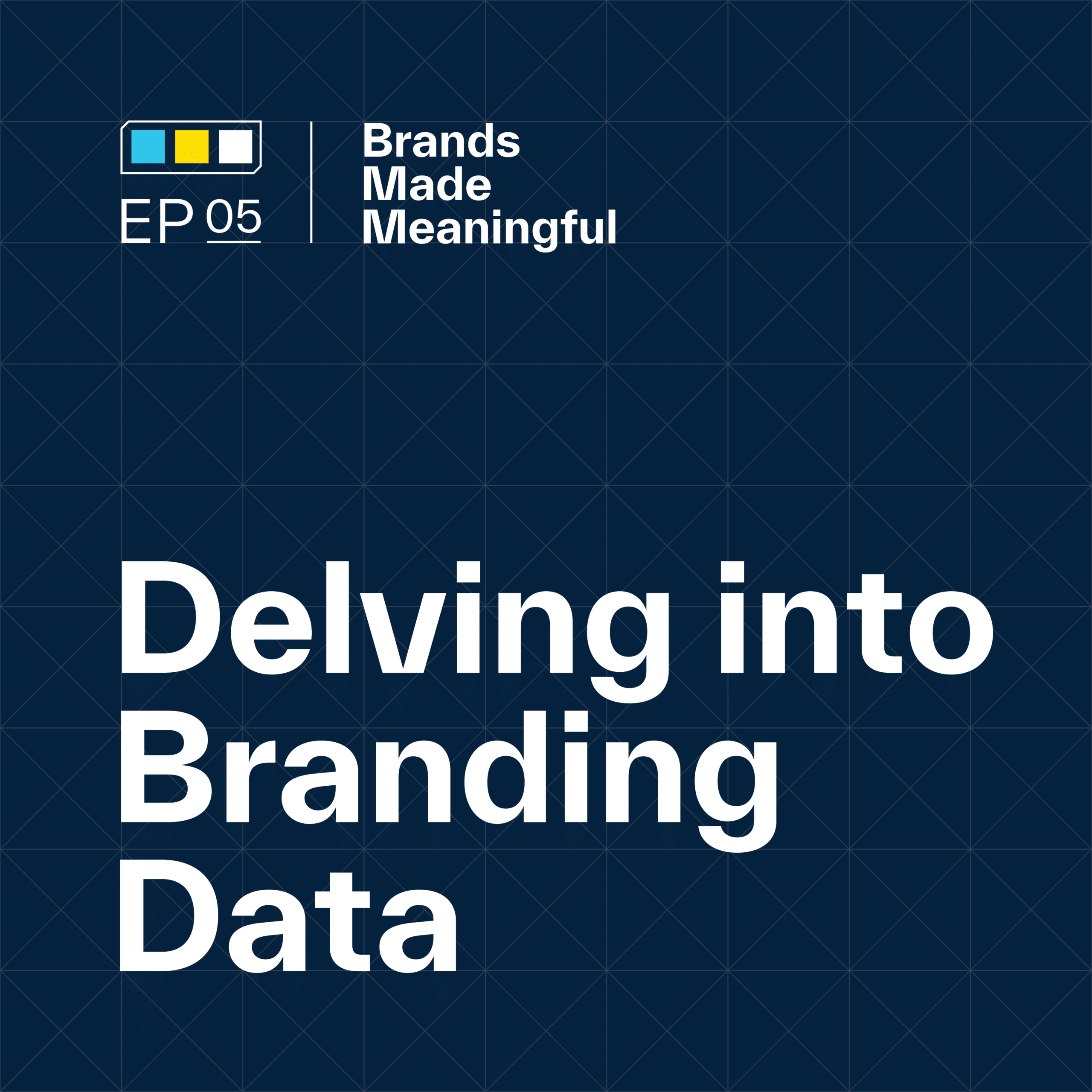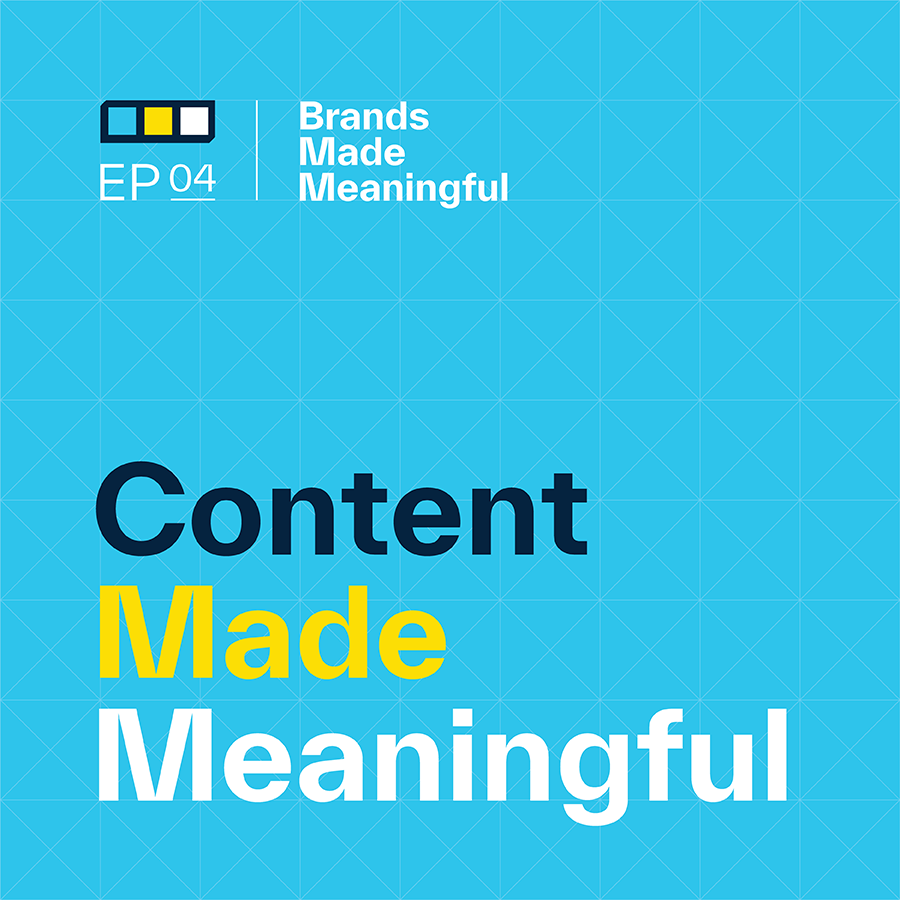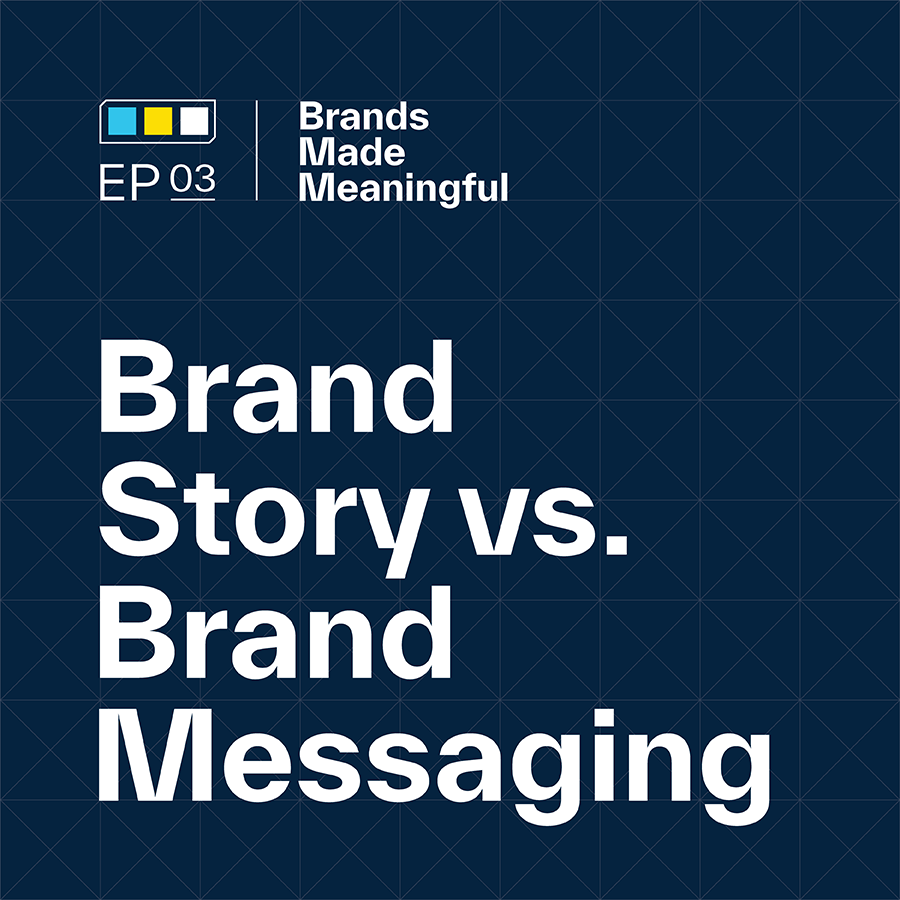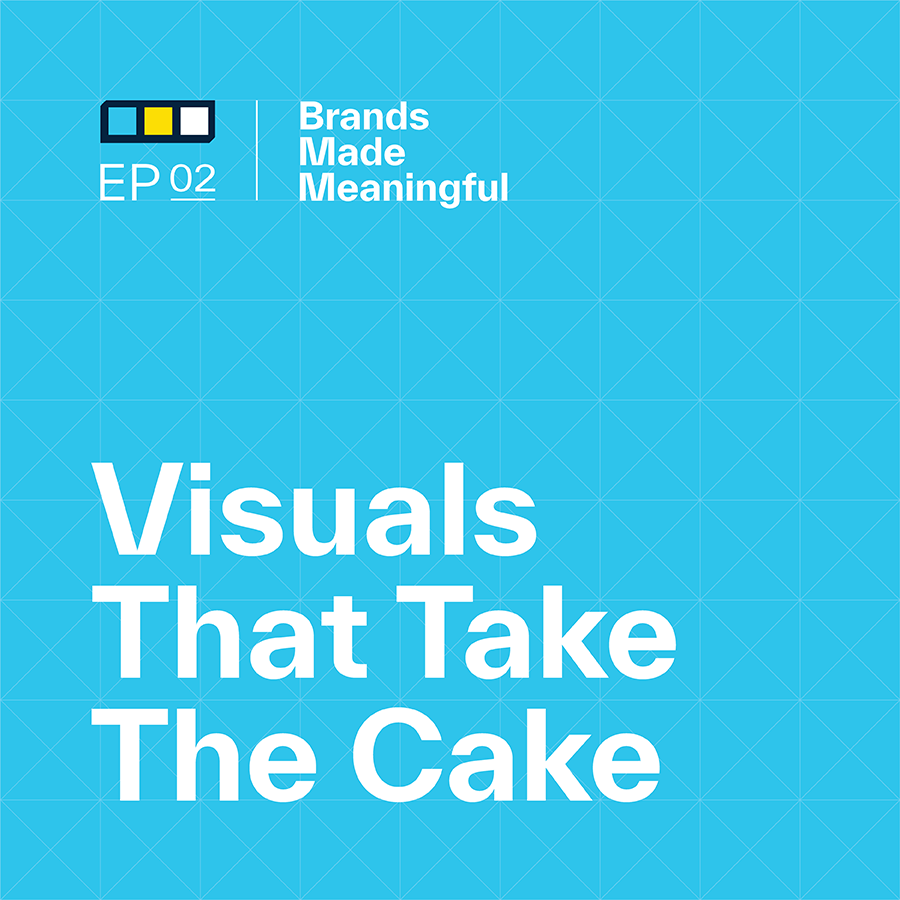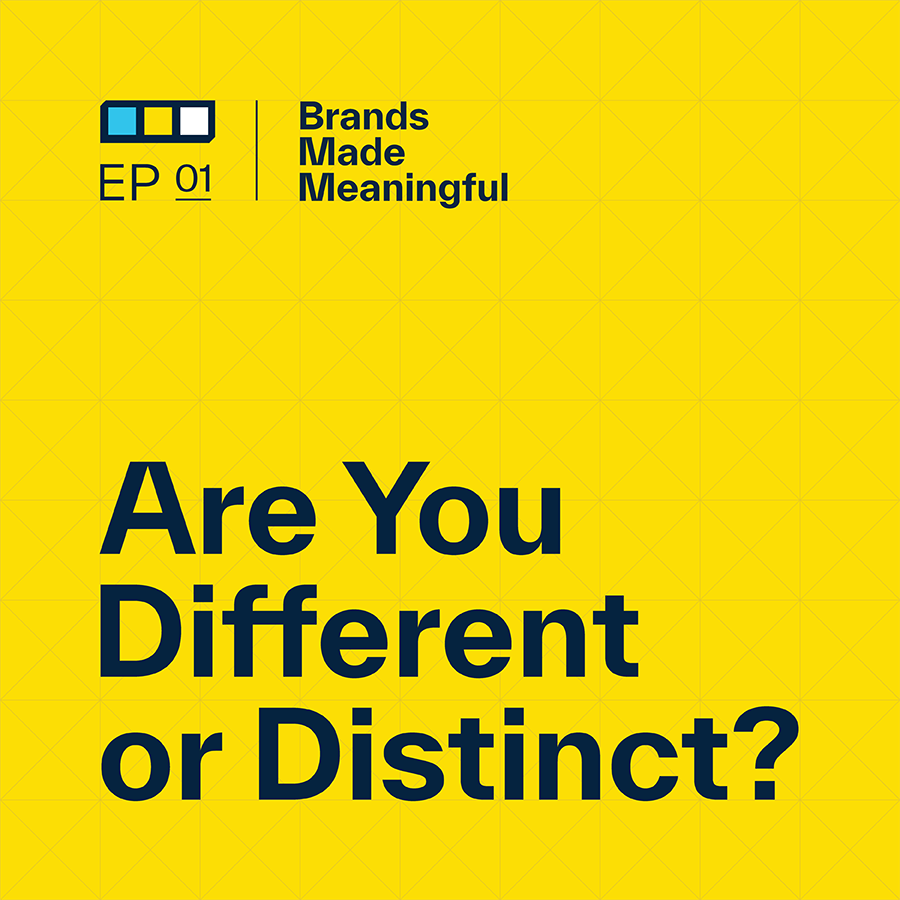EPISODE 25
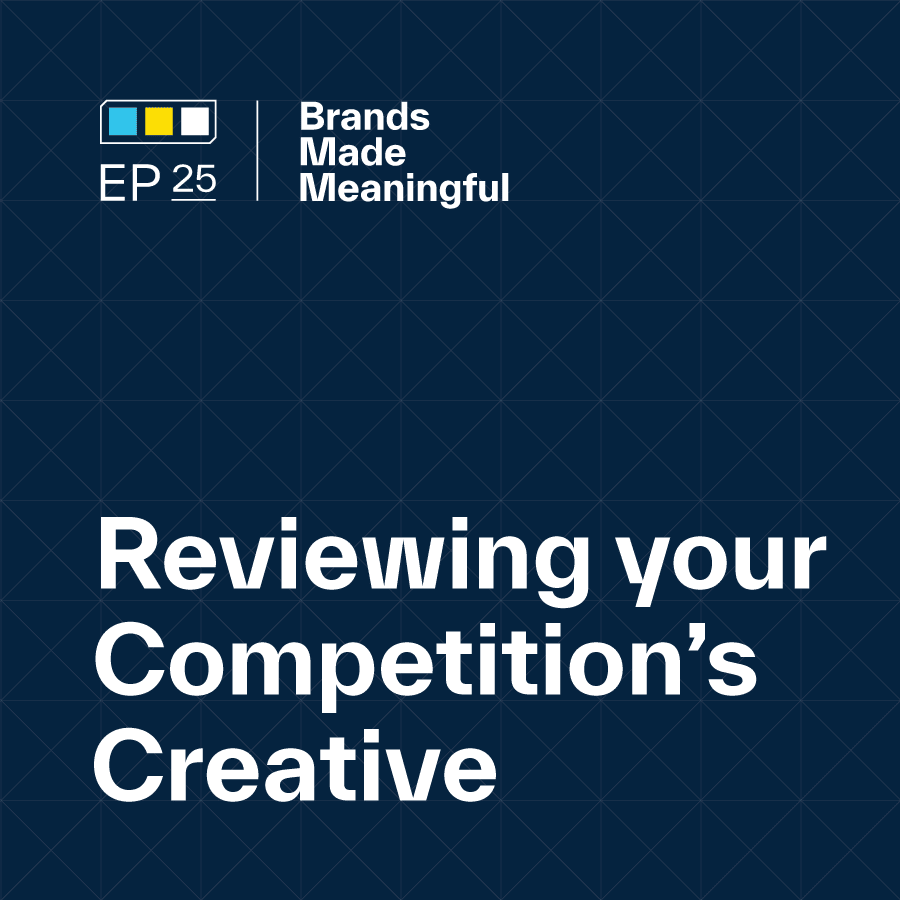
Reviewing your Competition’s Creative
Episode 25
Derek and Tucker discuss the process of reviewing your competitors’ creative strategy to better position your brand within the market.
EPISODE TRANSCRIPTION
One of the things that we often hear come right out of a client’s mouth is calling the attention of a competitor that they deem as being super successful in the market.
Tucker Everybody loves when we look at their competitors or we do a comparative review, competitive review, whatever you want to call it. It’s just looking at the landscape. Who else is out there? What’s going on? It does seem to be a high focus for a lot of leadership. They like to know what other people are doing and why they’re doing it and almost chase them, which we hold back that mindset a little bit. We don’t want to chase people. We want to become our own
Expand Full Transcript
Derek It will just record itself – it’ll be too long. This is very topical. So the conversation today has come directly out of an observation that we just presented to an organization that we’re working with. And what we find is that in starting conversations or even once we’ve been partnered with or hired to help with a brand, either build a brand or refresh a brand or rethink a brand, one of the things that we often hear come right out of a client’s mouth is calling the attention of a competitor that they deem as being super successful in the market.
Tucker Everybody loves when we look at their competitors or we do a comparative review, competitive review, whatever you want to call it. It’s just looking at the landscape. Who else is out there? What’s going on? It does seem to be a high focus for a lot of leadership. They like to know what other people are doing and why they’re doing it and almost chase them, which we hold back that mindset a little bit. We don’t want to chase people. We want to become our own. But there is value in looking at what other people are doing and why it’s successful and how they grab attention and how they hold attention. So if you think about what we’re really trying to do for some of these brands is to create an environment that grabs and holds on to the attention of their customers or their employees. And some people do it really well. So it’s really helpful for us to do a competitive review sometimes. And this is what we’re talking about today.
Derek And we’re kind of diving specifically into one very specific component of the overall branding process, part of the discovery process and understanding the landscape. And I think that it’s human nature to look at how somebody else is doing something successfully and then gravitate, whether you realize it or not, towards doing what they’re doing. If It’s working for them, then it must work for me too.
Tucker We take that idea and say, Well, what are they doing? But then we boil it down to the strategy that they’re taking versus the actual tactic that they’re using. That can be really helpful sometimes to say, Oh, they’re approaching it in this way. We can do that in our own way. But using that same strategy.
Derek And the problem with that is a lot of these conversations, when somebody says, Hey, look at Company X, look how great they’re doing. They’re making assumptions about what their strategy is because they weren’t inside that organization when that strategy was flushed out. They’re either looking at the cosmetics of the results the look and the feel, or they’re just looking at the actual tactics or the language which that other organization is using and saying, Hey, let’s just follow the lead. It’s the Burger King philosophy of saying we’re going to set up across the street from every single McDonald’s.
Tucker And we’re okay being number two.
Derek And we’re okay being almost as good but similar. And you’ll come in. And that’s a valid business strategy.
Tucker Number two makes a lot of money sometimes. But what we’re talking about is that we’re going to go through the more generic version of this, just to say, here’s what we kind of do in approach when we do a competitive review. Specifically, we’re going to talk about identities, visual identities, and then we’ll walk through an example. We’ve done this with a golf course recently, a golf club down in Florida, and it really helped them frame up why they love some and why they hate others, and gets them in the mindset of saying, We’re not trying to be just like that competitor, but we’re trying to use that really successful piece to make yours just as successful or successful in a different way.
Derek Putting up examples of, in this case, logos or visual identities of the other organizations you’re directly competing with or challenged by or chasing is a great exercise to see, to stress test your own and say, How do we hold up? We did this when we were rebranding. McDavid. We literally put up Reebok, Under Armor, Nike, and Adidas, and put McDavid right in the middle and said, If we want to look and feel and act like we’re part of this tier of organizations, does what we currently have hold up? And if not, what can we be thinking about strategically to help tell our story in a visual way that fits in that echelon?
Tucker I think so for McDavid, if people go to our site and look at it, you can tell there’s a different feel to it – the first one versus the refreshed one. It’s a different feel. It matches the sports feel that all of these larger brands have. And that was a competitive review to say we think that these guys do it really well. And what specifically about them do it really well to break that down? So when we’re talking about a competitive analysis or review for a visual identity, I think it’s really hard for people to get away from everything that’s built underneath that visual identity. So if you look at Nike, it’s not just the swoosh, right? It’s not just the way that they have photography. It’s all of this built-in meaning underneath. And so what we have to do is kind of break that down and say, What story are they trying to tell with those visuals so that we can come at this in the right way with our own story?
Derek Exactly. And then establish our own objectives in telling our story in a way that we believe, based on the work that we’ve been doing here for many years, as to what we think will help our customers, our clients, the people that we’re working with do this successfully.
Tucker And the next part of a competitive analysis is to look at it, to know it, and to do that. And then the flip side of that is to throw it all the way and think about it in your own way. To approach it in a different way can sometimes be a really helpful tactic for saying, Well, how are we different? How are we standing out? How are we going to win people’s hearts and minds if we’re just doing the same thing? And so it can be very helpful, but at the same time, we can’t let it control every single action we do. We need to do some other exercises to just break the mold and be our own.
Derek So let’s assume that somebody who’s listening does believe or embraced the idea, the concept that for their brand to be successful, it needs to be distinct and unique, both in its visuals and in its language and telling its own story. So because not everybody does.
Tucker That’s fair.
Derek But the people that hire us do. And so that’s why this story or this conversation’s relevant.
Tucker Absolutely. So why do we do this? Why does it matter that we look at everybody’s? Why can’t we just go and create something like everybody else? Why do we have to look at it and make sure that we’re not like that or that we’re not exactly like our competitors?
Derek To make your customer’s choice easier, to make the decision to hire you, to buy you, to work with you, to join your organization, to make that transaction as easy as possible is the goal.
Tucker How do you create something or give them something to be proud of, to own, to really wear on their chest? And I think that’s our goal to say, If we’re just like everybody else, why aren’t they wearing somebody else’s thing on their chest? So if we can look at all those things and break that mold, it’s going to be way easier for us to win. Like we say here, it’s how you win the hearts, minds, and markets. Well, it’s really hard to win hearts, minds, and markets if you’re like everybody else, because they’re either already winning or there are so many of the same options that you’re not really for anyone. You’re just going to be lost in the crowd.
Derek Exactly.
Tucker So, as a whole, when we look at brand identities, and we’re looking in the visual capacity here, they’re really similar. We do a lot of analysis across a lot of markets in sports, out of sports. And our takeaway for almost every single thing is there is an opportunity here, guys, and that’s no different than when we talked about this example with the golf club.
Derek And when we say they’re not distinct, there’s a visual component to that distinctness, meaning literally the style in which something is created, the colors that it uses. What we’re going to talk about, what we uncovered, was there’s actually also a lack of distinction in the theme, the story, the elements from which somebody pulled to create this visual identity. Logo Lounge is a great publication and website that shares and updates logos that design firms and branding agencies will submit. And they publish a great annual book or recent trend report in which they classified 10,000 logos that were submitted to their most recent publication and literally classified them into 15 different categories of design trends, of look and feel trends. So there’s a challenge here, but the more that we’re aware of the landscape and without getting overwhelmed by, Oh my gosh, 15 trends, nine common themes. That’s why we look so closely at your specific lane.
Tucker Who’s grabbing attention in your industry, not even in your industry, but in your market, is really what matters. But something that you said is interesting to me talking about visual identity. We look at the logo, we look at the style, we look at all that stuff. What if someone who’s listening to this doesn’t have any intention of changing their visual identity? They have no intention of switching up their typeface or their logos or any of the great graphics that they have. And they go, Well, why would I care about any of that stuff? And my argument would be because of the story – if your story is the exact same as everybody else. I know that we’ve done podcasts in the past about story. It’s really critical for you to think of story, not just how your customers interact with you, but what role you play. Who are you? Why does it matter? Why should anyone care about you? That does all matter from the differences. So we can still look at a competitive analysis and say, Here are the stories everyone is telling. Is your story different?
Derek And you could literally sell the exact same product as somebody else for maybe even the exact same price that has the same features and benefits. But your story will be different because your people are different. Your culture is different. The reason why you got into this business in the first place is unique to you. And if your culture’s different, your reasons are different, your why is different, your North Star is different, then your story is absolutely not the same as that other organization.
Tucker We’ve worked with two companies in sporting goods, McDavid USA and then Shock Doctor. And they’re actually competitors. They have different stories. Both wildly successful companies that sell the exact same products but look different and have a different story that they’re telling. And that’s just a really good example of saying you can still exist somewhere and be really successful by not doing the exact same thing.
Derek By finding the people that your products are right for. Your audience will choose McDavid or Shock Doctor because, based on how you present that story, they’re going to align with one or the other. And if they’re the exact same price, the reason they’re going to choose one over the other is because they’re going to feel pulled, aligned, attracted, and engaged with one over the other.
Tucker The other argument that we hear when we do competitive analysis is, Oh, my gosh, these people look at all these different things. We have a big audience. We have so many different pieces of our audience. Why don’t we just be for everybody? We get into this in other conversations. But one of our clients actually came to us last week and told us this. And he said, What you guys talked about that really helped me was to say that if I’m not creating something that opts people out of my brand, then no one’s willing to opt in all the way. And I think that that’s a great example of what you just said. They have different stories, they have different people that they want to opt in, which means that they have different people that they are saying you should opt out because you are not the people that we’re trying to meet. So when we do a competitive analysis, you may sell the same thing, you may have the same output, but you do not have to have the same story. You don’t have to be for the same people. And you can have a really strong brand by just changing that tone.
Derek Well, let’s jump in. So, you know, not everybody who is listening is going to be running a private golf club or is even necessarily a member of a golf club. But if you think about the industry that you’re in and you think about the, let’s just say 3 to 6 people, organizations, institutions that you tend to lose business to or compete with on some level, keep those in mind as we go through this. And I would be willing to bet that in any industry, in any city or region of the country that you’re in, you’re going to start to be able to identify some commonalities across the other organizations, visual identities, and maybe will inspire you to take some of your own action.
Tucker So for this conversation, the last half of this, we’re talking about visual identities. We’re not talking about verbal identities or messaging. We’re not talking about the story. We’re just boiling down visual identities to give someone a deep example of this. But we can absolutely talk about stories or anything else if that’s helpful on a different day. So when we looked at logos and visual identities for clubs and courses around the country, how many did we go through in your review? Do you know the number, the rough number, that you said we actually looked at and how did we even choose who to look at?
Derek We looked at somewhere in the realm of 250 golf course and golf club visual identities, logos. That was inspired in a couple of ways. One, as part of our research and discovery phase with this specific customer, this private golf club, we interviewed a couple of dozen of their members and staff. And we talked to them about other clubs that they’re members of. Many of them are members of multiple clubs. And so they would reference the clubs that they were that they’re members of, say, back home, because this Florida course tends to be their winter destination. Or notable logos of notable courses or clubs that just came to mind to them as ones that, in their perception, were doing it successfully. Then we layered on top of that our own knowledge and our research. I’m a golfer. You’re a golfer. We had the opportunity to visit some fun places. And so again, and as a creative myself, in those fun cool places, I’m looking at what their identities look like and what their logos look like. So pulling from our own research, I would give a huge shout-out to one of my favorite authors, Tom Coyne, who wrote, among several books, a great book called, A Course Called America, where he literally went around the country of the United States and played golf in every state and played every golf course that’s ever hosted a U.S. Open. And he published that list. And so I’ve been referencing the lists in the back of his book.
Tucker And you’ve been going to those slowly because that’s your goal as well.
Derek Very, very slow compared to the pace at which he did it.
Tucker Absolutely.
Derek But so, no, we do it cool.
Tucker Yeah, it’s super cool.
Derek We do our homework and we do our research.
Tucker And so if you look at 250 visual identities, that’s breaking down their website and how they use these things. And people go, Well, it’s just the logo. Why would you care about that? The logo and the visual identity tell a lot about what they value, what they’re trying to showcase, and their position with their visuals on how they’re trying to attract people. So it tells us a lot when you get down to the nuances of visual identities. But 250 seems like a lot. Our biggest takeaway was that most of these fall into eight categories. Eight themes. Only eight. There’s not much diversity in their specific industry in their market.
Derek It’s shocking. I’m trying to think of the word. It’s embarrassing, it’s insightful. And by the way, we’ve worked with other golf courses on brands and this holds up. The categories of the research that we did for another golf course that we’ve worked with recently crosses over these same themes, pretty much spot on.
Tucker The difference between the two clubs or courses that we’ve worked on is one was a local Minnesota course, a public course. It’s very different. We won’t get into the nuances of the actual project. They had a market focus of local. Whereas this club is a private club getting retirees coming from all around the country all year round. That’s a national brand. So it might not be national in our sense where it’s competing with thousands and thousands and thousands, but it does have to compete on the level of people coming from around the country. They have different preferences. So there’s a difference in there. So we didn’t do the 250 club review in the first course that we had branded.
Derek It was probably closer to 100.
Tucker It was 100 local and then this is like 250 national. So there’s this difference. You have a different echelon of what we’re looking at.
Derek The other thing to note, specific to this project that somebody can be thinking about with regards to their own organization, is this golf club is a member organization. It’s not a golf course destination. Pebble Beach is a public golf course that anybody can go to if they’re willing to pay for it. But the member organization is looking for an identity that represents them, that says, I belong here versus a place like Pebble Beach. Their logo can be seen as a souvenir for people to take home that says, I’ve been there. So there’s a retail aspect to attract both. Both are looking to attract people. But for completely different reasons.
Tucker I could make the argument that the club also has to attract member guests, get them to feel like they’ve been somewhere special. But there are differences. The clubs can have multiple marks, some for members, some for guests, some for staff. And so there are a lot of differences within that visual identity. There are eight themes. What do we mean by themes? What do you mean by Hey, we saw eight themes. And this can really summarize the golf club course landscape.
Derek Themes, commonalities, visuals, approaches. Basically, it was eight concepts. As we looked at them and observed them and just started taking notes and putting them up on Post-its and clustering them, these concepts just kept coming up over and over and over again.
Tucker It’s almost like these buckets that you can just slide this brand into that brand and go, Well, these are doing the exact same thing. They’re just in different parts of the country.
Derek Just jump into them.
Tucker So I’m just going to run through those eight themes. I’ll say the name of it and you’re just going to describe what that is really quickly. It’s going to be like a gunshot.
Derek Perfect.
Tucker Here we go. So the first theme was Name.
Derek Name category are clubs that have distinctive names that evoke some sort of recognizable imagery.
Tucker So their visual identity is 100% based on their name.
Derek Represents the words in the name.
Tucker And so like Burning Tree Winged Foot Sandhills, that’s what they literally show exactly.
Derek Winged Foot’s logo is a foot with wings.
Tucker There you go. The second one is Wildlife. What is that?
Derek Golf courses are outside, right? So all of them, every golf course, has some sort of component of wildlife. Birds, by far and away, are the most common. And so it’s super common for a club to choose a bird that’s native to that area to represent itself.
Tucker So we think of Bandon Dunes as a puffin. The logo has nothing to do with the name, but it has to do with the wildlife on the course. The next one is Landscape.
Derek The actual area of where the course is, where the club is, the place itself, its features, notable landmarks, like natural landmarks, which is different than the next category that I’ve just jumped into. But natural landmarks like trees.
Tucker That’s a good way to say it. Like Cypress Point is literally a tree.
Derek Pebble Beach is a tree. Trees, trees, trees, trees, Pine Valley’s a tree. And these are some really, really high-end, exclusive, highly respected golf courses. We just rattled off three of the top probably five-rated golf courses in the country. In all three of them, their logos are trees.
Tucker You said Pebble Beach. That leads us to our next one, which is actually a Landmark. What do we mean by a landmark?
Derek Landmarks are visually recognizable, iconic objects that are on property. So Pebble Beach can fall into this category, too, because their tree logo is actually the logo that sits on the 18th hole in the middle of the fairway.
Tucker It’s actually the tree, right?
Derek It is.
Tucker It’s not just any tree. It’s legitimately the tree that you see. So if we think of lighthouses or we think of some other stuff that’s like, Oh, I played there and I played around this lighthouse or this barn, that’s exactly what the logo is. The visual identity is around that. The next one has to do with History.
Derek History gets a little bit more interesting – logos that are based on or tell the story of how a club got there, why it got there, maybe even what happened on the land right there years and years or decades before the golf course was even built. But what we always preach is that your story is not your history. So it’s a nod to where you’ve been in some way, shape, or form, but it isn’t necessarily forward-thinking.
Tucker So I think of Seminole down in Florida has to do with the Native Americans on the land. And so their visual identity is represented by that. The next one is Location.
Derek There are a couple that come to mind, not used as often, but are literally physical shapes or representations of the area, the place, the geography. We’re in the state of Minnesota. How many logos do you see on a daily basis on trucks and vehicles and billboards where the shape of the state of Minnesota is included in that logo in some way, shape or form? So Augusta National is the shape of the state of Georgia with a flag placed approximately where Augusta sits. So the shape of a state, the shape of an area, the shape of a lake.
Tucker We are amazed at how many state shapes are used in visual identities for small businesses. And even large businesses use it too. But it’s amazing. It’s like, Wow, you guys really deem that to be the most important part of your identity. The next one is Tradition. So what do we mean by Tradition?
Derek I keep wanting to say this is the most common one. But trees and birds are probably the most common – I mean, they’re all the most common. Crests, emblems, shields, monograms. You see it all the time, especially prevalent in the private club space or country club space versus public golf courses.
Tucker We think of Oakmont as a big one – a very popular one. But even if you go to country clubs in regional areas, like if you look up the Kansas City Country Club, that’s exactly what we’re talking about. It’s like a K and C in a C on a shield and that’s what it is. And that’s the most common thing we saw. You could say birds, but there’s not much more common than shields.
Derek And when you consider that most of these clubs are either golf club or golf course, that means it’s a letter or two letters with a GC on it. So the Oakmont is OCC. I played at a course last week that’s WCC. There’s actually multiple WCCs right in our area. So you can style it and it can be part of your identity but you’re going to have a really hard time being distinctive with just a monogram.
Tucker The last one is Golf – the golf theme.
Derek Maybe this one is the most common – golf clubs, golf flags, golf balls, golfers, golf silhouettes, golf tees – any aspect that has something to do with recognizable as golf. I get it. It’s easy and it identifies. So let’s combine your monogram with a golf club or a golf ball or a golf ball on a tee and it then puts that visual in the golf industry in some way.
Tucker Absolutely. I’ll go through them really quickly one more time. There are eight that we talked about. And it is visual identities that all revolve around either the name, wildlife, landscape, landmarks, history, location, tradition, or golf itself. When we step back, what do we do with this for them specifically? What do we say? Okay, here are the eight. There you go. But what do we do with it?
Derek We actually walked through and shared this with them to help have a conversation on why falling into one of those categories, either intentionally or accidentally, would be a mistake in telling this specific club story.
Tucker When I talk with clients about our process and the discovery section within our process and they go, What are the outcomes? What do we want to get out of the discovery? And there are a lot of things we want to get out of it. It’s getting awareness, building a base of knowledge based on who you are, who your competitors are, and doing all this other stuff. Another goal for the Discovery session is to change the mindset that some people have going into the project. People go into a brand project thinking, Okay, how can we be just like this person? How can we be just like that person? That mindset’s really dangerous. So for this specific project, we had someone come in and go, We want to be just like Augusta National. And for us to go, Okay, yeah, I get it. That’s cool. Let’s look at all these other ones and then let’s have a conversation about that. This conversation is really to frame up why that brand doesn’t fit what you have to offer. So it doesn’t make sense that your club would want to be Augusta National because Augusta National is the only Augusta National out there. And so that goal of mindset shift can really be easier for everyone if they have a good picture of what’s going on. The clarity that we get out of these things can really help frame up how you fit within this landscape or where you have opportunities in this landscape.
Derek What you just said at the end is where I was going. It unveils the opportunity that you have for yourself, for your brand.
Tucker We work with April Siefert. She is our partner in data and, you know, all smart science things.
Derek Doctor.
Tucker Dr. April Siefert – shout out to her. She has a lot of stuff going on that’s super cool. She says this would help us find our blind spots. Where are we not seeing something? Where can we be smarter? And how can we find a hole, a gap, in this market or in this landscape that we can really own? And I think that this is the first step to giving you that visual taste of, Hey, you see all these things here? We have the opportunity to not be like this, or we have the opportunity to combine a bunch of these things and really own it. I know we’re running out of time and we’re probably over time because that’s how it almost always goes in these conversations. But the last thing that I would really love for you to do, and I’ll ask you about it, is to give us one example of someone who does this really well in the golf space, because we just went through a bunch of things. One person that does it really well, that goes, Wow, well, we just couldn’t find a bucket for this because it’s so interesting and so different. And then one that you think people overhype, they overuse as an example, and it’s just really hurtful when you look at it from a golf perspective.
Derek I’m going to flip it. I’m going to answer in reverse and say, because you just said it, the one, the logo. And I apologize. I’m a golf fan and the Masters is my favorite professional golf tournament of the year. But the logo that I think is the least successful in creating distinctiveness or the nature of the spirit, the place, the culture or what that club is about is Augusta. And my challenge is, is the United States shape filled in yellow with a flag in it, is that successful design and successful storytelling? Or has Augusta just earned distinctiveness in your mind because of years and years and years of brand awareness and reputation and being on TV and hosting an amazing visual and exciting golf tournament?
Tucker And to say, can you pull that off as well? If you are a club in, I don’t know, North Carolina that’s trying to do this and you go, Wow, I really like Augusta National’s. And I think our pushback would be, Do you have the reputation and the authority nationwide to be pulling something like that off?
Derek And that’s a challenge, I would say to anybody, when somebody says, Oh, we think a logo that’s really successful is, fill in the blank. One of the first things that I’ll pause and think about is, is that logo truly successful because of the visual distinctiveness, the creativity, or one of the other objectives that we would check it off against? Or is it just because that organization has the budget to market it and create brand awareness so it’s actually top of mind? Do you like it because you’re aware of it or because it’s truly successfully created?
Tucker I think a good approach for us would be to break down that Augusta National brand one day on this podcast to talk about the things that it does really well and how people can utilize that in the golf space because it’s a really interesting conversation.
Derek Love it.
Tucker What about someone that you can look at as a guiding star of saying, Wow, that is such a great approach. I can’t believe they did that.
Derek There’s a handful of them. The one that I’ll talk about doesn’t really include any of those other eight categories. Sometimes successful logos, specifically in the golf space, will include several of those categories. But the ones that really stand out invoke a story and talk about what the essence of this place is. And for me, the one that really stands out is the Whistling Straits logo from the properties in Kohler. Everybody thinks of it as Kohler, but Sheboygan, Wisconsin.
Tucker I love that name. Sheboygan. It’s fantastic. Terrible sausages, but just a great, great name for a city.
Derek We just lost that potential Sheboygan sponsorship.
Tucker I’m a Hormel guy anyway.
Derek Fair enough. I’ve been doing some reading on this recently because I was so interested in it. And they hosted the most recent Ryder Cup that was here in the United States. The actual plot of land that it was built on next to Lake Michigan was a very indistinct, flat piece of land. And Herb Kohler, who developed this property, his goal, his mission was to create an Irish seaside golf links experience in the United States. And so they did it. They did it in the earth, in the land, in such a way that I think it feels and looks natural. You have no idea the amount of earth and things that they moved around.
Tucker So, right now, people are probably listening and saying, Derek, what? Who cares? What does that have to do with their visual identity? And I know I just totally derailed you.
Derek It’s totally fine. It’s the storytelling that this symbol evokes that stands out and represents the experience and the essence of being there and playing there like nothing else I’ve ever experienced.
Tucker If you think about it, if it’s called Whistling Straits, they could have done a WS.
Derek Crisscross golf clubs.
Tucker Crisscross golf clubs. And it would have been like, Wow, what a great course. But it wouldn’t have been something that’s truly memorable. It’d just be another great course. It wouldn’t be something like, Wow, that experience, the visual identity matched the experience I had. And that’s the goal. That is the upper echelon of getting this right – to match that experience, to create the visual experience that matches the physical experience. And I think a lot of people take that for granted.
Derek And how we get there starts by doing your homework.
Tucker And I hated homework when I was a kid. Oh, my goodness.
Derek Depends on what kind of homework it is. Looking at golf course logos is actually a little bit easier to accomplish – an easier type of homework. So do your homework. I think that’s our main takeaway.
Tucker That’s a good one. I think for all the kids listening – they’ll appreciate that one.
Derek Do your homework, stay in school, drink your milk.
Tucker Stay in school, because one day you might be able to look at logos for a living.
Derek Right on. Thanks. Talk to you guys next time. If there’s a subject or topic that you would like to hear, please shoot us a message and we will add it to our queue. Sussner is a branding firm specializing in helping companies make a meaningful mark, guiding marketing leaders who are working to make their brand communicate better, stand out, and engage audiences to grow their business. For more on Sussner, visit Sussner.com.
More Episodes Like This
Taking Care of the People Who Take Care of PeopleEpisode 90
Derek and Tucker are joined by Craig Pratt, co-founder and board chair of the nonprofit organization Holes Fore Hope.
Reviving New Member InterestEpisode 89
Derek and Tucker explore options for generating interest among prospective members and inspiring them to join your club.
Brand Through the Eyes of a Club Manager & Consultant with Chris CoulterEpisode 88
Chris Coulter, Vice President of Club Consulting with the McMahon Group, joins Derek and Tucker to discuss the intersection of branding and consulting in private clubs.
Evolving Member ExpectationsEpisode 87
Derek and Tucker dive into the differences between generational club members, their wants and needs, and how to balance out expectations across the board.
Winning the Talent Game with Tom WallaceEpisode 86
Tom Wallace of Kopplin, Kuebler, & Wallace joins Derek and Tucker to discuss the importance of a club’s brand in hiring and retaining right-fit employees.
Reclaiming Reputation Through Brand RevitalizationEpisode 85
Derek and Tucker discuss the potential that a branding initiative can have to restore a club’s reputation.
Branding The Club with Don KovacovichEpisode 84
Don Kovacovich, GM of The Club at Golden Valley, joins Derek & Tucker to discuss the impact that rebranding has had on his club and the opportunity it presents for other clubs
Changing a Club’s Membership ModelEpisode 83
Derek and Tucker discuss key considerations and challenges when changing your club’s membership model.
Connecting a Club with its Story with Jackie CarpenterEpisode 82
Derek and Tucker are joined today by Jackie Carpenter, author of People First.
Branding a Club AnniversaryEpisode 81
Derek and Tucker discuss the unique opportunity presented by milestone and anniversary dates for private clubs.
Private Club Storytelling with Ricky L. Potts, Jr., CCMEpisode 80
Derek and Tucker have the pleasure to speak with Ricky L. Potts Jr. about how powerful storytelling can be for your club members.
Opportunity in Club Facility RenovationEpisode 79
Derek and Tucker discuss pivotal key moments in your legacy and how to transform your story through renovation.
The Evolution of Club Members with Jon LastEpisode 78
Derek and Tucker are joined by Jon Last from Sports & Leisure Research Group to discuss the evolution of club members.
Member Branding vs. Product BrandingEpisode 77
Derek and Tucker discuss the challenges their client's have moved through when approaching differing styles of branding.
The Role of a Private Club's LogoEpisode 76
Derek and Tucker take a look back on private club logos they've designed over the years and explain the strategic reasons behind their choices.
Club Brand GovernanceEpisode 75
Derek and Tucker divulge the steps to evolving your brand while retaining your core values.
Seasonal Member MerchandiseEpisode 74
Derek and Tucker take a look at crafting specific merch to celebrate landmarks and special times of the year.
Who is Sussner?Episode 73
Derek and Tucker take a break from talking shop to talk about who they are and what they stand for.
Club Identities Beyond AmenitiesEpisode 72
Derek and Tucker discuss what it takes to stand out in unique ways for your club.
Little Things Mean EverythingEpisode 71
Derek and Tucker take a look at the often missed and easy to overlook.
Build Flexible Brand SystemsEpisode 70
Derek and Tucker break down the building blocks for long lasting branding.
The Club at Golden ValleyEpisode 69
Derek and Tucker take a close look at one of their recent rebrands.
When to Launch a Club RebrandEpisode 68
Derek and Tucker break down how to find the perfect timing when launching a club rebrand.
Steps to Launching a Club RebrandEpisode 67
Derek and Tucker break down the steps to take and the reasons why you should consider a club rebranding.
Brand Marketing vs. Brand DesignEpisode 66
Derek and Tucker define the line between marketing and design and how they intersect to inform one another.
Building Brand GuidelinesEpisode 65
Derek and Tucker show us how to build infrastructure guidelines to unify your brand experience across the board.
Club Identity SystemsEpisode 64
Derek and Tucker cover what Identity Systems entail and how to discern between internal and external methodologies.
Navigating Branding With a BoardEpisode 63
Derek and Tucker bring clarity to uniting your company under one cohesive vision.
Putting a Committee TogetherEpisode 62
Derek and Tucker assemble your need-to-know facts when putting together your committee.
The Guiding Principles of Private ClubsEpisode 61
Derek and Tucker go over the top ways private clubs can find the balance between pleasing old members while attracting new ones, all while making moves towards the future.
How Color Affects PerceptionEpisode 60
Derek and Tucker cover how to best convey your business with color.
Brand EcosystemsEpisode 59
Derek and Tucker break down how to craft effortless experiences when considering your brand as a whole.
6 Types of Brand TransformationEpisode 58
Derek and Tucker dive into 6 distinct types of transformations for a wide range of brands.
Tournament Branding For ClubsEpisode 57
Derek and Tucker discuss designing and delighting your club members with tailored events.
Brand Promoters & DetractorsEpisode 56
Derek and Tucker discuss how high level promoters increase your NPS and how to turn the tides on your detractors.
The Loudest Voices in the RoomEpisode 55
Derek and Tucker talk about gathering feedback while prioritizing every voice.
Determining A Primary AudienceEpisode 54
Derek and Tucker discuss if and when you should be honing in on your audience vs. casting as wide a net as possible.
Branding For ExclusivityEpisode 53
Derek and Tucker discuss the intricate process of naming your brand.
Measuring Brand SuccessEpisode 52
Derek and Tucker discuss how we measure our success in branding and a few key KPIs that help us understand our impact.
Branding For ExclusivityEpisode 51
Derek and Tucker breakdown how brands can create the perception that they are exclusive and only for a certain type of consumer.
What Makes A Brand SurprisingEpisode 50
Derek and Tucker break down the Sussner formula that we believe leads to a surprising brand.
Breathe Life Into Brand TraditionEpisode 49
Derek and Tucker discuss the intricacies and common pitfalls of branding for Private Golf Clubs.
They Key of Visual DifferentiationEpisode 48
Derek and Tucker break down the importance of differentiating your brand on a visual level.
Branding For Private GolfEpisode 47
Derek and Tucker discuss the intricacies and common pitfalls of branding for Private Golf Clubs.
Dealing With An Identity CrisisEpisode 46
Derek and Tucker breakdown how to identify and remedy a brand's identity crisis throughout thoughtful and intentional brand management.
Branding vs MarketingEpisode 45
Derek and Tucker discuss the differences between Branding and Marketing and how to make the two compliment each other.
Build Your Brand's FoundationEpisode 44
A brand's foundation is a critical element in being successful in the long-term.
Building a Constructive Branding ProcessEpisode 43
Derek and Tucker break down the steps required to build the most constructive and meaningful branding process.
What Makes a Brand Relevant?Episode 42
Relevance is a key piece of a brand's identity for creating clarity and connection.
Your Right to WinEpisode 41
Derek and Tucker discuss the “Right to Win” and the odds of your brand's success within your target market.
An Intro to Sub BrandingEpisode 40
Derek and Tucker discuss the nuances of developing sub-branding and strategies.
Conquer Branding FearsEpisode 39
Derek and Tucker dive into how to overcome the fear of change and the nature of constant refinement of your brand.
Balancing Strategy & DesignEpisode 38
Great strategy is a necessary foundation for great design—and great design brings great strategy to life.
Branding PrioritiesEpisode 37
Branding priorities are the actions and initiatives that shape or enhance a brand's identity, perception, and market position.
Invest in Your BrandEpisode 36
Investing in your brand benefits your company as a competitor in the marketplace, builds trust with customers, increases perception of quality, and drives employee engagement.
Why is Positioning Scary?Episode 35
Narrowing the brand's position is really a strategic decision to focus the brand's offerings, messaging and target audience on a specific niche or segment within the market.
What Are Brand Consultants?Episode 34
Derek and Tucker discuss the importance of hiring expertise with a wider breadth of knowledge than just visuals.
Hire for Brand FitEpisode 33
Hiring people that fit your brand is key in order to maintain brand authenticity, positive culture, and consistent messaging.
Your Brand’s Stance MattersEpisode 32
Your stance can help define your brand from a core level and make branding, hiring, and marketing not only easier, but more meaningful.
Levels of Executing a Brand RefreshEpisode 31
If you have a brand strategy in place, how do you execute it?
The Role of Features & BenefitsEpisode 30
Derek and Tucker discuss the importance of features and benefits within the context of branding, selling, and marketing your products and services.
Should You Listen To or Lead Your Customers?Episode 29
Within the challenge of any rebrand is the challenge of managing customers' perception of change.
Managing a Brand TransformationEpisode 28
Episode 28 discusses the highlights and challenges of rolling out a new brand, both internally and externally.
Living Your BrandEpisode 27
Your brand is not this shiny trophy on the shelf. It is something that you are molding every single day.
What Makes a Brand Authentic?Episode 26
Season 2 starts off with a discussion about building authentic brand experiences, both internally and externally.
Reviewing your Competition's CreativeEpisode 25
Derek and Tucker discuss the process of reviewing your competitors' creative strategy to better position your brand within the market.
Interviewing your Audience for InsightsEpisode 24
This episode details the process and benefits of interviewing your audience as part of the branding process.
Assumption ReversalEpisode 23
Derek and Tucker discuss how we change our thoughts and get into a different mindset to refine and revise our branding.
Developing vs. Amplifying a BrandEpisode 22
Another way to say it is, development is building and crafting your brand story, and amplification is then telling it.
Refreshing a Sporting Goods BrandEpisode 21
This episode shares the steps behind Sussner’s work in refining the Shock Doctor brand.
Defining PerceptionEpisode 20
Derek and Tucker discuss the positive and negative impacts of brand perception.
What is a Brand?Episode 19
Derek and Tucker discuss what defines a brand and what makes them successful.
Branding Golf Courses vs Golf ClubsEpisode 18
Derek and Tucker further hone in on golf course design.
Refreshing a Golf CourseEpisode 17
Derek and Tucker discuss the bar for golf course design – and how to push past it.
Let’s Talk Taglines Episode 16
Derek and Tucker talk taglines in today's episode.
Refreshing an Athletic DepartmentEpisode 15
Derek and Tucker sit down today to discuss what logos mean within branding.
Branding a Club Episode 14
Derek and Tucker discuss how to brainstorm branding a club.
An Intro to Internal Branding Episode 13
Derek and Tucker discuss the power behind internal branding.
The Value of Stereotyping Episode 12
Derek and Tucker sit down today to discuss the meaning of stereotyping within the branding world.
We’re on a Mission Episode 11
This episode digs into the rallying cry for the greatness your team is going to accomplish.
Aren’t Brands Just Logos? Episode 10
Derek and Tucker sit down today to discuss what logos mean within branding.
The Business You Are Really In Episode 09
Derek and Tucker sit down today to discuss how to discover what business you are really in to better understand your mission statement.
Clarity of Vision Episode 08
Derek and Tucker discuss the importance of looking ahead towards the big picture to better hone the purpose behind what we do in the now.
Branding B-2-B Environments Episode 07
Derek and Tucker discuss the Branding of Spaces.
It’s All in the Name Episode 06
Derek and Tucker discuss what a name can say - and not - about your company.
Delving Into Branding Data Episode 05
Derek and Tucker jump into the discovery phase of branding before it hits the drawing board.
Content Made Meaningful Episode 04
Today Derek and Tucker discuss the concepts within content and its common misconceptions such as the phrase "Content is King."
Brand Story vs. Brand Messaging Episode 03
Your story matters.
Visuals That Take The Cake Episode 02
Derek and Tucker sit down to discuss visual impact and what that could mean for your brand.
Are You Different or Distinct? Episode 01
It's not about being the only option, it's about being the right option. Join Derek and Tucker as they discuss Differentiation & Distinction.




